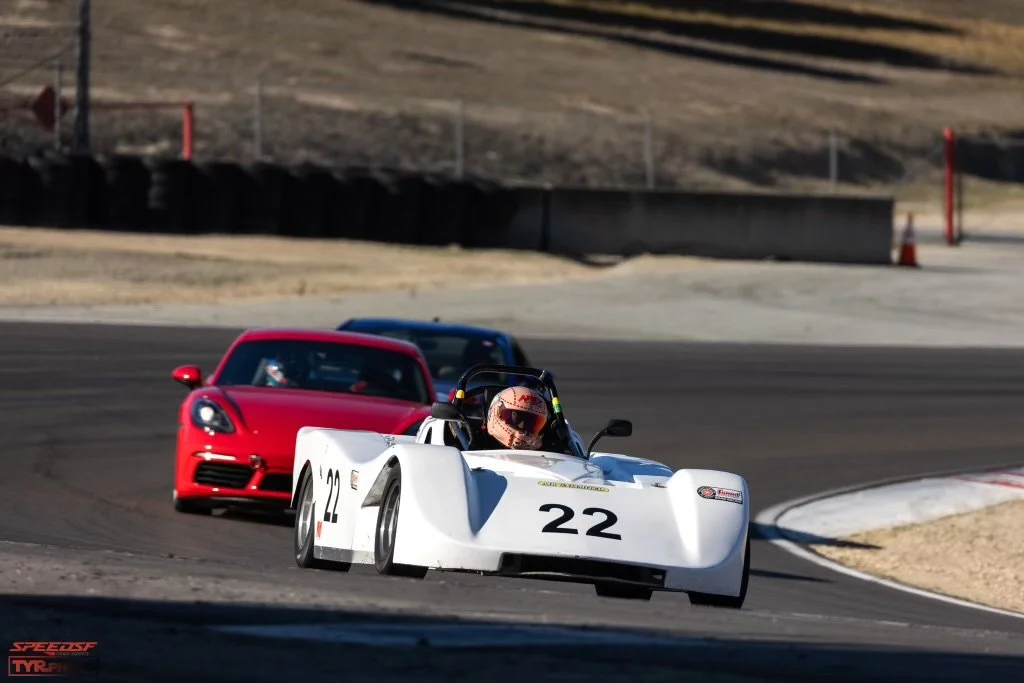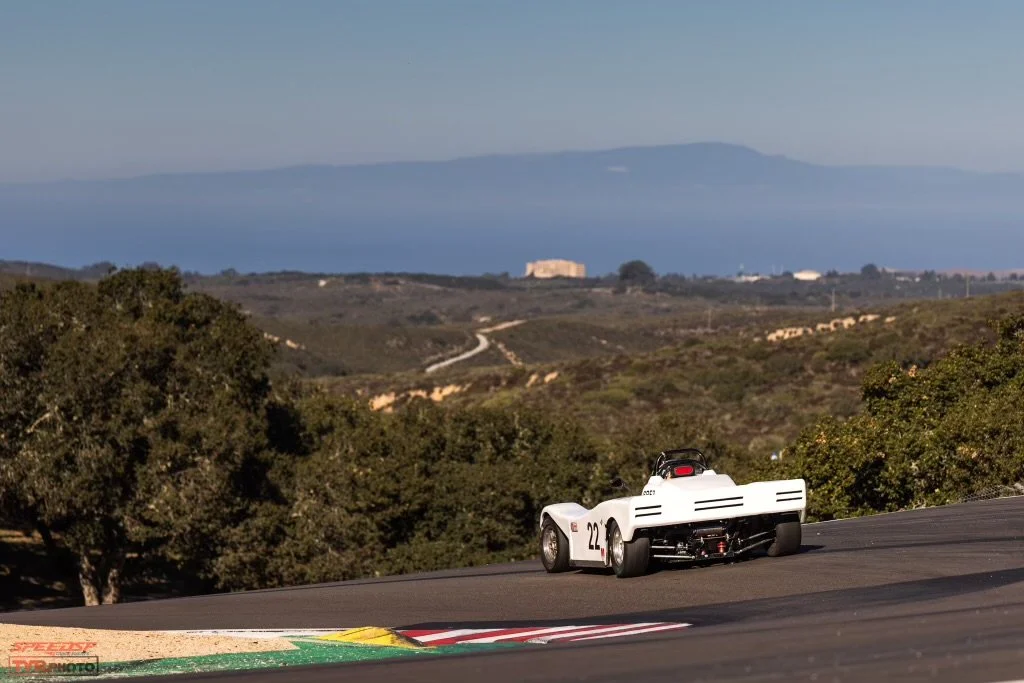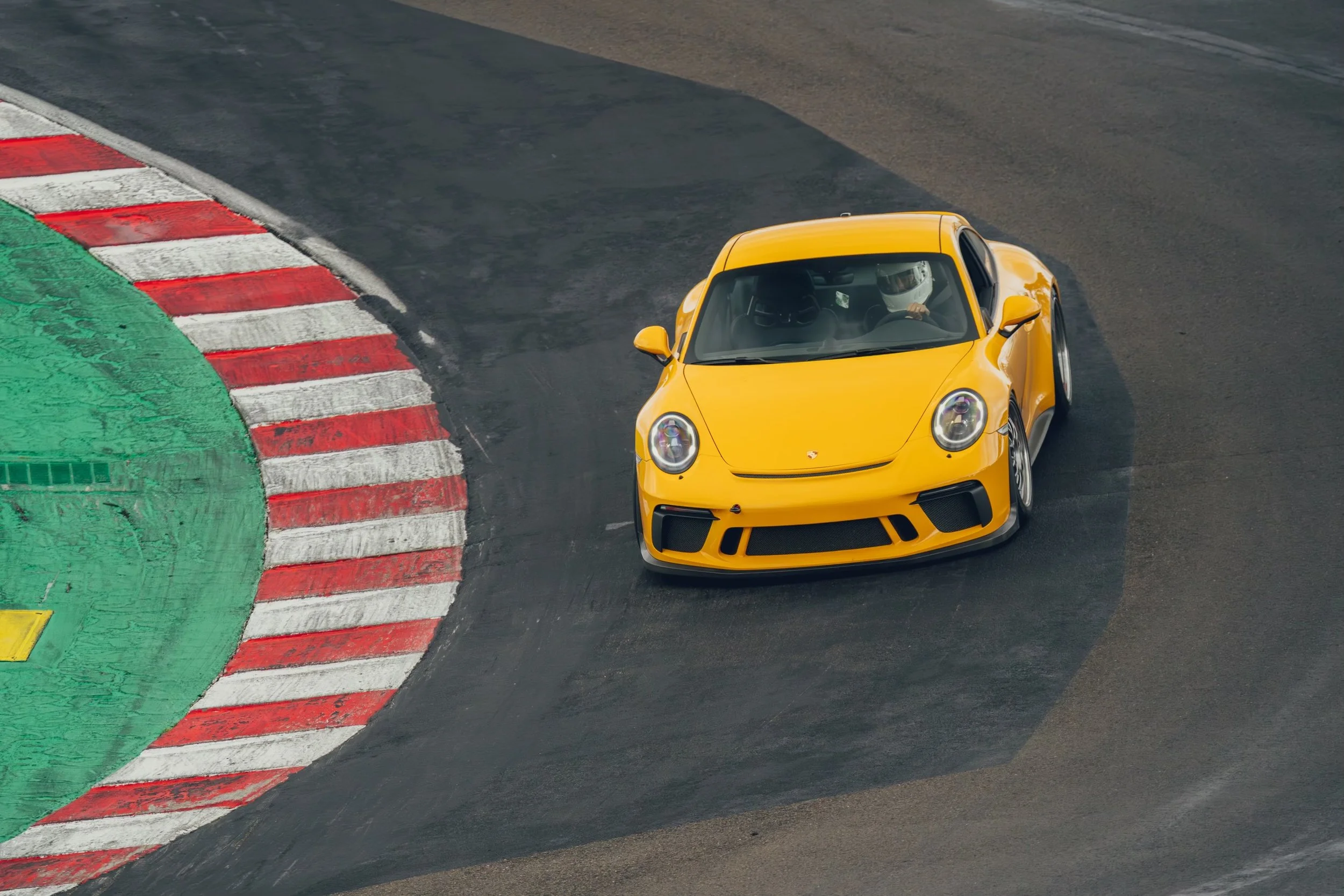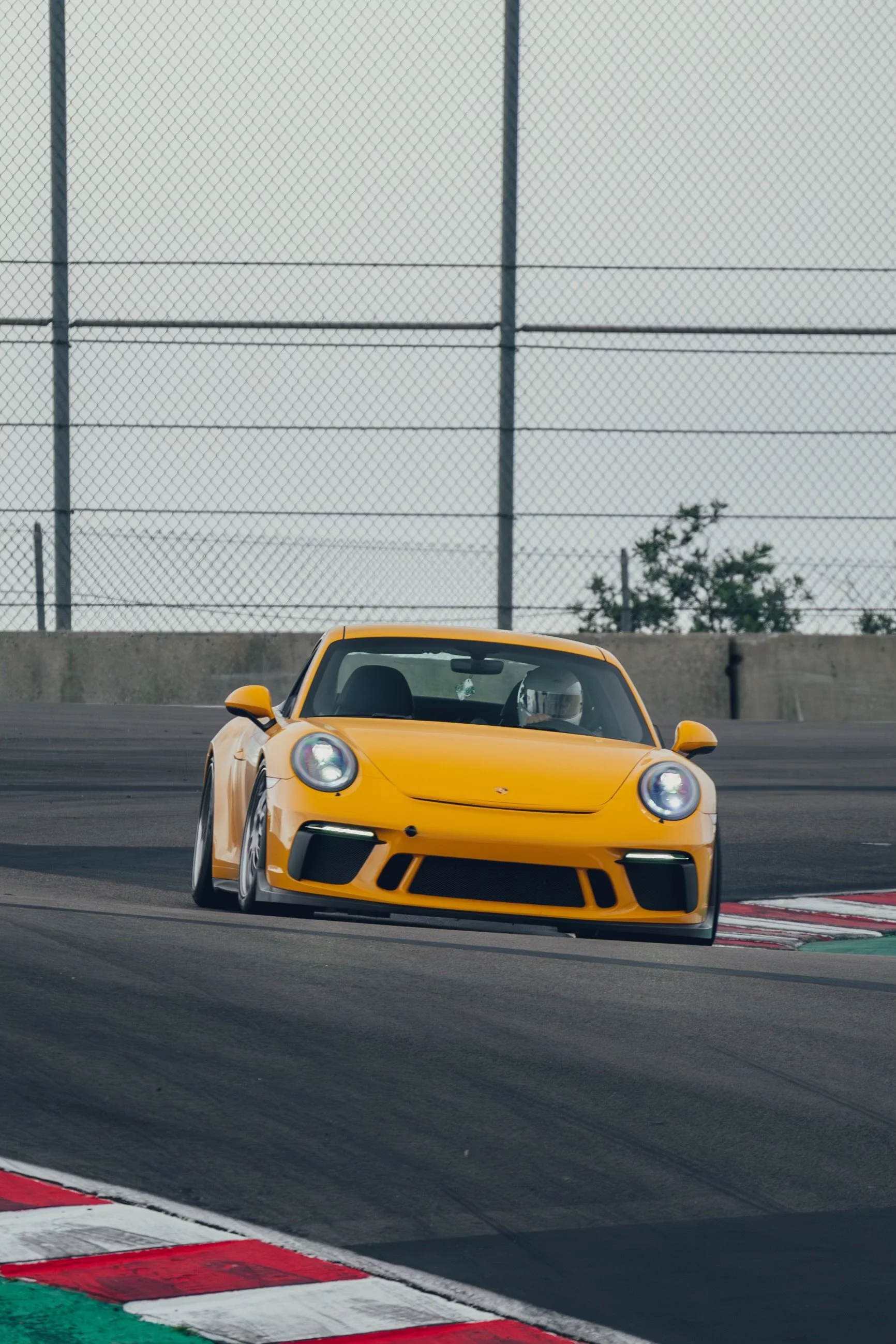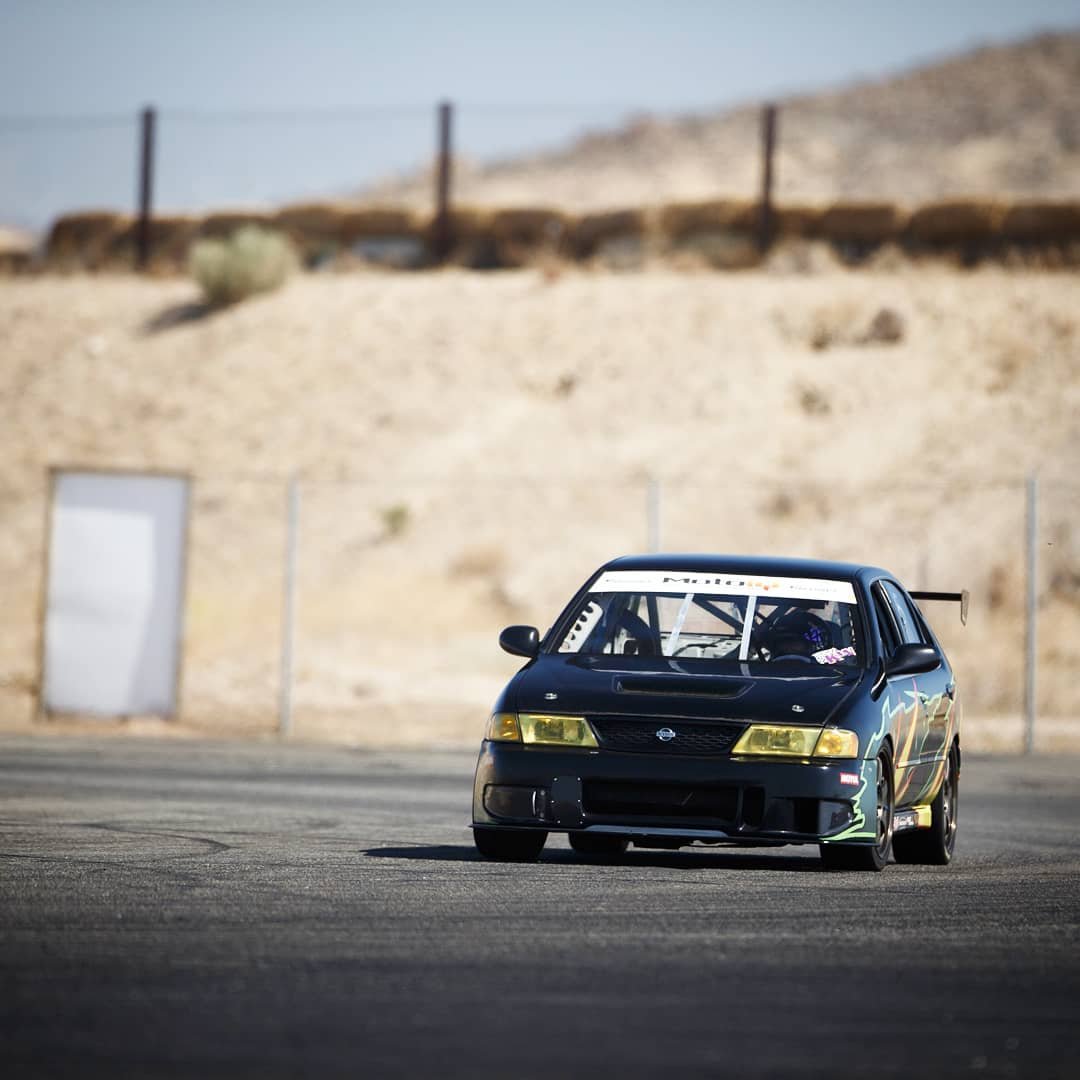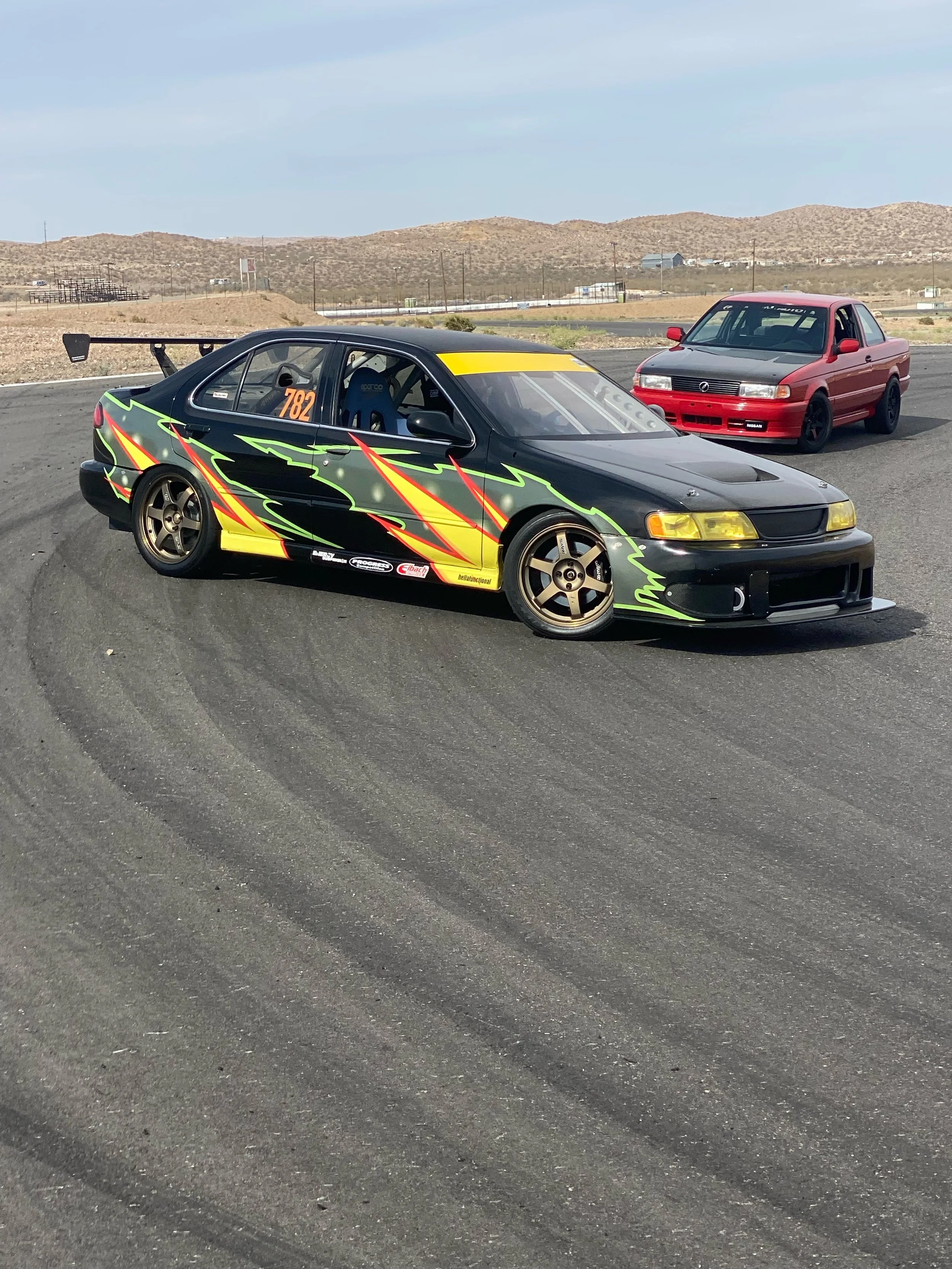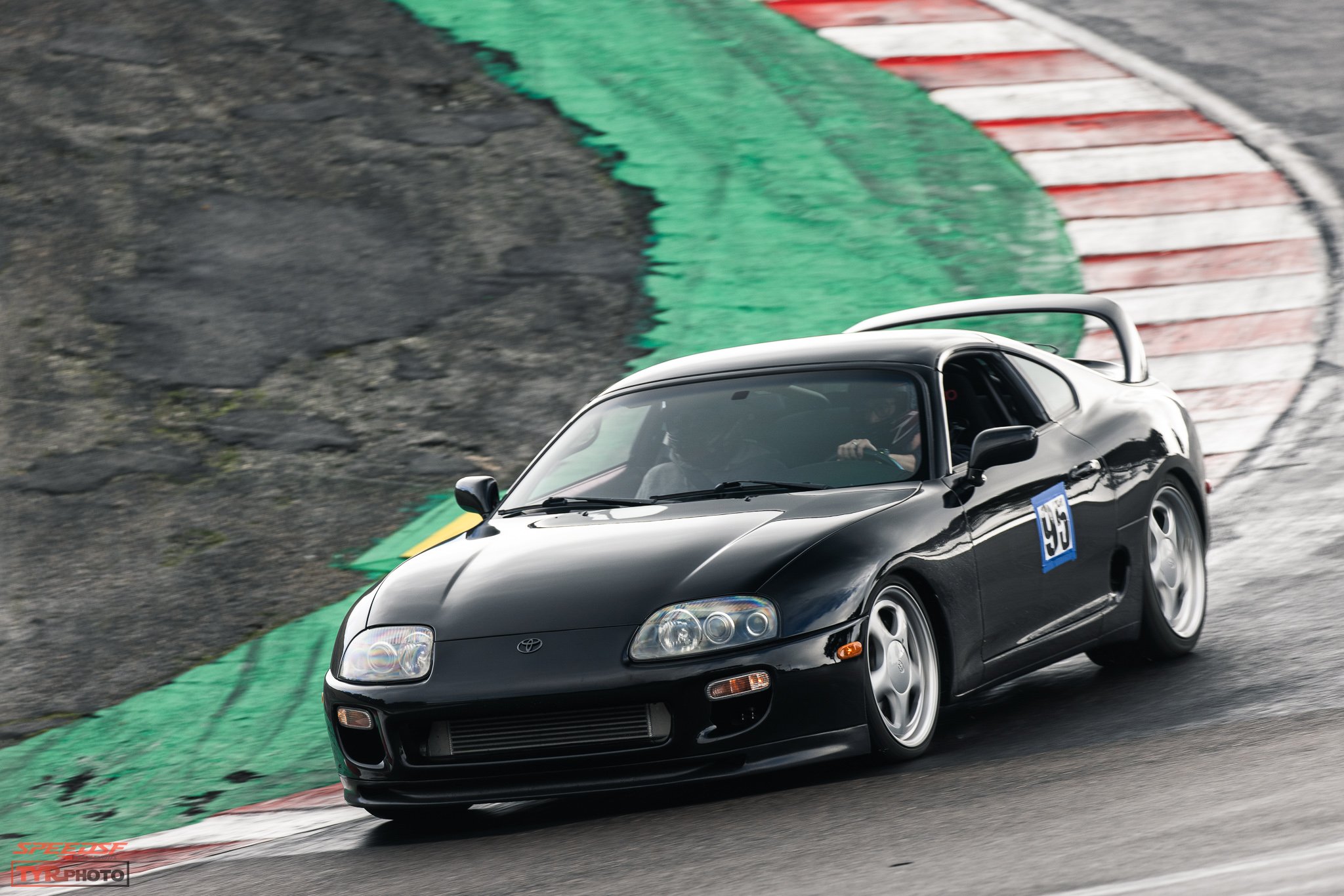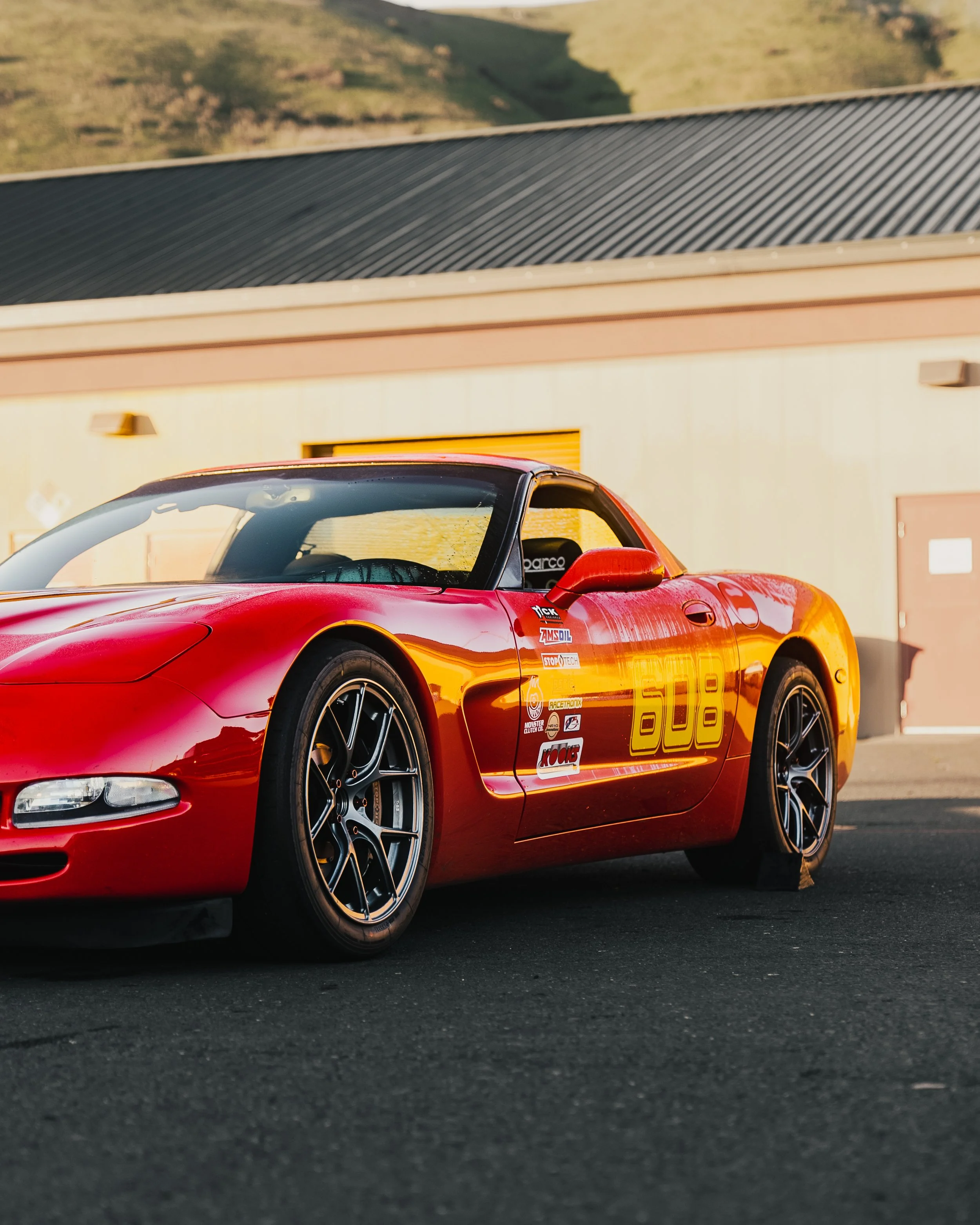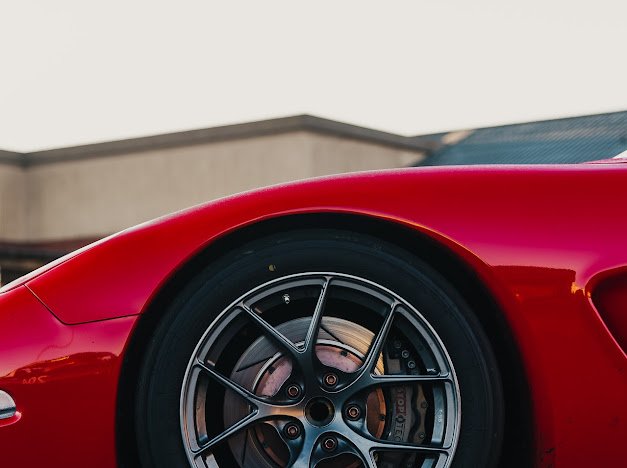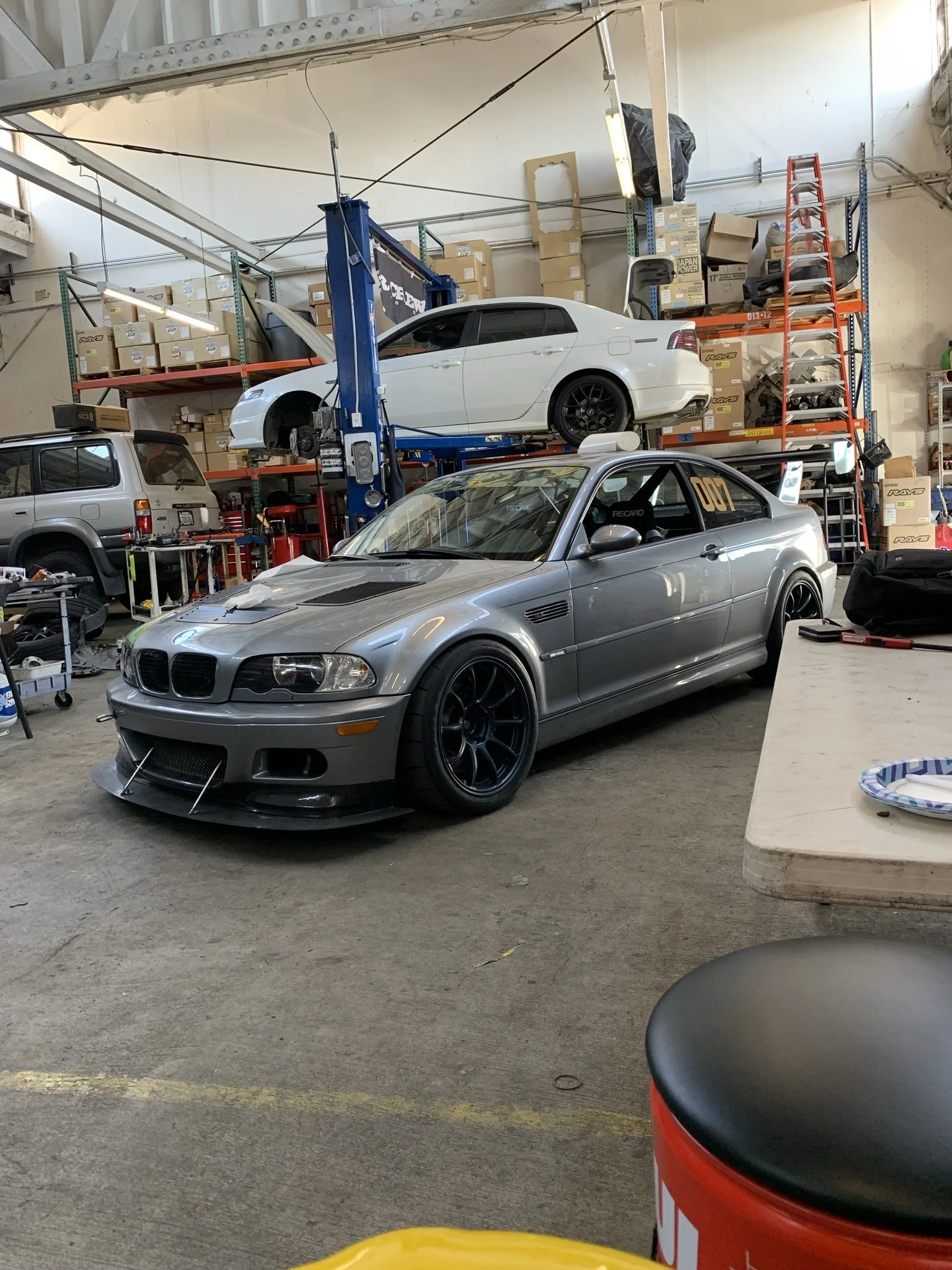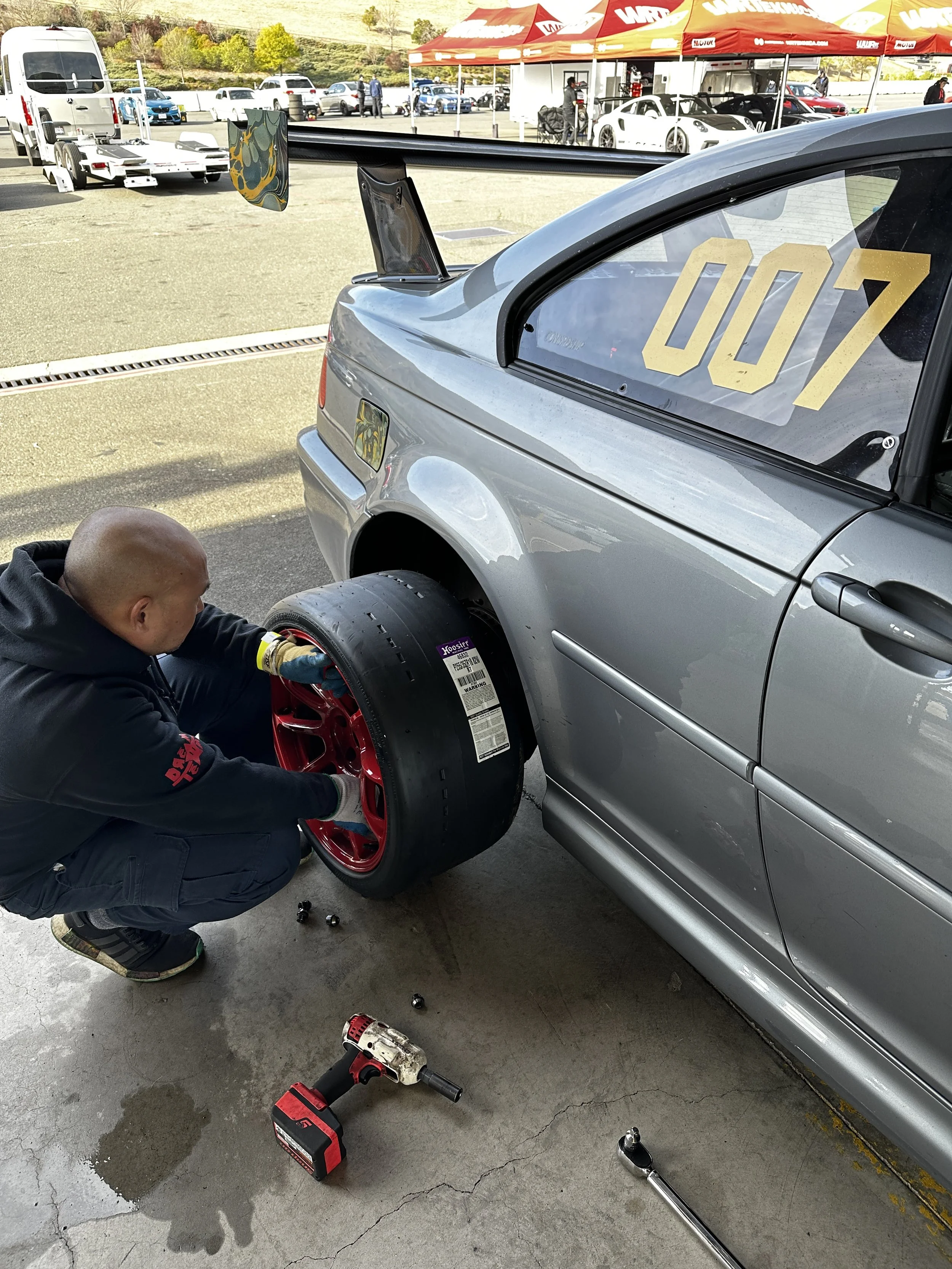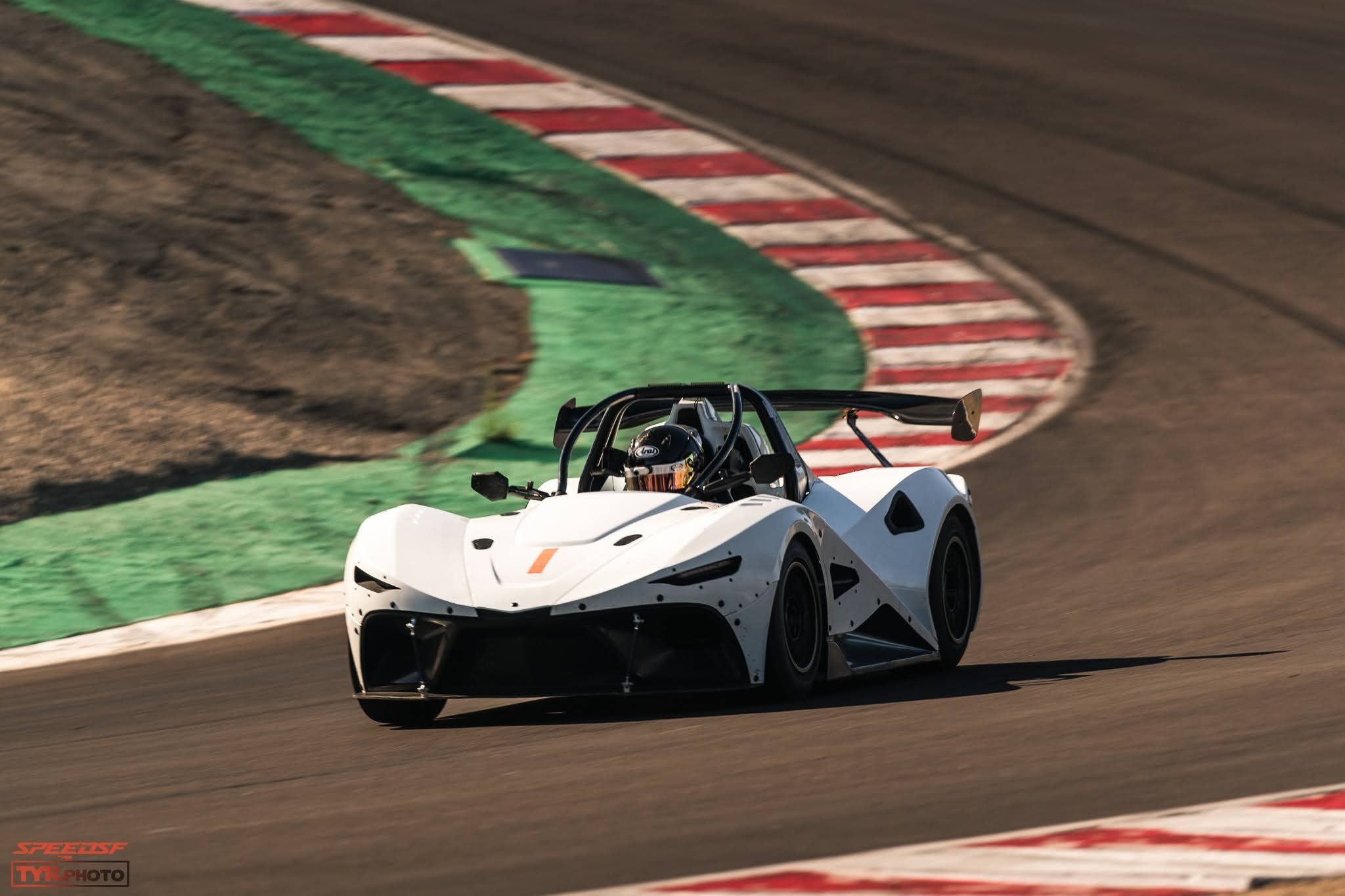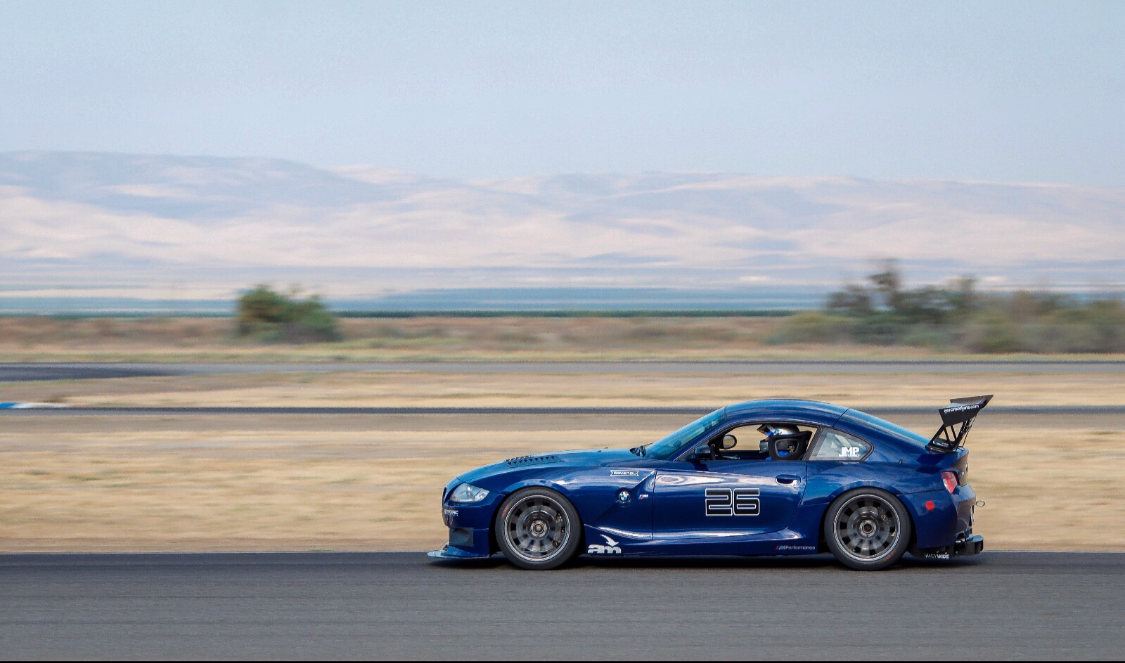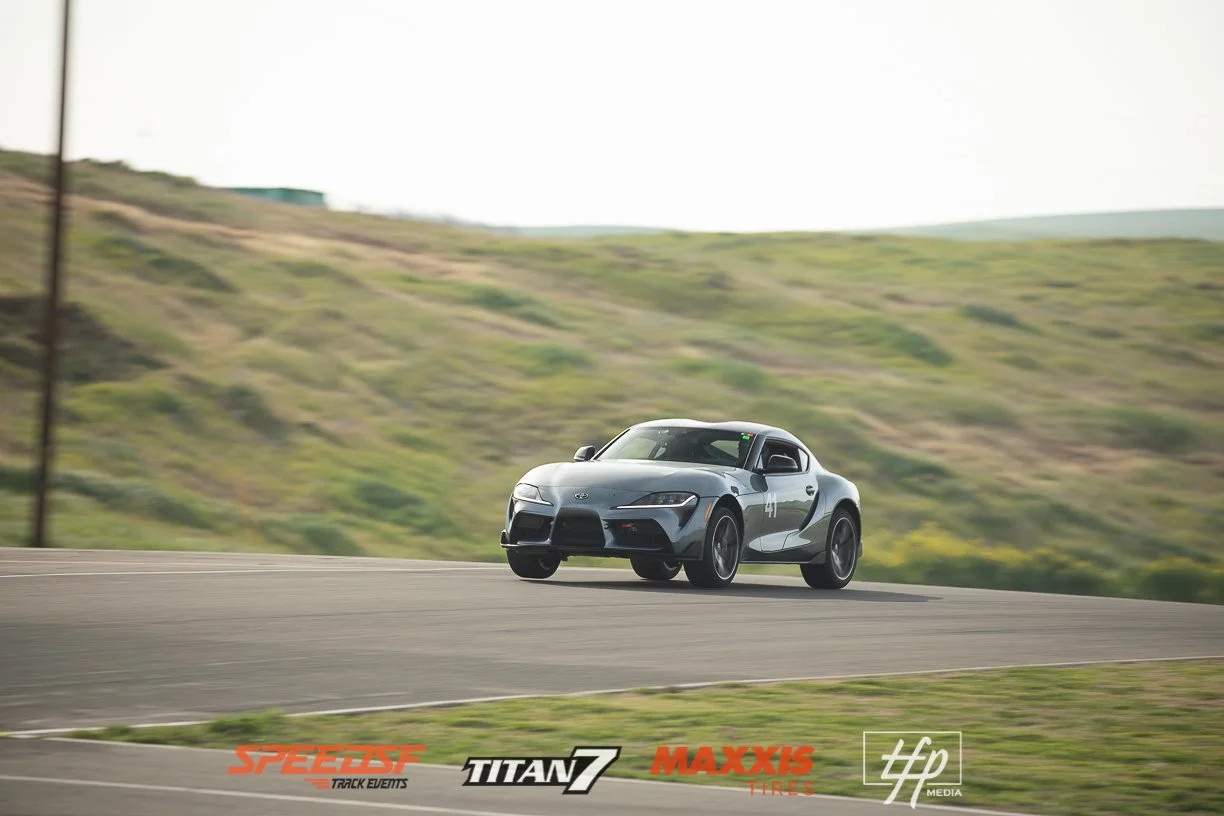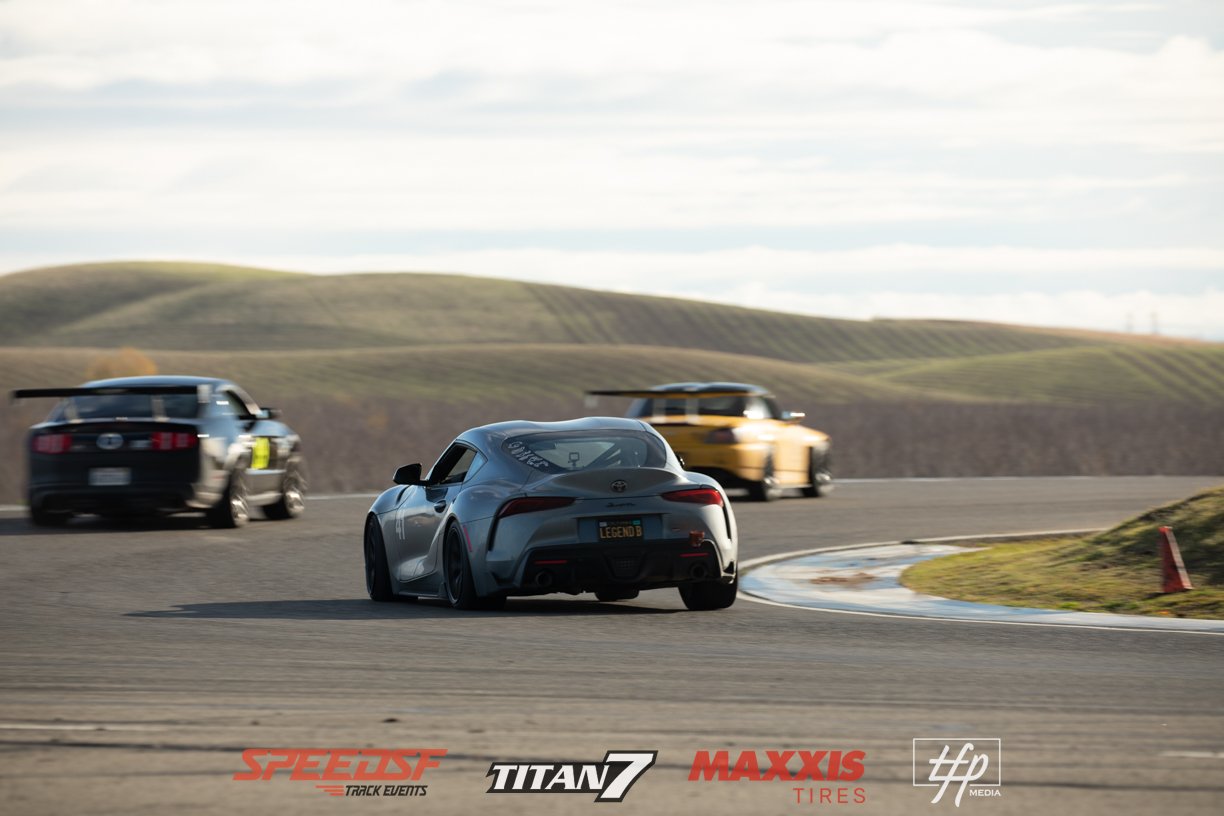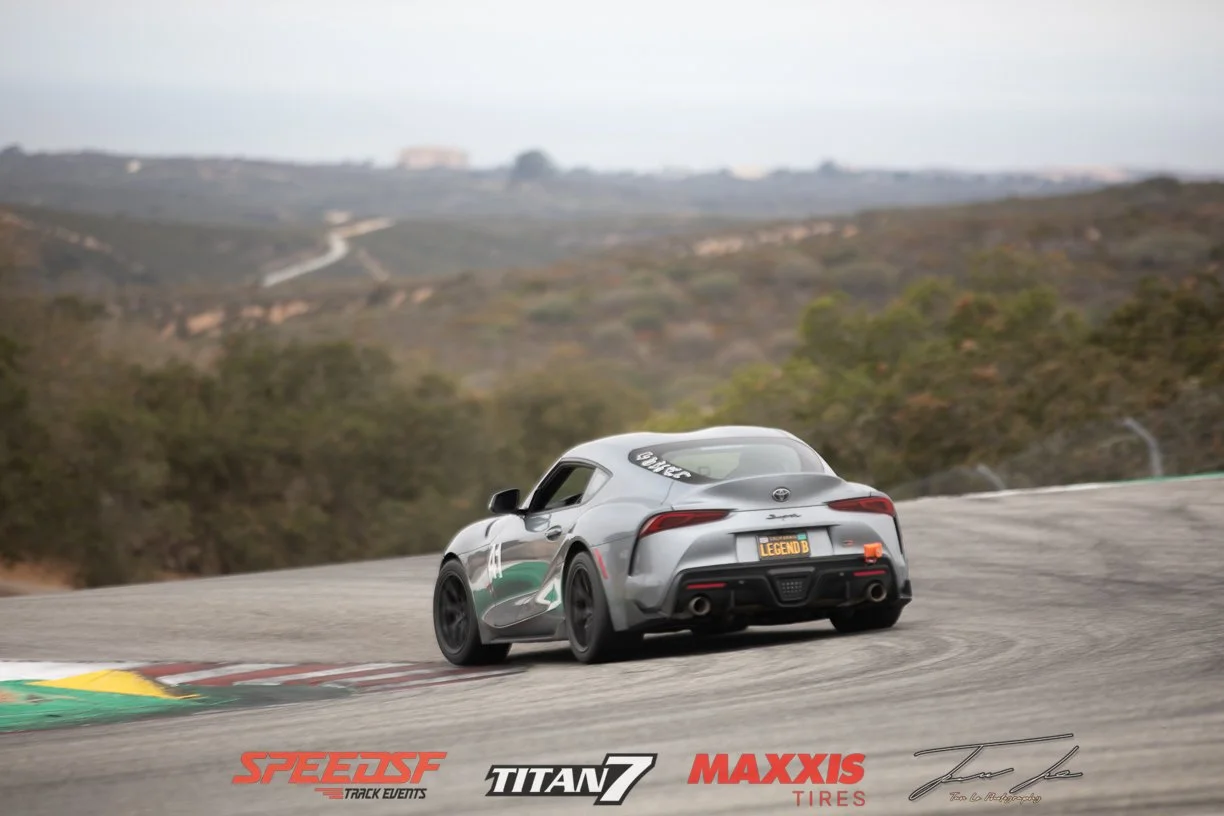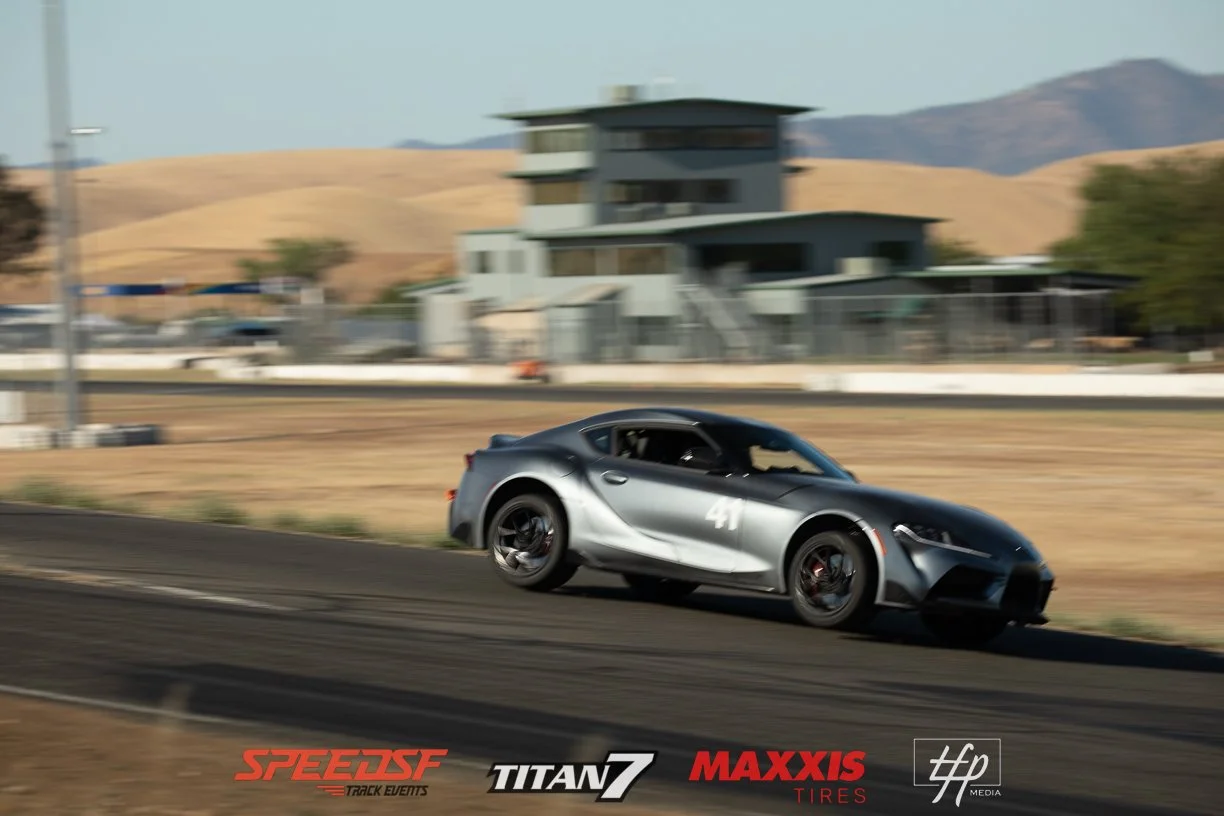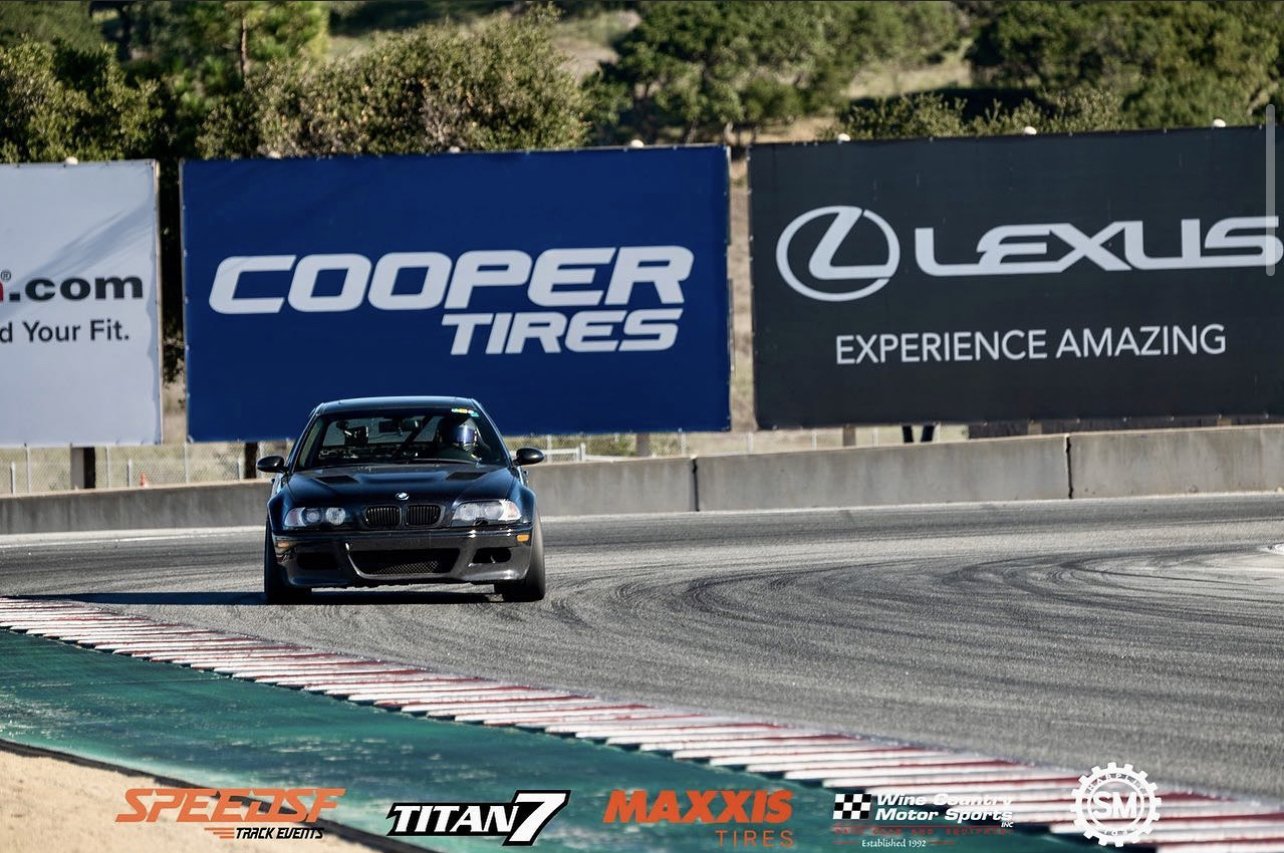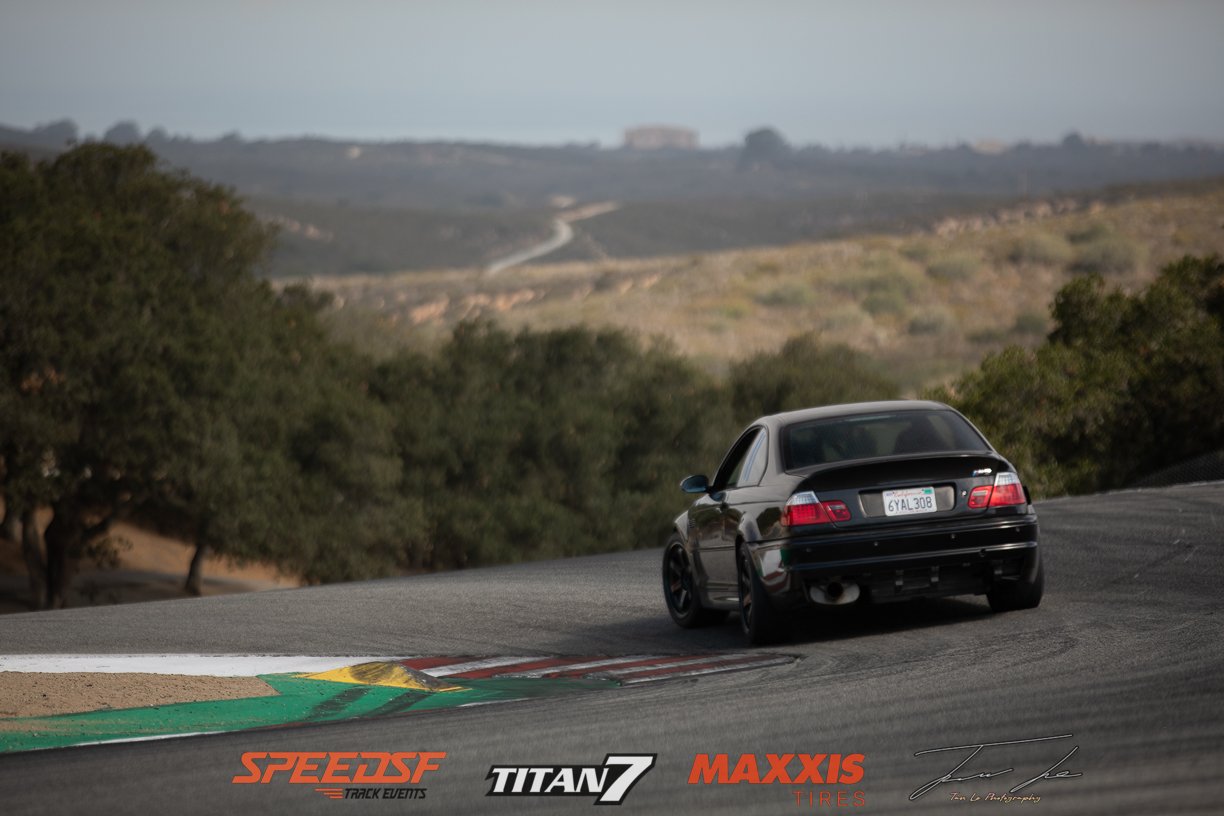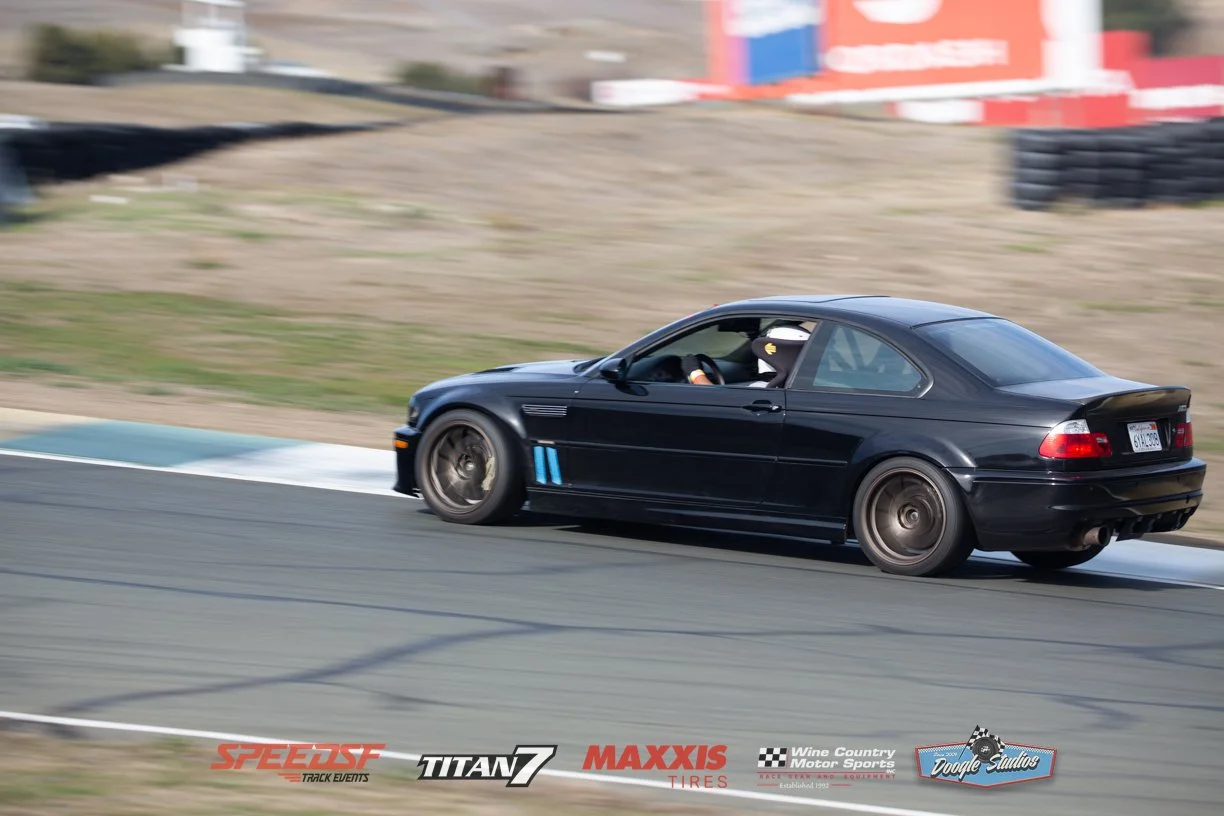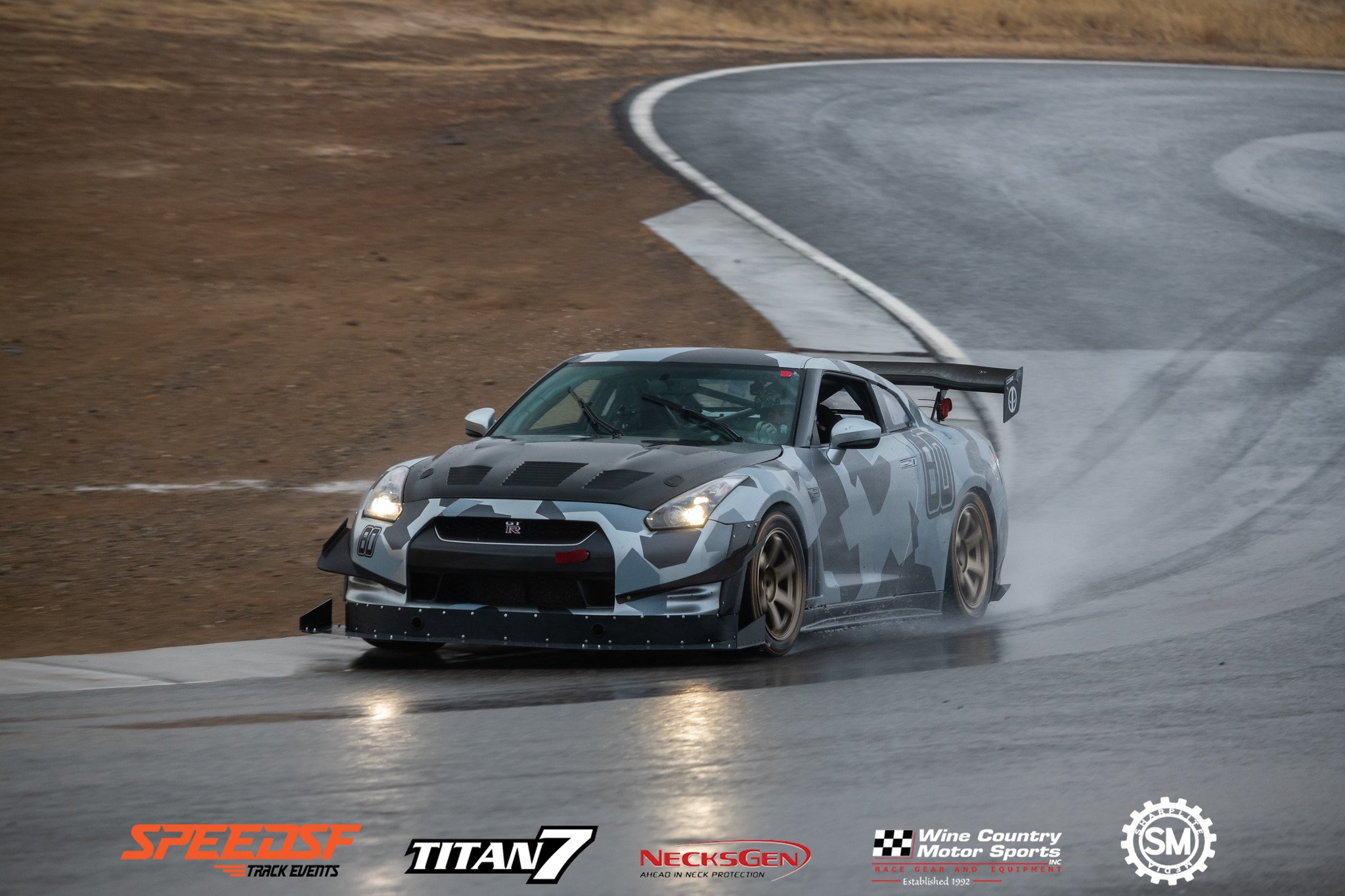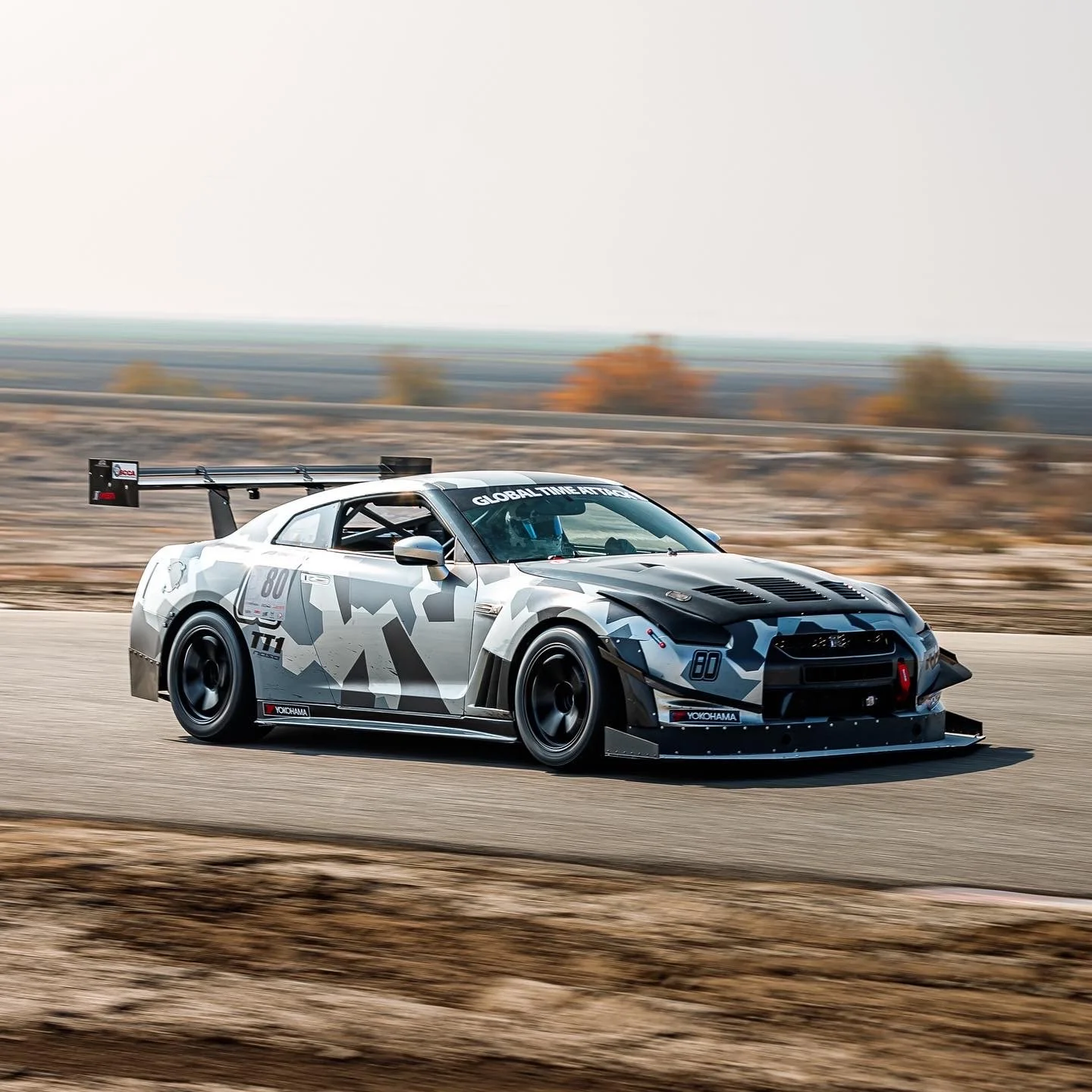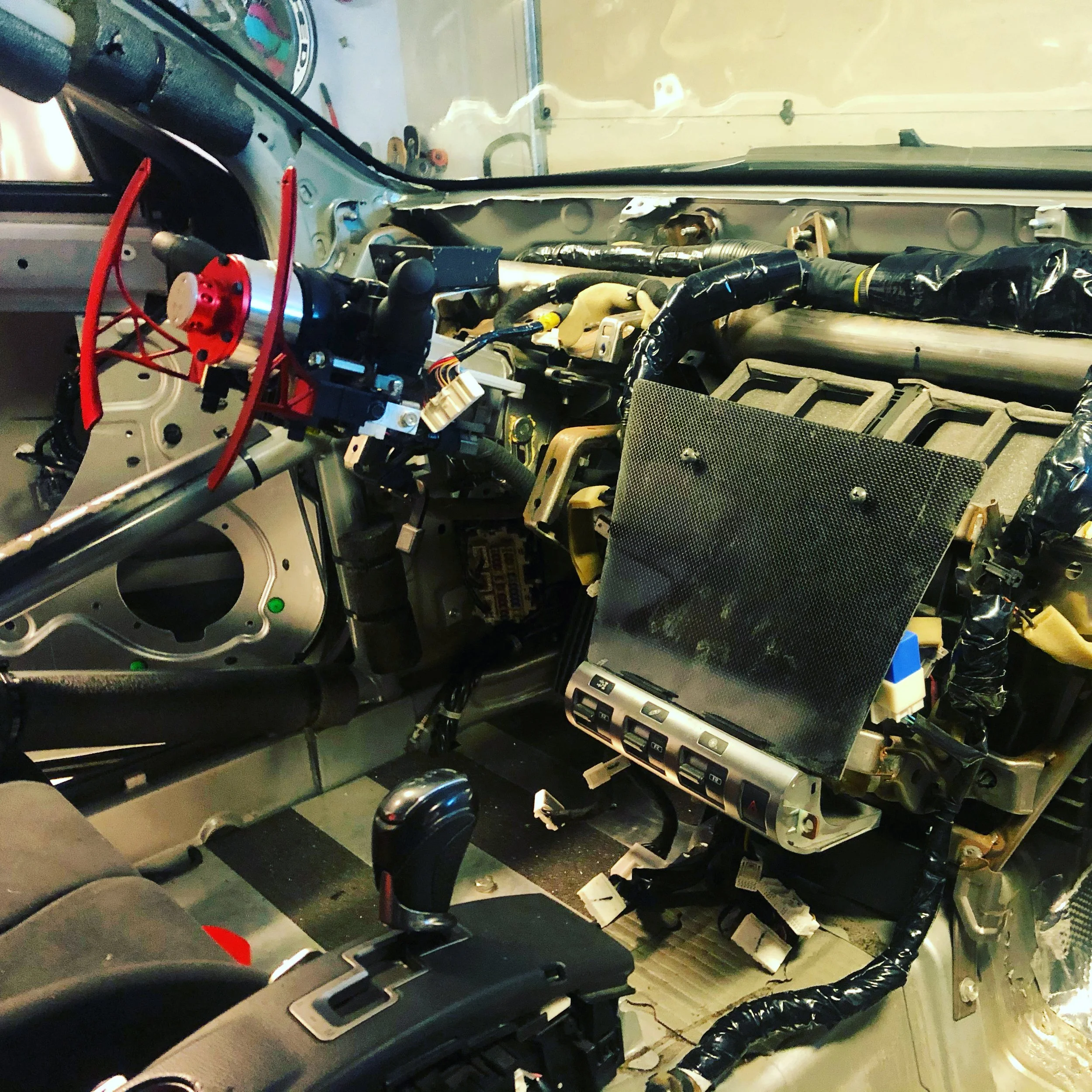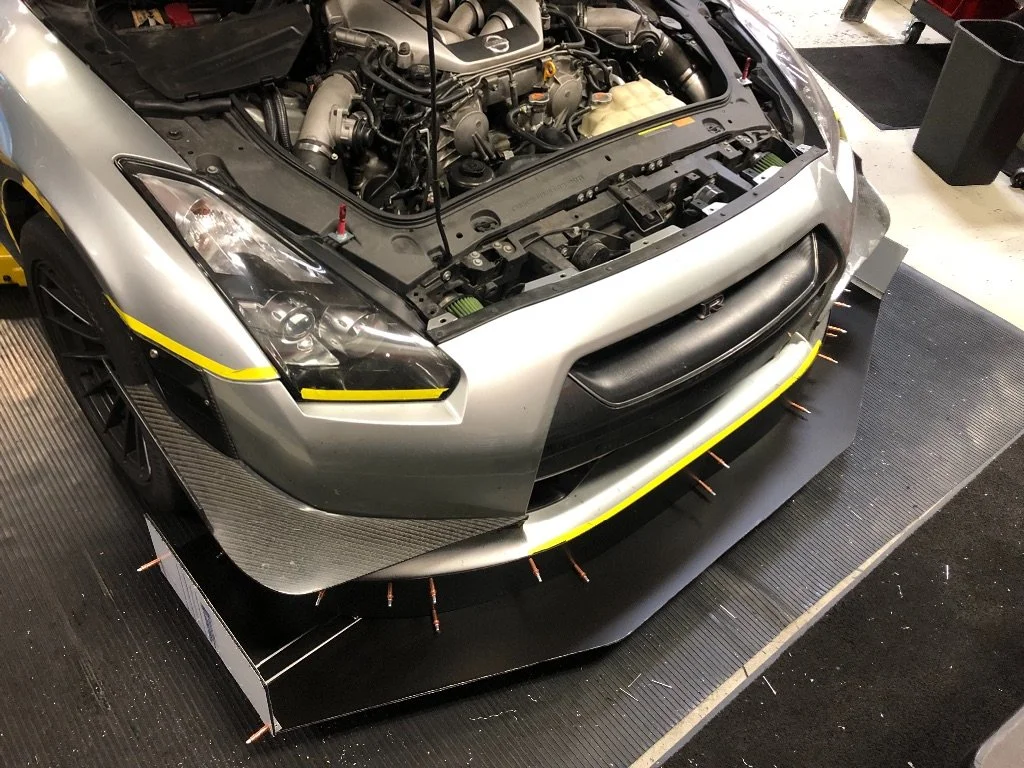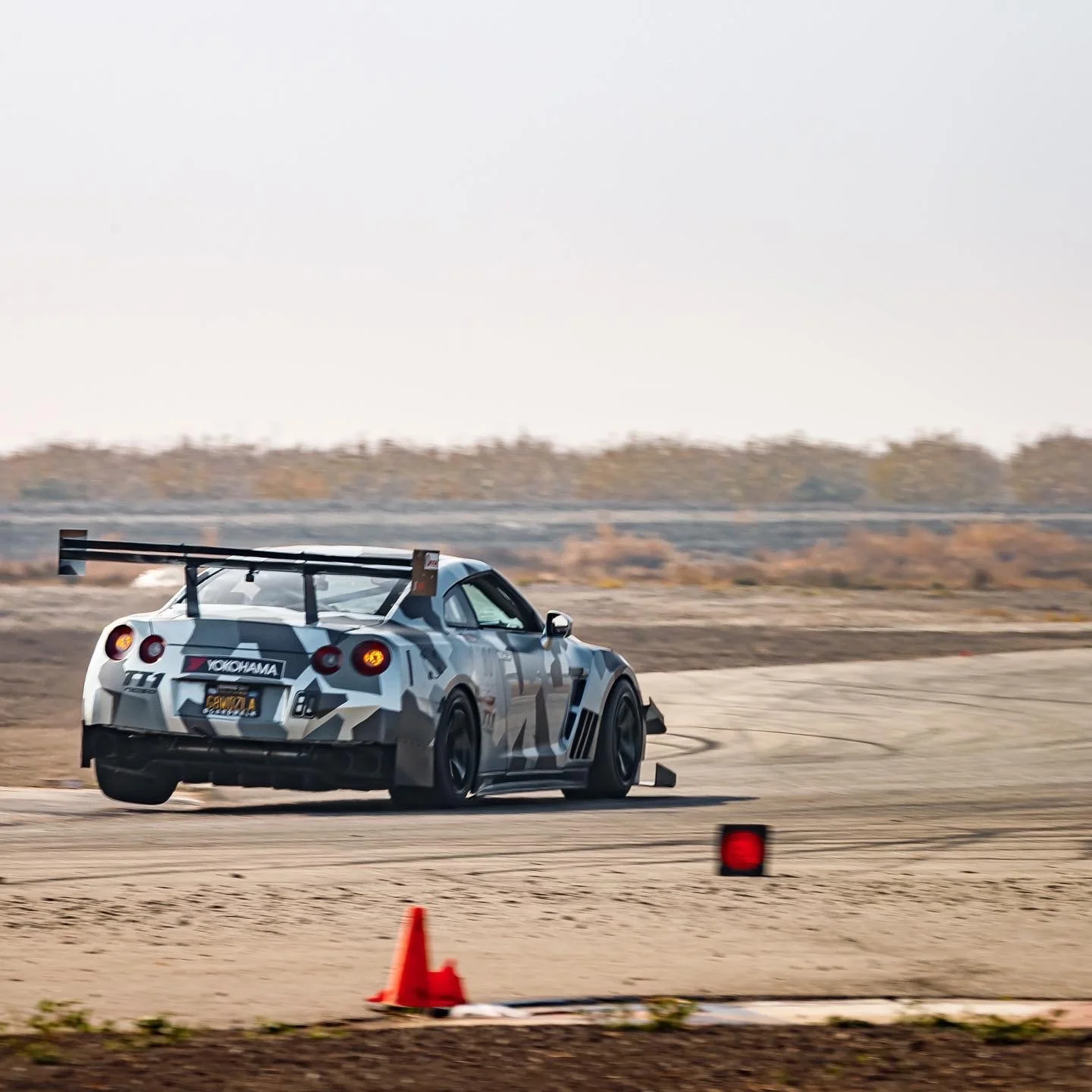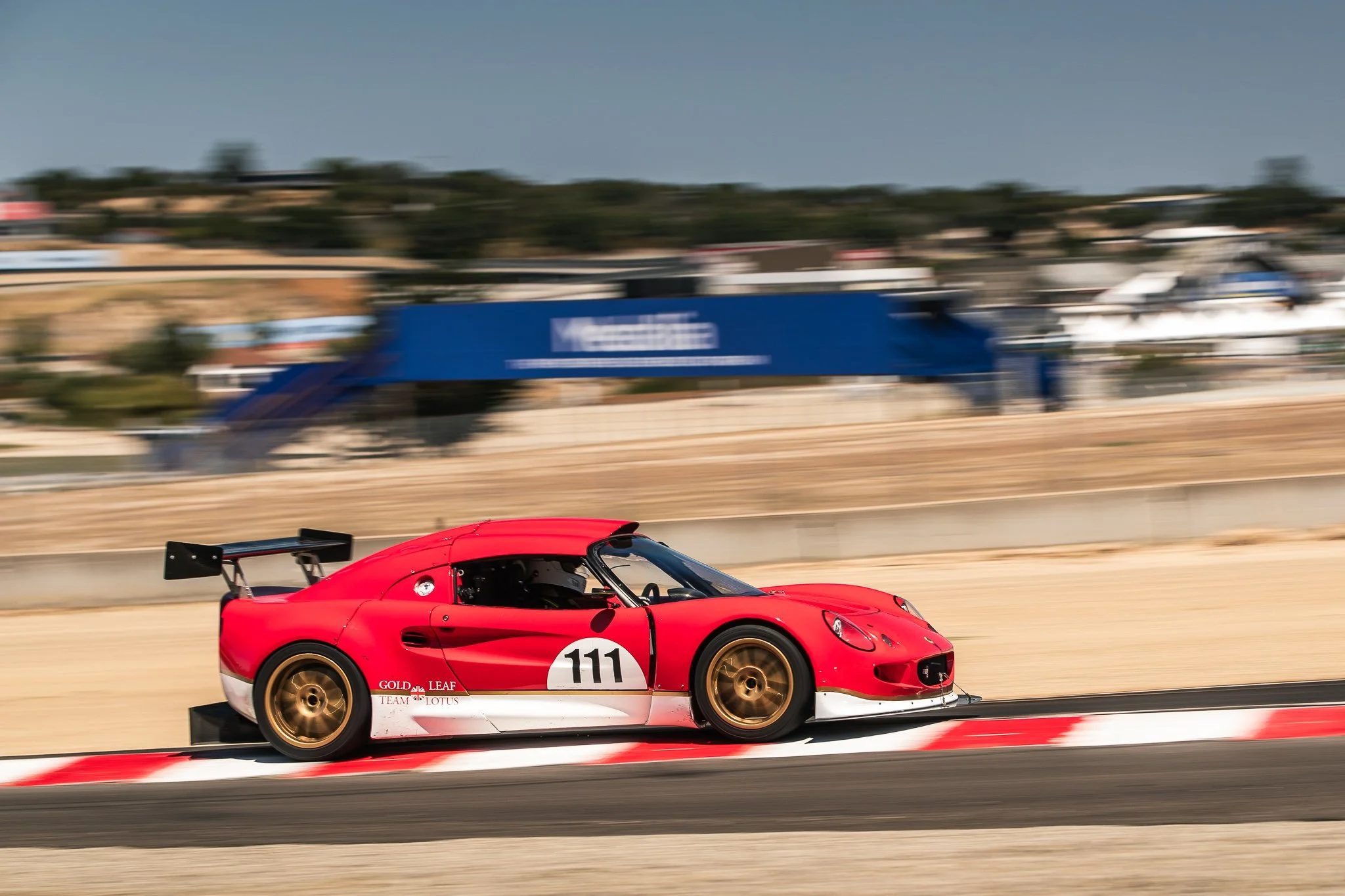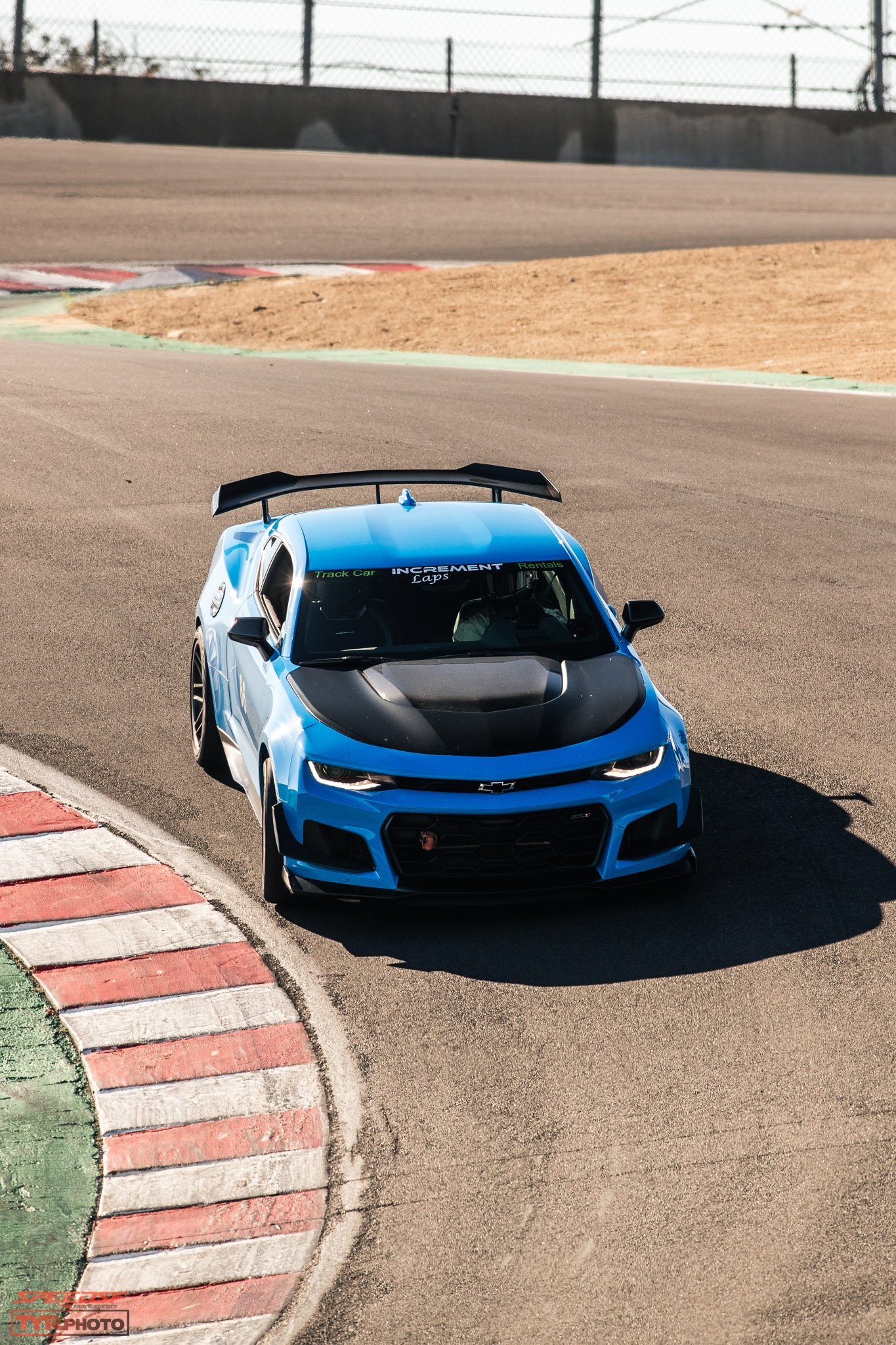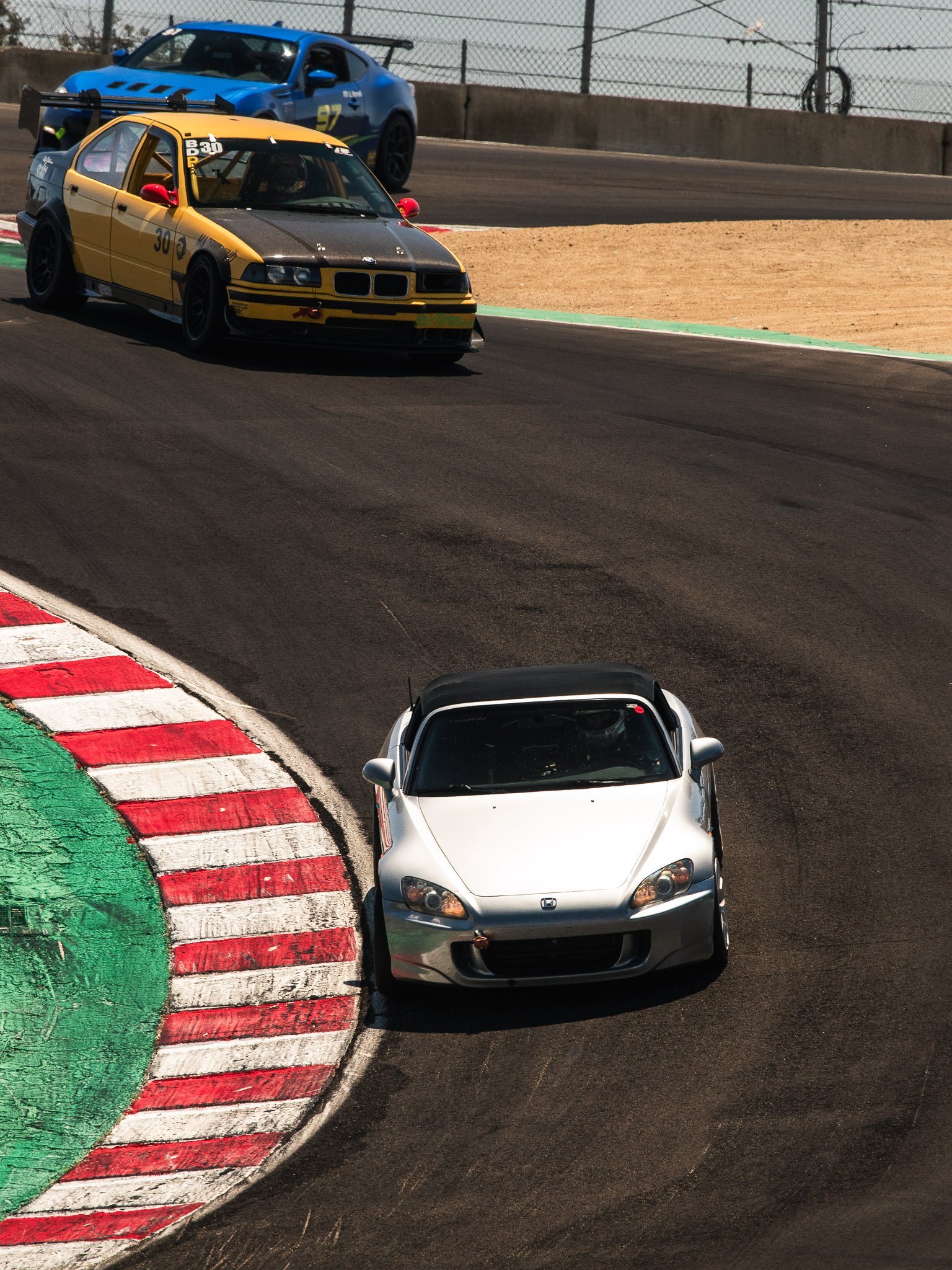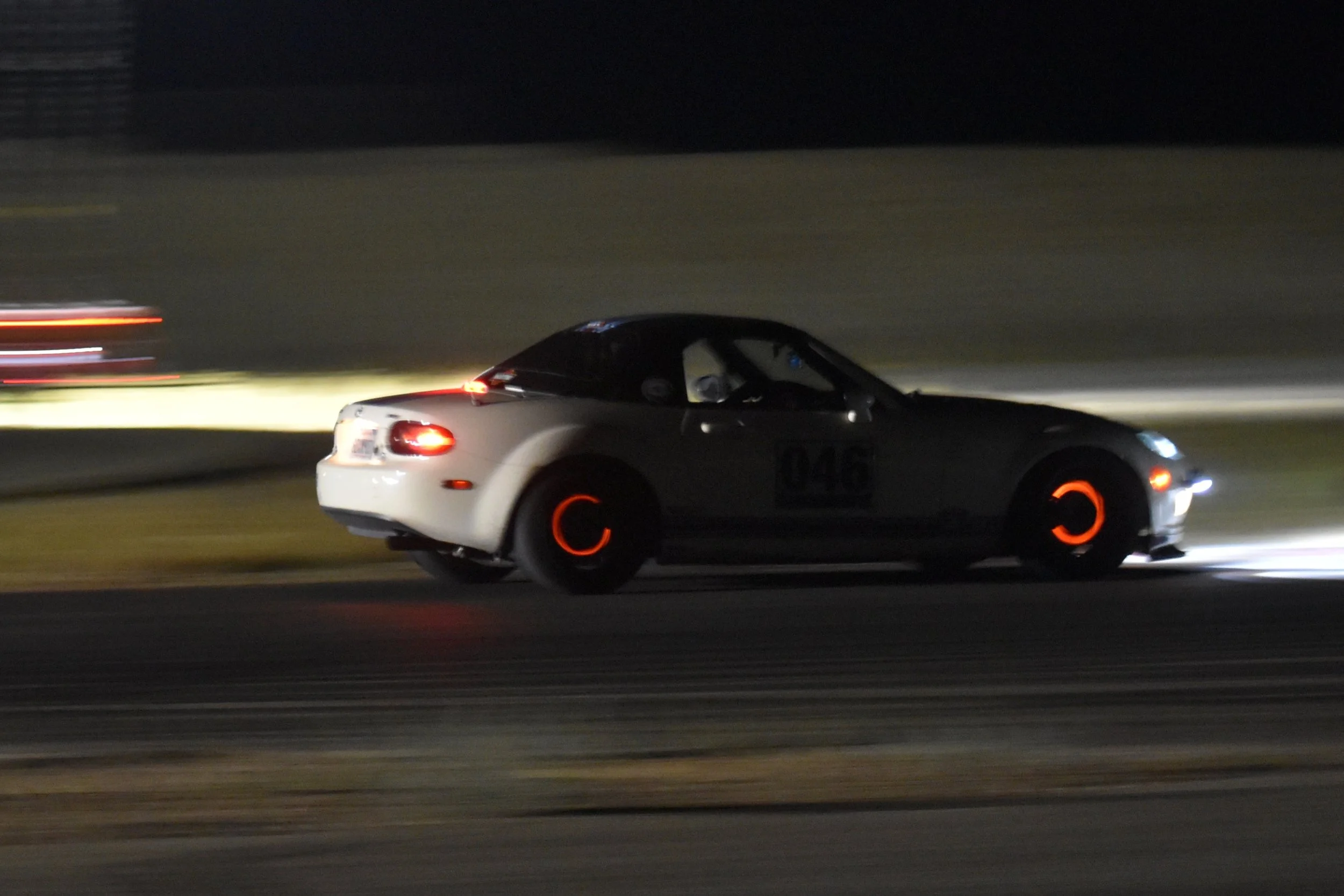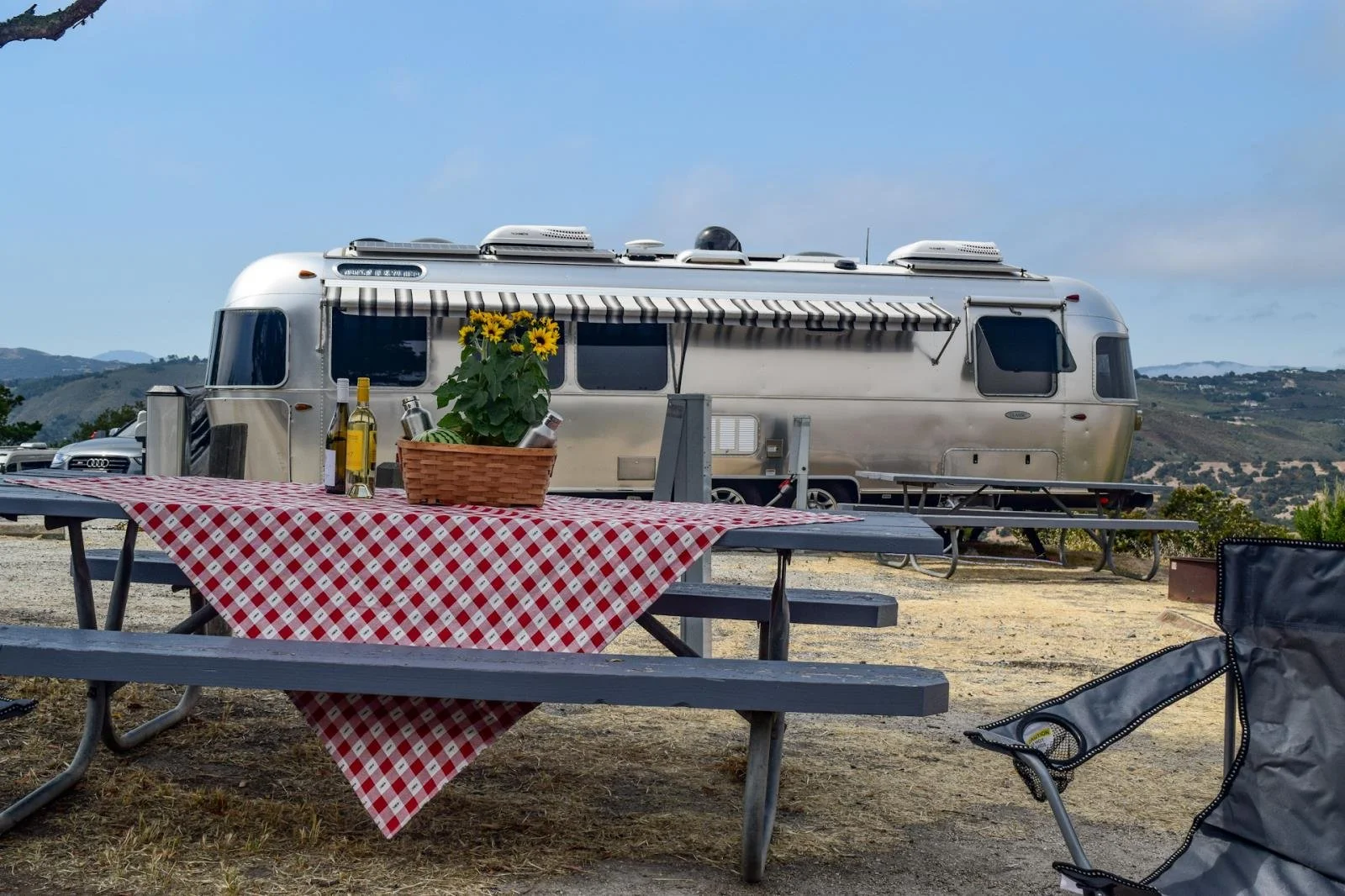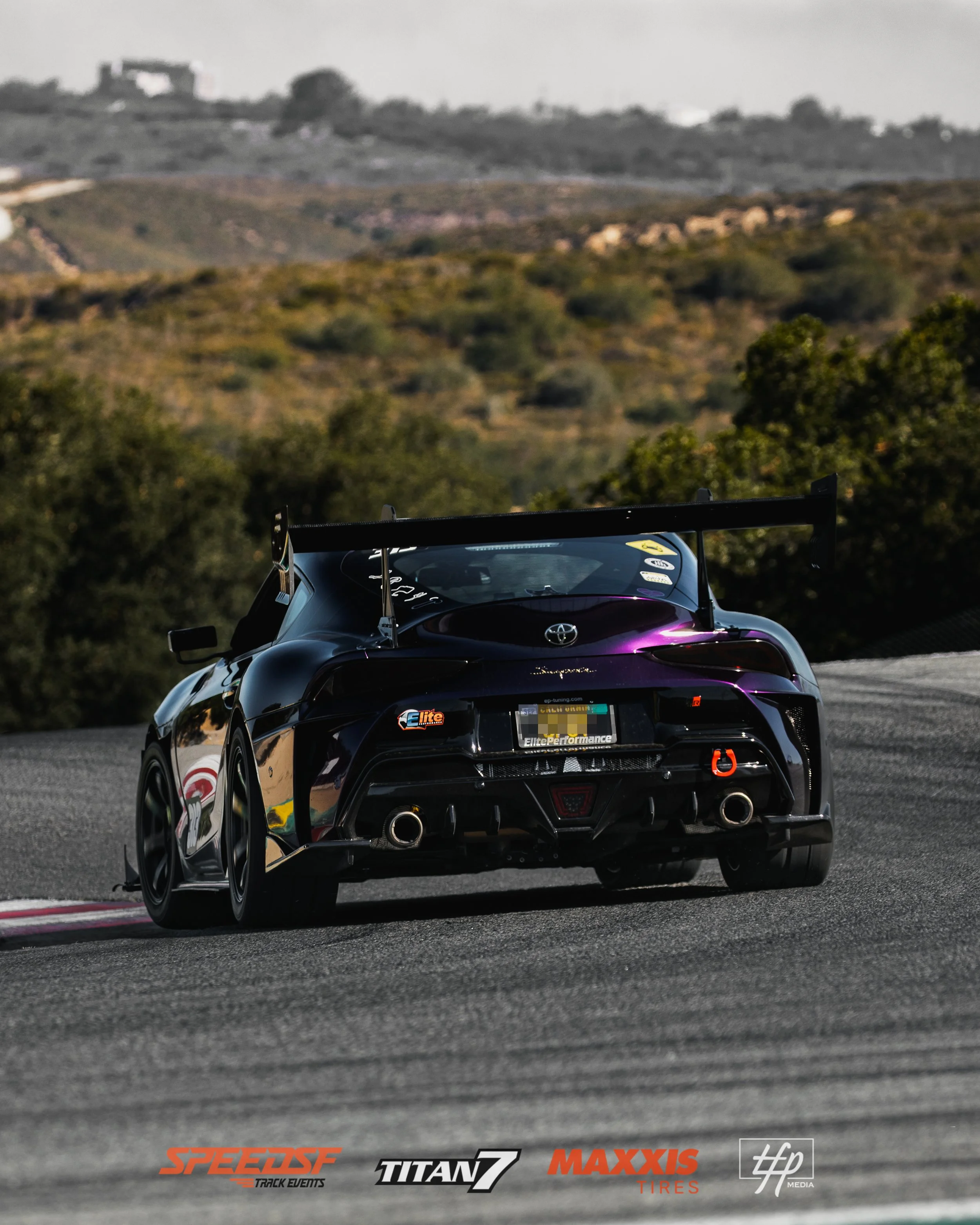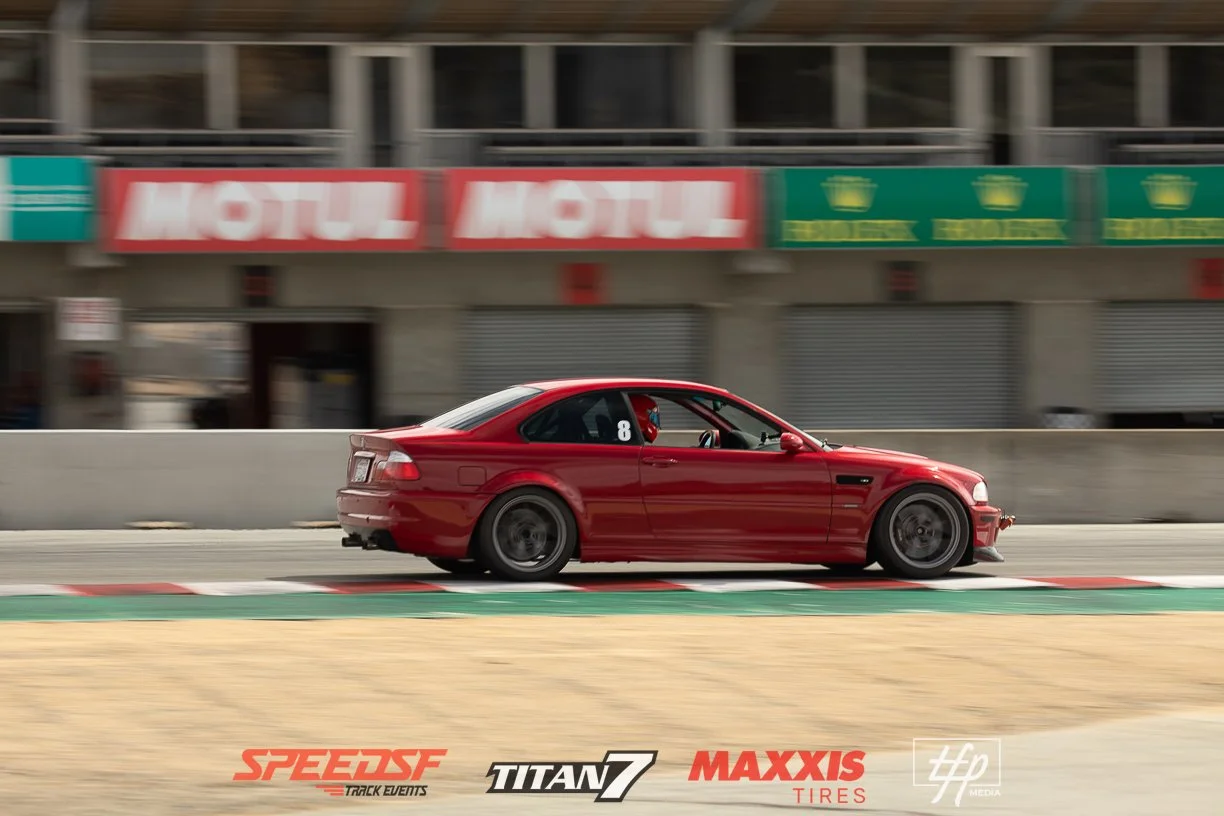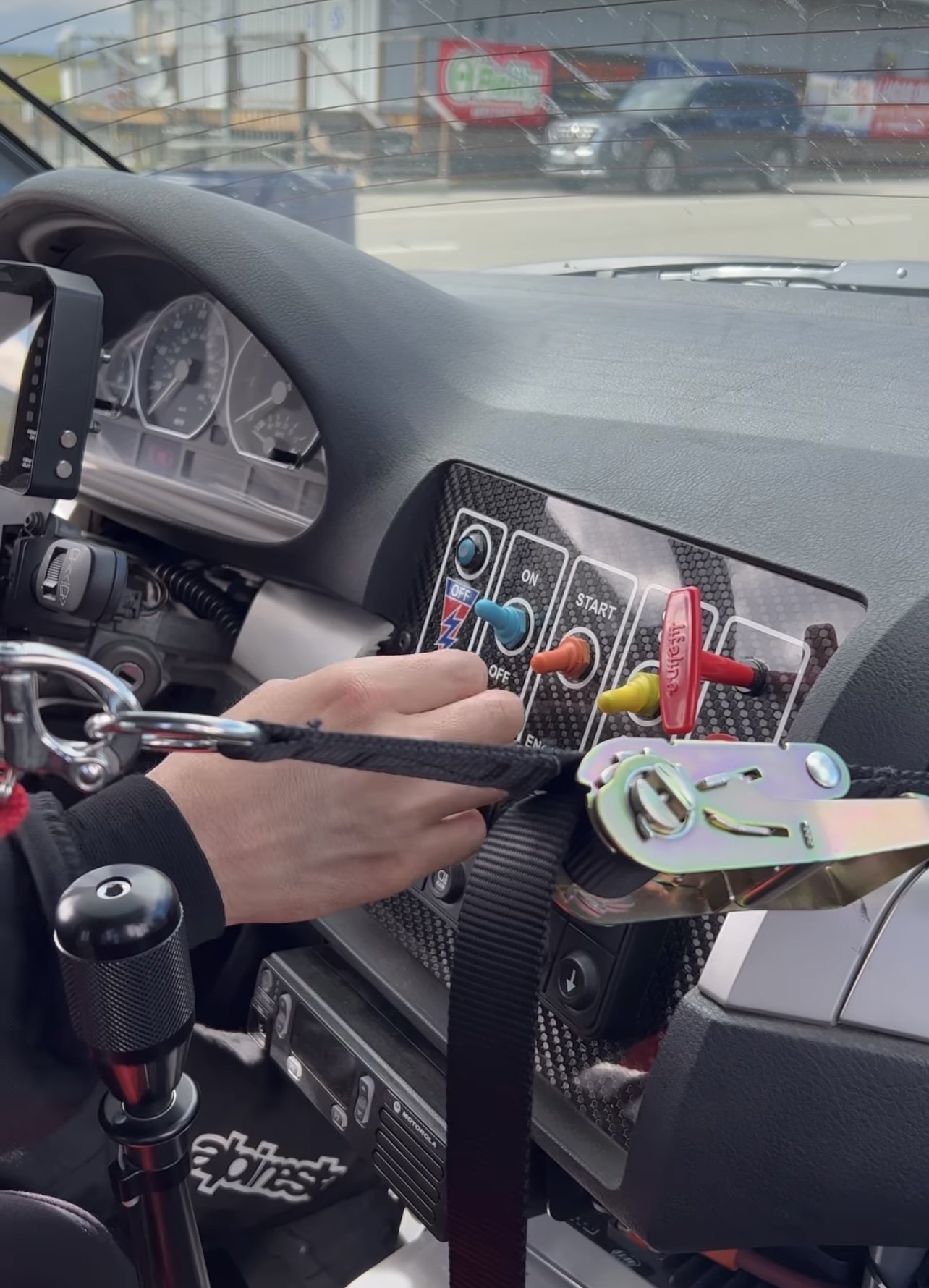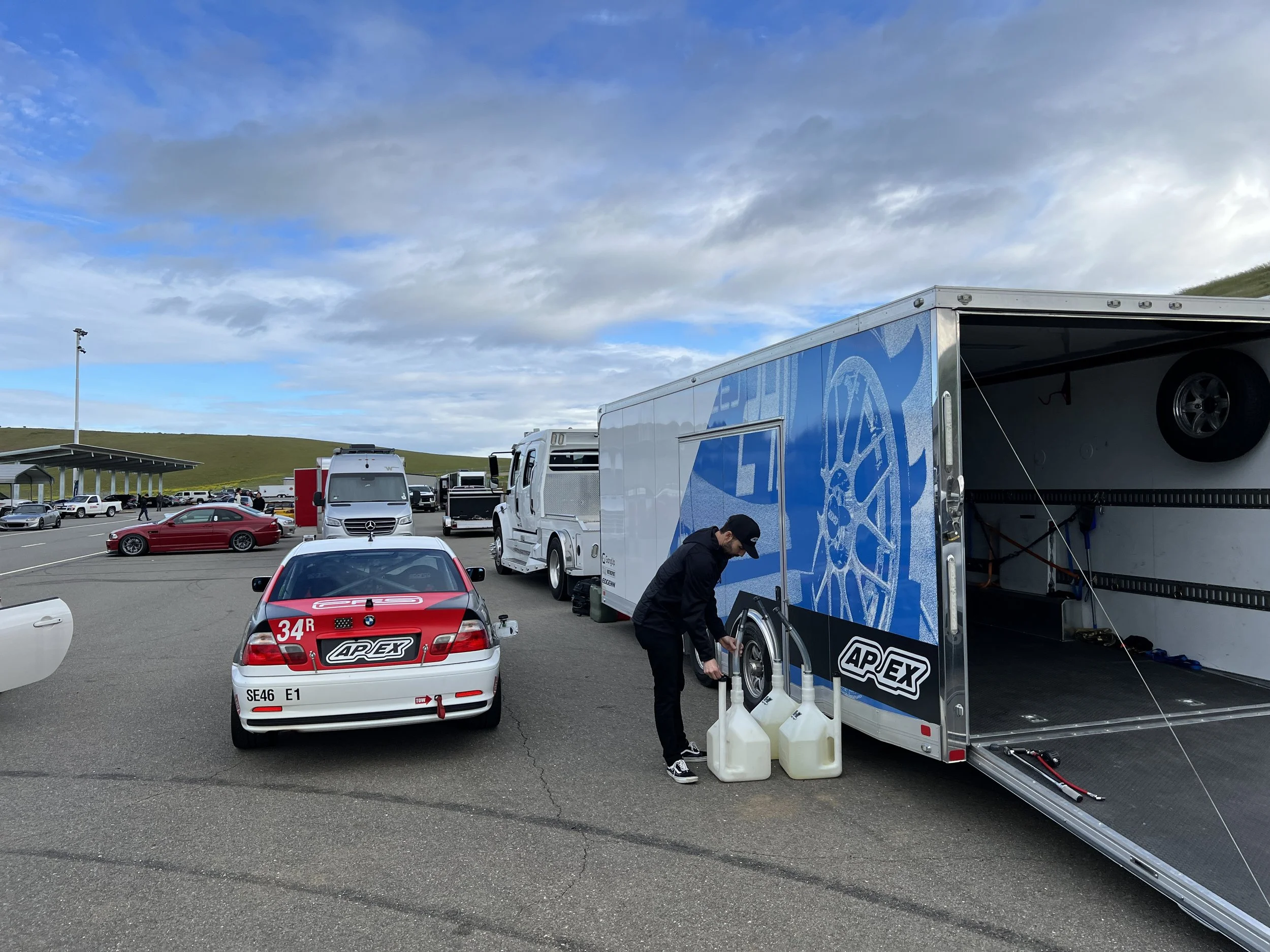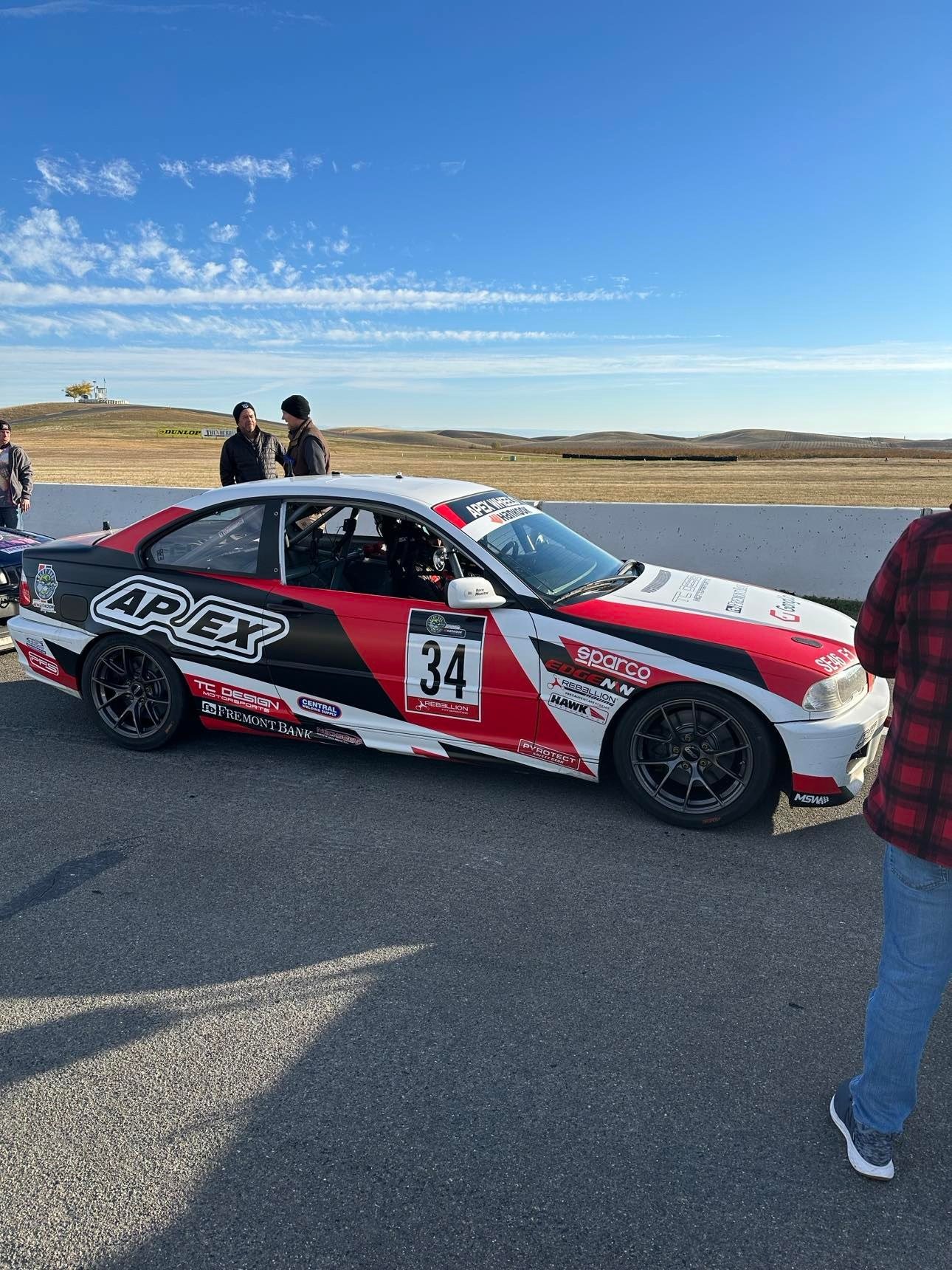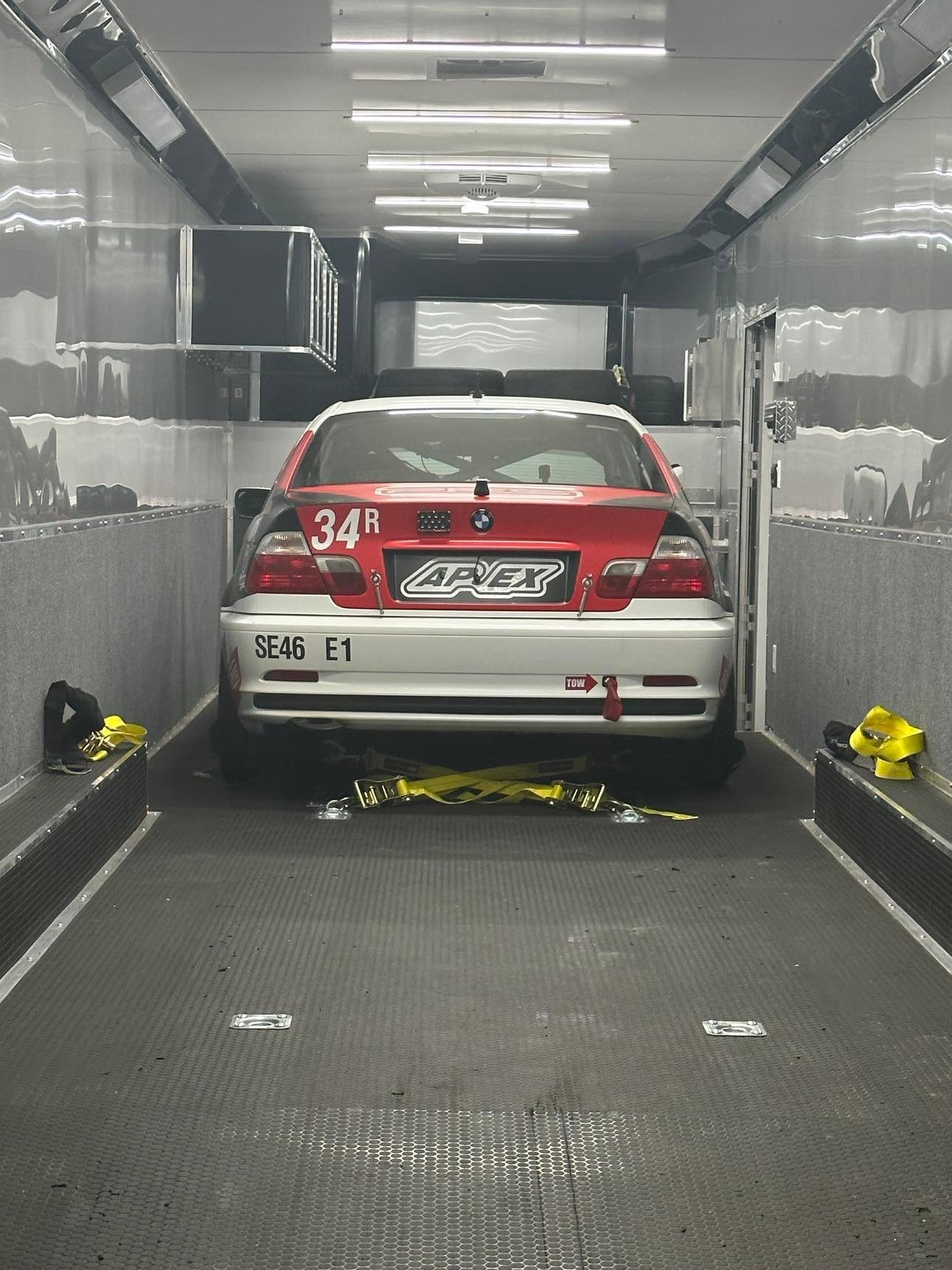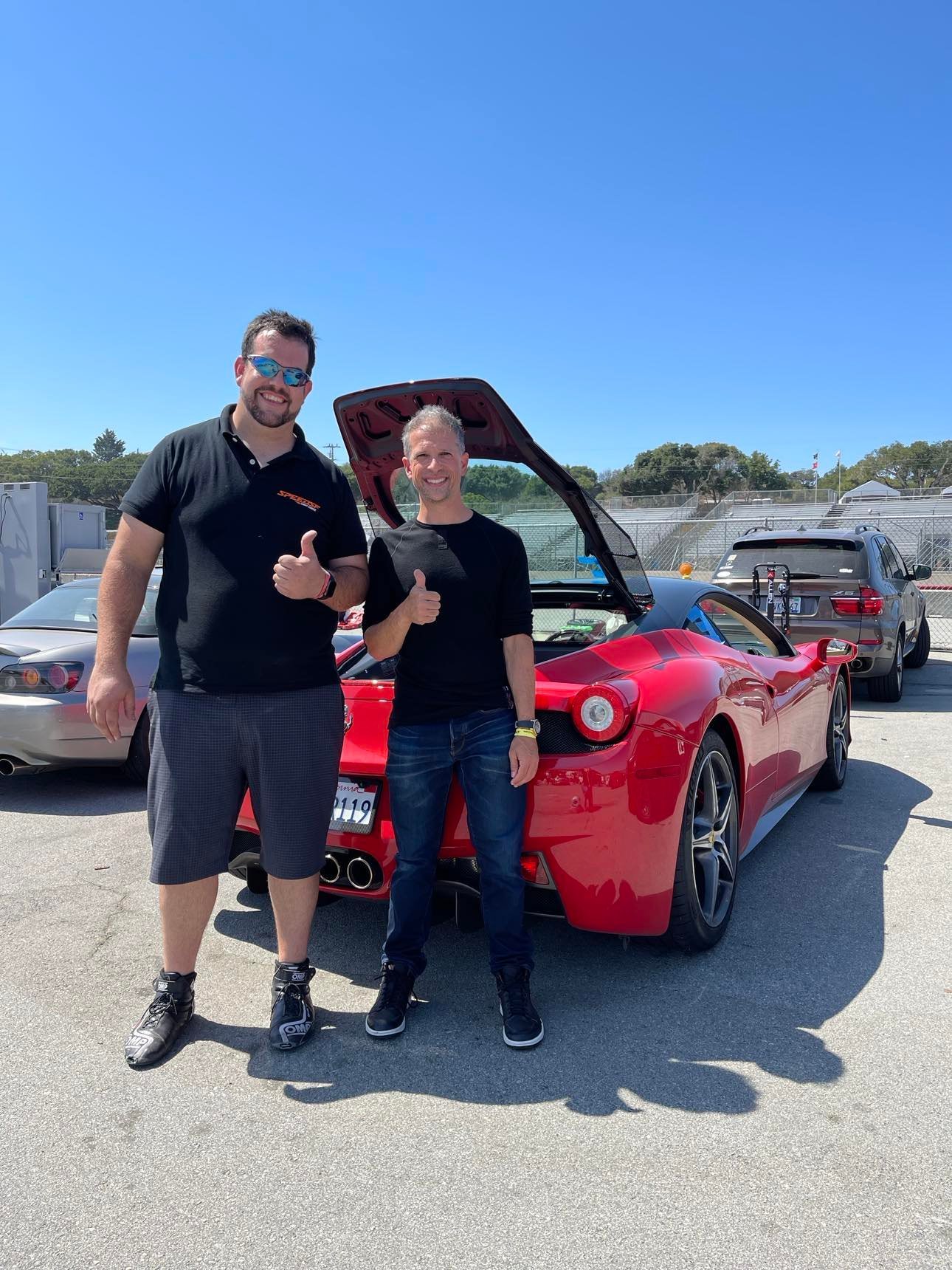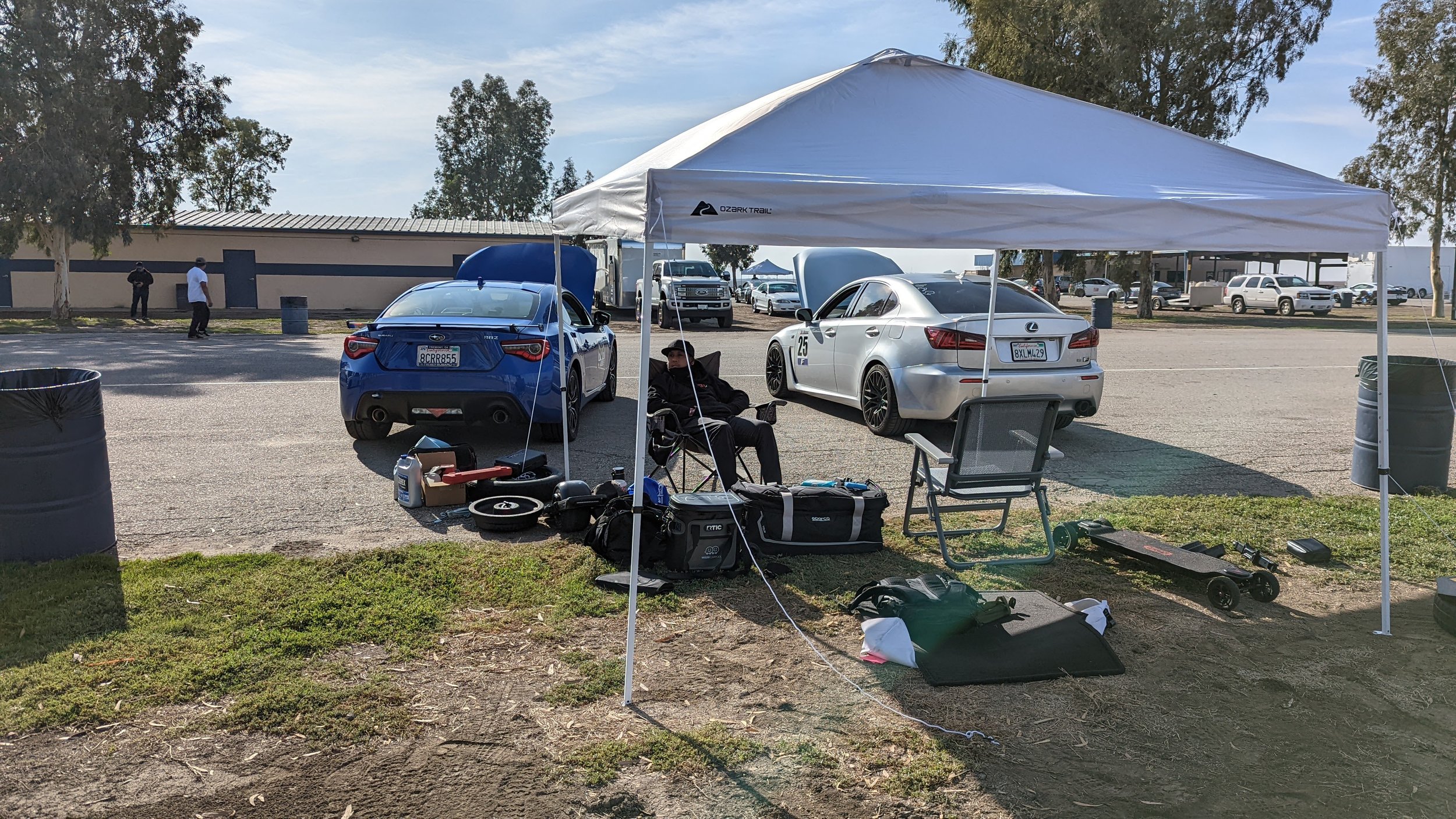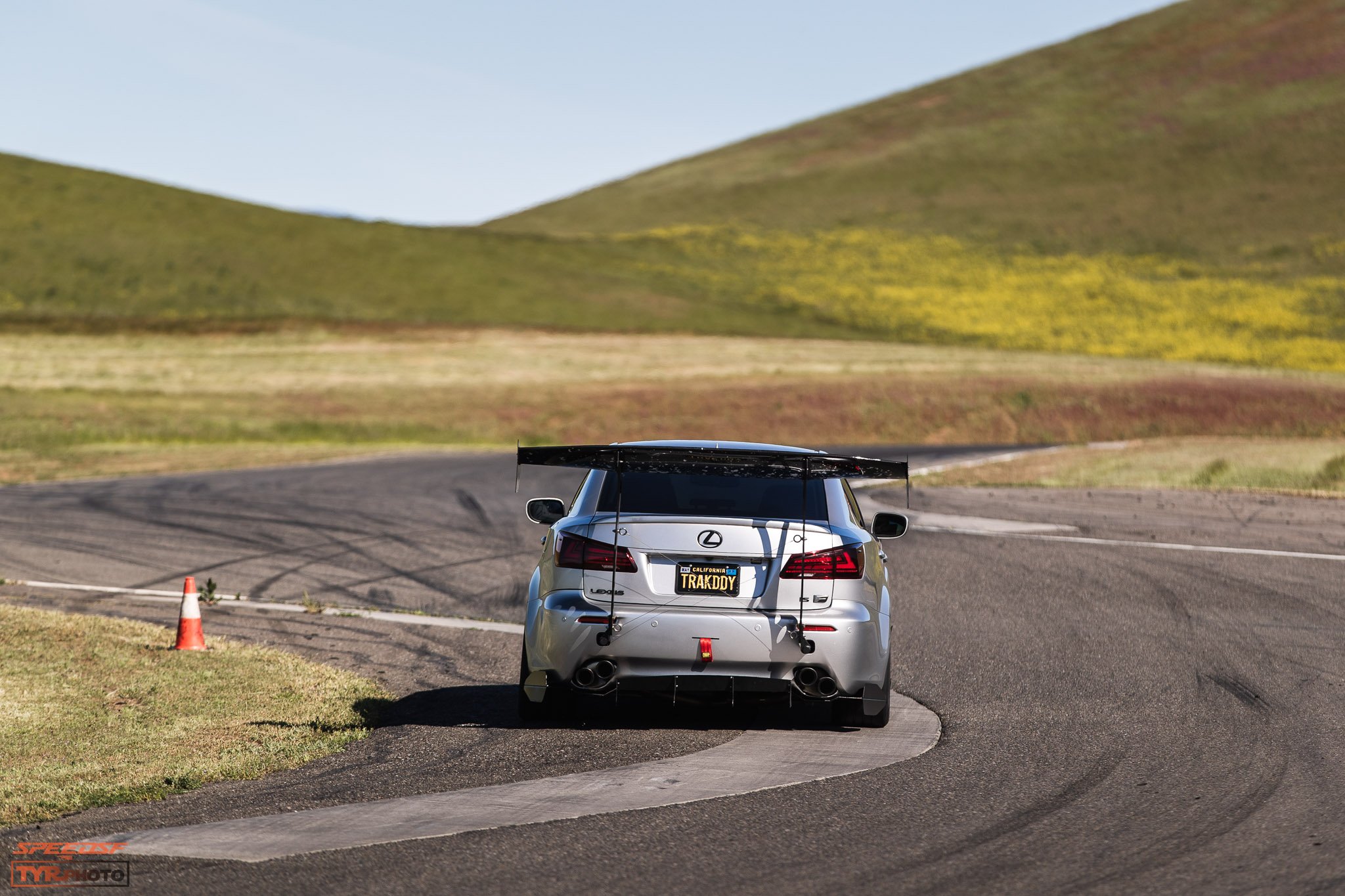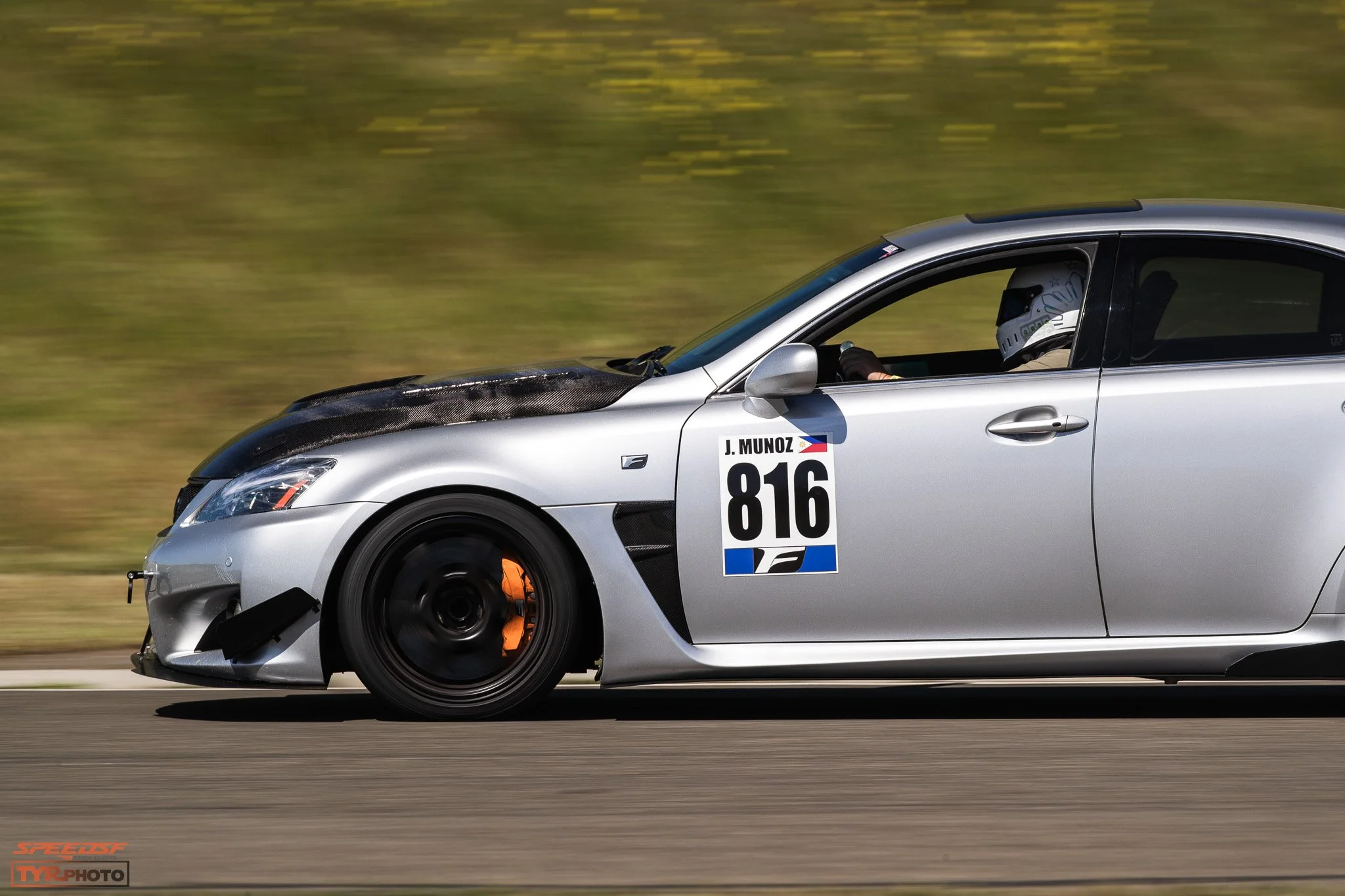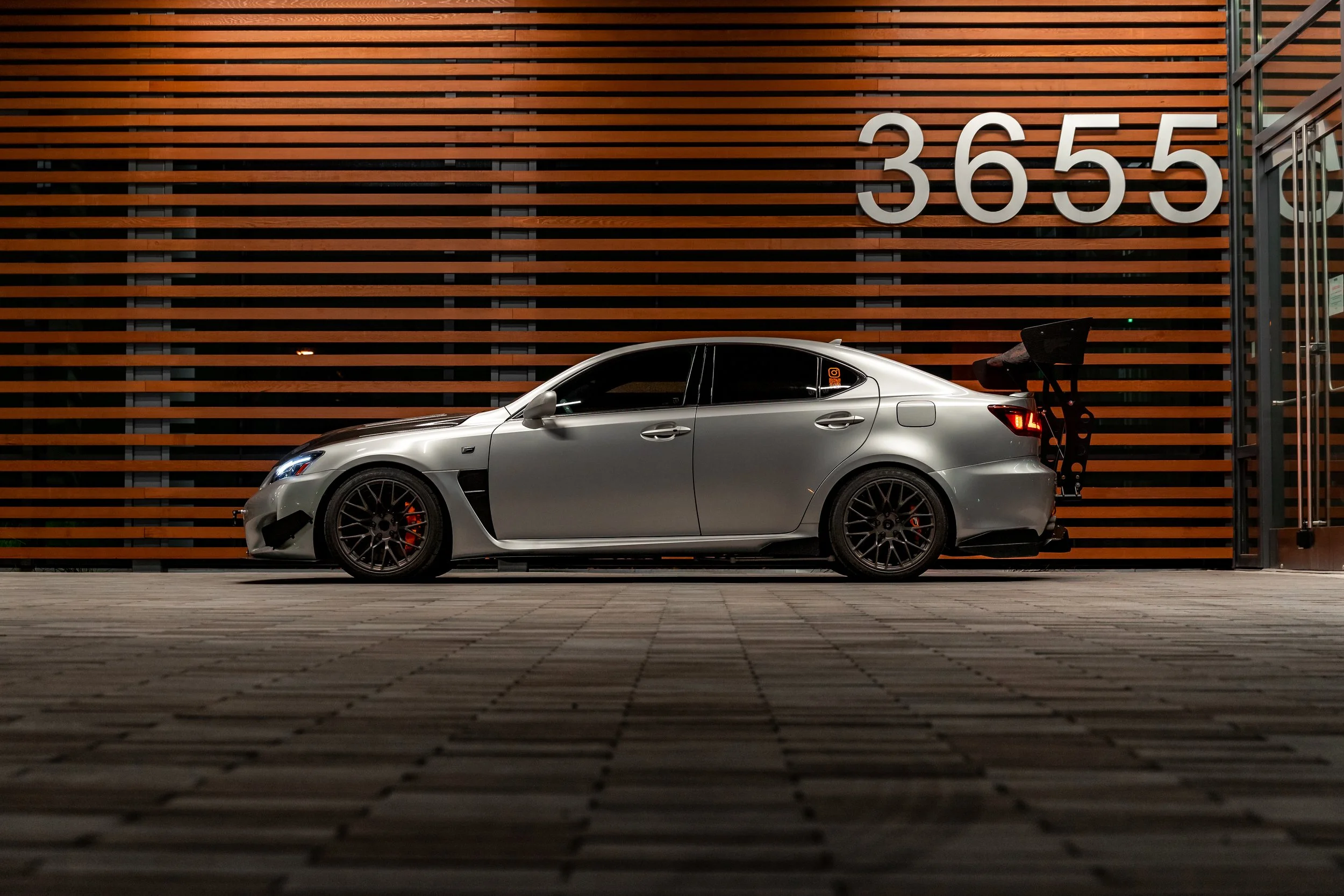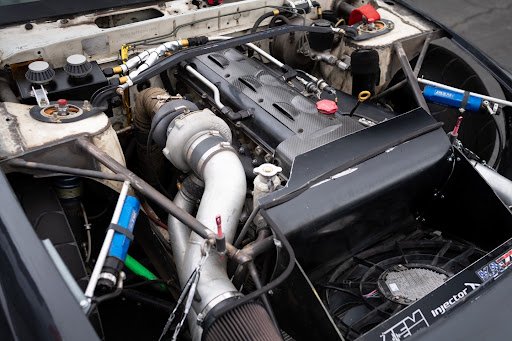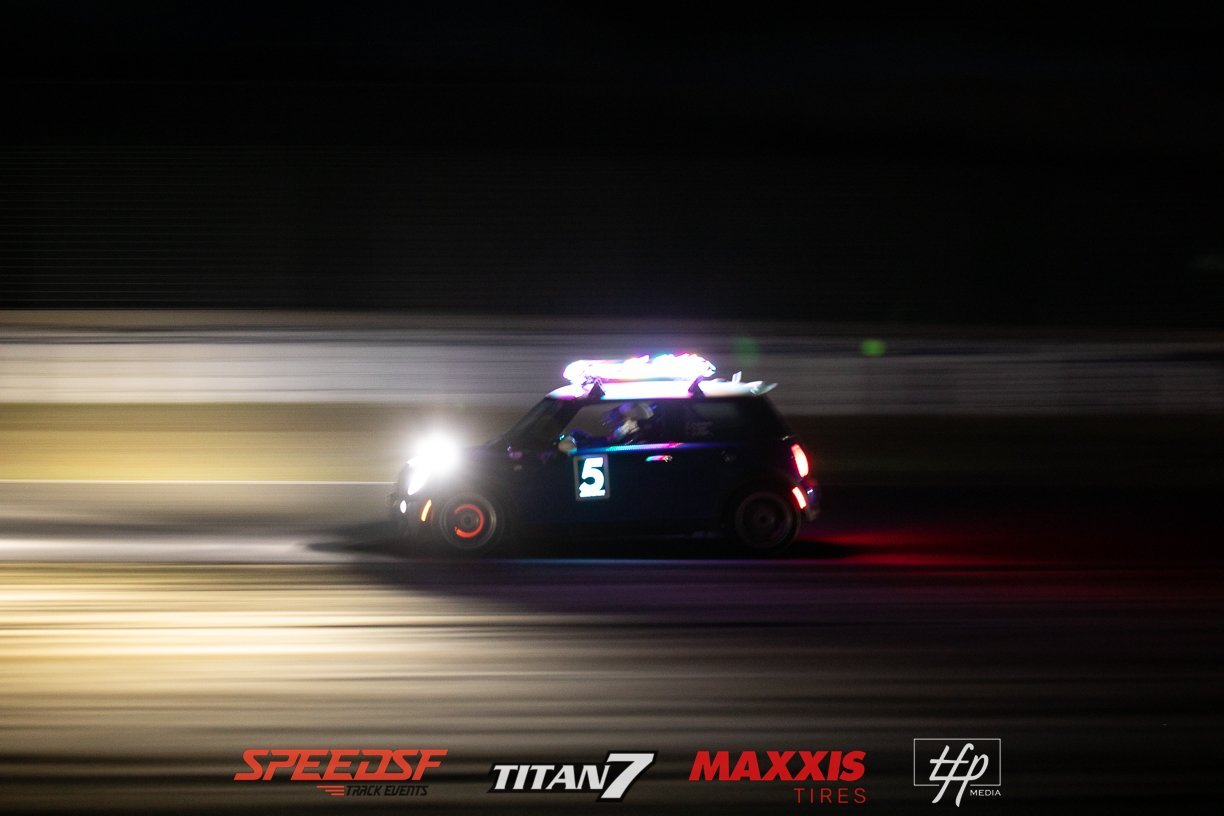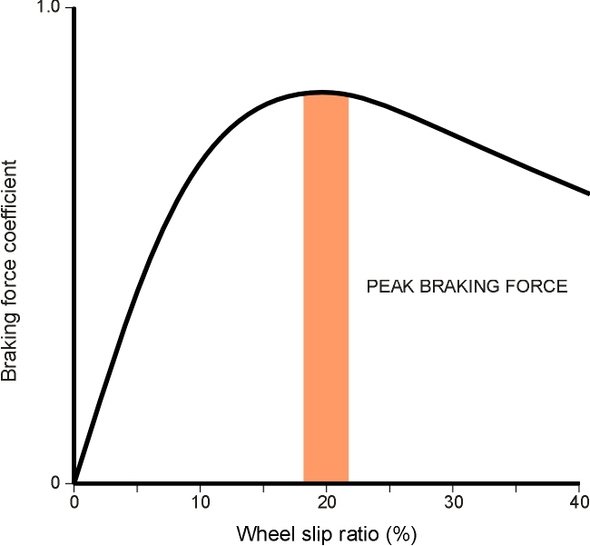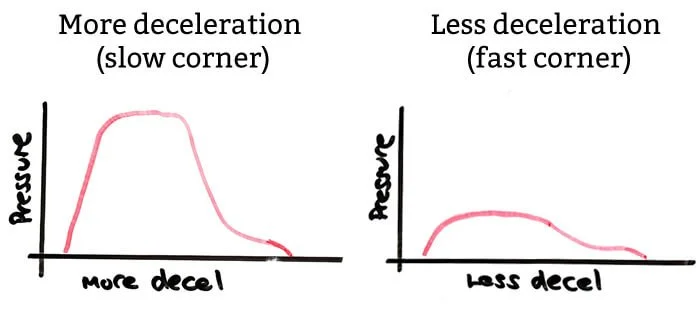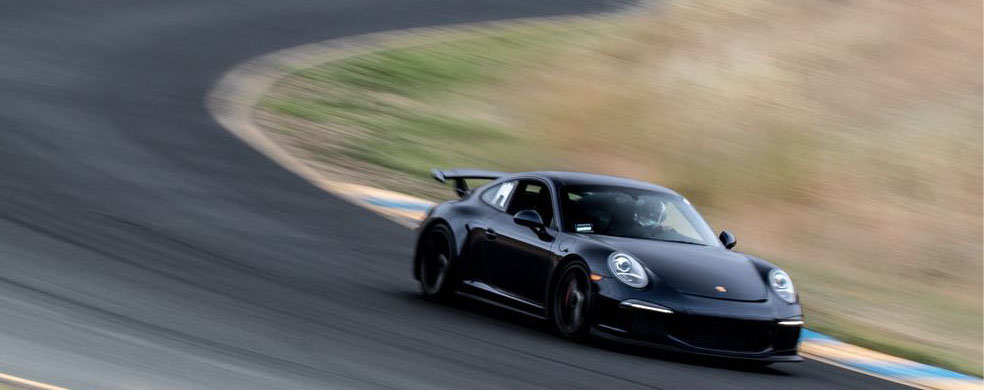
Richard’s MR2 Turbo: Not Too Pretty To Pirouette
Although Richard already had an E92 M3, he decided to spruce up his mid-ship sports car and spin his way into driving competence.
It began all the way back in grade school with Gran Turismo. A few years later, Richard Tran graduated from video games and started moving through the worlds of hard-parking BMWs and drag racing until his expanding network brought a few road racers into his life.
When they invited him to a track day with Speed SF in 2019, he accepted — but not before considering the consequences. Richard was opposed to taking big risks; he’d seriously hurt himself in a car crash a few years before, and he certainly didn’t want to damage his then-new M3, but they persisted — they told him he’d leave the the track feeling something extraordinary.
The feelings of euphoria following that first session helped him forget about the potential costs of thrill seeking. In fact, he’d been bitten badly enough to sign up then and there for another twelve track days. Quickly, he put the dependable M3 on the back burner; he had a cheaper, lighter, more maneuverable mid-engined car he believed would take more to master.
To the trained eye, his 1991 Toyota MR2 Turbo (SW20) didn’t look like the ideal track toy candidate. Actually, it looked more like a museum piece. Three-stage paint, fresh interior panels, and completely new suspension components were all parts of a three-year restoration that culminated in a show-grade vehicle. Richard was so proud of it, he displayed it at SEMA.
Work Meisters and the OEM kouki aero was all that was needed to make the SW20 pop — it truly is a svelte, sexy car.
Despite its immaculate condition, he felt it wasn’t too good to be used in the way he’d (ab)used his M3. In fact, Richard felt that he’d be missing out on something vital if he didn’t track it. There was a directness and a demanding quality about it that made him feel giddy at 5/10ths.
The second outing proved he had his head screwed on straight, but didn’t quite have the quick hands needed to manage the MR2. The factory components just wouldn’t cut it, especially on all-seasons, so he replaced the rotors with slotted Stoptechs and slapped on a set of EBC Yellows. Along with those, he installed a set of Tein Super Street coilovers, a pair of GReddy side skirts, and a 1998-spec spoiler with lifted risers for a little flash.
The basic package was fun, but far from friendly. “I made the mistake of trying to drive it like the M3,” he began, “and that just wouldn’t work. I learned pretty quickly that I couldn’t throw it around or brake as late as I could in the BMW.”
The odd agricultural excursion didn’t dampen his enthusiasm for his demanding new car.
After many red flags and several stern conversations with the track workers, Richard learned he had to soften his inputs a little and improve the chassis a lot. The second-generation MR2 is known as a nervous car prone to rotate without much provocation, but it can be tamed with some suspension work, a little maintenance throttle, and the right sort of staggered tire setup.
Giving precedence to the rear axle began by fitting the rear wheels with 245/40R17 Federal RS-RR Pros — somewhat wider than the 215/40R17 fronts. Then, Richard turned to Elite Performance’s Melody Cannizzaro to soften the sensitive midship’s edges. A little more front camber relative to the rear helped settle the rear end while cornering, and more toe-in at the rear kept it planted under braking and acceleration. Then, as advised by his friends, Richard tried stiffening the front to minimize the nose dive under heavy braking, which could encourage the lightened rear to spin.
Minimizing some of that see-sawing gave him much more confidence in the car, and the resulting improvements in cornering speeds helped Richard notice a few more of its shortcomings.
It wasn’t the tight, direct thing he thought a lightweight MR car would be, but, after all, it was nearing a half-million miles. Sunshine Auto overhauled the entire suspension, adding new control arms, bigger sway bars, inner and outer tie rods, additional chassis bracing, and a set of 808 Racespec coilovers from Bob Pham. “The new setup made the car feel like a go-kart. Actually, the first day back at the track with these mods, I went six seconds faster than I’d ever gone before,” he exclaimed.
Richard’s love for the Sailor Moon series gave this car its eponymous nickname.
“Those modifications transformed it from a decent daily driver to an uncomfortable track car, but I still trust it enough to drive it to the track — it hasn’t left me stranded once,” he said. Pretty impressive for a car that just passed the 500,000 miles on the odometer. Chalk a bit of that up to build quality from the late-eighties Japanese boom, some of that to Richard’s obsessive maintenance habits, and a little bit to the near-stock configuration of the power train.
Aside from a Mishimoto radiator an HKS SSQV BOV, and a Berk 3” exhaust, the original 3SGTE motor remains stock.
Aside from a splitter and a pair of canards, Richard doesn’t plan on adding much more. Actually, he’s confident enough to admit he’s the limiting factor at this stage. “My friends will get in and go six seconds faster than I can, so I know I need seat time more than anything. Well, I could use a set of Sparco Circuits because I’m getting thrown around on the stock seats, but that’s about it.
For me, it’s the perfect track car — dependable, fun, and constantly challenging. I don’t really care about making it the fastest car here. I’ve got a ways to go as a driver, anyways. I’m not here to be the best — I just want to have fun, and in that department, the MR2 always delivers.
My track friends’ words of encouragement and support have been a driving force behind my journey; pushing me to overcome obstacles and strive for greatness. I rolled my car once many years ago and I was in the hospital for months. I thought I wouldn’t walk again.
My wife did not want to see me in another accident ever again. Actually, she wanted me to retire, but she saw how happy I was attending track days with friends, so she now watches me track. I promised her I’ll never go completely flat-out ever again and I’m fine with that — as long as I get to see her smile.”
Special thanks to Elite Performance, The Driveway, and Sunshine Auto.
Max’s Spec Racer Ford: Lose The Ego
After cutting his teeth in a Porsche, Max got an inkling that going to a lighter, cheaper, more expendable device might expedite his improvement as a driver and budding racer.
After Max Gokhman signed for his 2006 Cayman, his dealer insisted that he take the car to the track. “You won’t be able to fully appreciate it if you don’t,” he said. Max was hesitant — the thought of balling up his brand new Porsche terrified him, but, at the same time, he sensed the man knew what he was talking about.
Max continued to mull over the prospect of tracking his new toy, but his dealer was adamant — so much so he offered to pay Max’s entry fee. That was all Max needed to make a decision. The next weekend, he took the Cayman to Infineon Raceway and began a love affair that never tested his patience. No crashes, no major repairs, and a relatively straightforward relationship with his parts suppliers made his first few years in grassroots motorsports a breeze.
Soft Ascent
After becoming the 2014 PCA Autocross Class Champion and multiple podium-sitter in various Southern California time attack series, he sold the 987 and moved into a 2014 981 Cayman. This time, however, he wasn’t as eager to modify the car. He’d come to understand the practical shortcomings of a track-oriented car and felt he might get more from the ownership experience if he was to leave the car mostly stock.
It was around then that one of his track buddies enticed him into wheel-to-wheel racing. This would entail buying a race-only machine. Truth be told, he had considered it for some time, but the thought of wadding up a Porsche racing car turned his stomach. Even getting on track in one would be prohibitively expensive, so he explored the cheaper options available to him.
He could drive a Spec Miata for a reasonable price, but he wanted something a little different. “I was looking for a mid-engined, purpose-built platform, and — and this is subjective — something a little more interesting than a Miata,” he explained.
He loved the idea of running a “spec” car: something that encouraged close competition through mechanical parity. What about something with the same power of a Miata, but in a car which weighs one thousand pounds less? The tried-and-true Spec Racer Ford, a staple of grassroots motorsport for the last fifty years, caught his eye. Mid-engine, open-top, closed-wheel, and very cost-effective; there was a lot to like about this diminutive, bare-bones racer.
Barest Bones
The tube-frame chassis has a 1.6-liter engine from a Ford Focus sitting transverse behind the driver. These sealed engines produce 135 horsepower, and are fairly inexpensive to replace when they go bang — though this rarely happens. The emphasis here is on reliability, low running costs, and complete driving immersion.
When Max first tested the car at Laguna Seca, he was setting competitive times by the end of the day.
The sense of occasion is something that can’t be underestimated with an open-top car like this. Not only is the visibility fantastic, but getting your helmet buffeted by the wind makes driving at seventy feel like a hundred and twenty. The information relayed by the car is detailed and constant; it’s easy to feel a locked tire or growing understeer through the steering, which is remarkably sharp. “Feedback is crystal clear,” he adds.
Sitting in the middle of the chassis and knowing exactly where your front wheels are at all times inspires confidence to get real intimate with other racers when going three-wide into a turn - truly what wheel-to-wheel is about.
Some might suspect that a car this visceral and direct would come with sharp edges. In reality, it is predictable and communicative, and, as it has much more grip than power, it’s quite easy to find its limits. When it does slide, it’s fairly progressive — more so than the Cayman; nearly 300 horsepower would cause a few dicey situations when passing in a late-apex turn. Some of this is due to a compliant suspension setup, and some of it is due to the Hoosier slick made specifically for the SRF. Incidentally, it isn’t the most expensive tire. Low weight and low power help lengthen its lifespan, too.
The sequential transmission by Sadev, standard in third-gen SRFs, is another racecar element that Max learned to appreciate. Unlike an H-pattern, which is lovely for canyon drives but saps attention from racecraft; or a PDK, which is clinically precise yet fragile on cars that were built for the street; the SRF gearbox lets you bang out shifts while bouncing off the rev-limiter with abandon.
Perspective Shift
Max admits that, while the Spec Racer Ford is the more engaging car to drive, he doesn’t have the same sentimental attachment to it as he had to his Cayman. “I save the sweet feelings for my Porsche. This is a tool to help me grow as a racer. I compare the distinction between the two to owning a pet versus owning livestock.”
And with the reasonable running costs, packed fields, low power, and full calendars, he’s looking to become a competitive amateur racer as he gets up to speed on the Spec Racer Ford platform, with the help of his team Accel Racetek.
“Once I got competitive with this hobby, I learned that money spent on coaching would make me a lot faster than aero, suspension, or other bits of kit. To me, some of those seem most like things to flex over. With Perry and Travis of Accel Racetek, I not only know that the car will be ready for the next race no matter what tomfoolery I get up to on track, but that they’ll keep nudging me to be a better driver.”
Ultimately, the moral here is that with racing, as with any other passion, dropping your ego — such as by going from a venerable Porsche to a humble Spec Racer Ford — may prove to be the path to success, paved with smiles.
Sonoma’s Recent Repave Helps Set New Records
Sonoma’s recent repave — the first in over two decades — has helped Speed SF’s fastest set new records in three of the Challenge groups.
Speed SF’s drivers were fortunate to be the first members of the public to experience Sonoma’s new repave — the first in twenty-three years. One of Northern California’s most popular race tracks, Sonoma has been the site of NASCAR, IndyCar, and World Touring Car races over its fifty-five years.
Construction began after Christmas, with ABSL Construction of California milling out over 10,000 tons of asphalt from the track and pit lane, then grinding down the track, repairing old cracks, and laying the new asphalt.
Crack sealing in January.
Construction completed on February 23rd, two weeks before Speed SF was able to experience the new surface for ourselves.
The scenery was verdant, but the repave was far from green at Speed SF’s first full-track event of the season — enabling some of our front-runners to set new records in three of our Speed SF Challenge groups. Even those who hadn’t set new records set personal records. “The track is about three seconds faster than before,” Patrick Chio reported.
S4
In S4, Sean Win-Yepez cut 1.1 seconds off his previous best.
“There is more grip everywhere, but the gains are especially noticeable in T3/3A. There, there was so much grip that my power steering started to cut out!
One observation is that the curbs are not redone, so they now offer relatively less grip than the track itself, whereas before they were essentially about the same as the pavement. So, drivers who didn't use the curbs before will pick up more time than drivers who used them a lot.
My setup has remained pretty similar to last year, and I don’t think I benefited as much in the traction zones as some of the more powerful cars,” he added.
S3
In S3, power helped spread the distance from the previous bests a bit further. Spencer Kimball chopped the previous S3 record, set by him last May, by 2.59 seconds. In the last fifteen months, nothing about his setup has changed aside from some weight reduction. "The new paving really helps with consistency and driver confidence. Thanks to the smoother surface and lack of cracks, you can now take T1 and T2 on proper line instead of diverting your path to avoid surface undulations. I have yet to analyze my data and compare it to my previous run’s, but my lap times were about two seconds faster than my last event at Sonoma in 2023.
Based on my quick and dirty analysis, time was gained in T1, the exit of T6, and the T8/8A esses. One of the coolest features of this totally fresh paving is that my tires looked brand new after the event. Once it's rubbered in, I think we'll be seeing a lot more sub-40 cars at Sonoma,” Spencer predicted.
S2
In S2, Maxwell Lisovsky was able just to show what his monster E36 is capable of. It has benefited from the most development as of late, but that doesn’t take anything away from his staggering 1:39.3 — a whopping 3.5 seconds faster than his previous best. Now, applying the power cleanly in second-gear corners is almost an afterthought for a sorted track tool wearing slicks.
It seems that, due to gaining something more in the traction zones, the punchier cars have been able to take better advantage of the new grip available. However, even those in the budget cars and the underpowered scalpels will find something to love about the fantastic new surface at Sonoma Raceway. These times bode well for the future, which promises novel challenges for drivers and opportunities to push harder than they ever have before..
To sign up for Sonoma event on June 21st, click here.
.
Aidan’s GT3: Vision Realized
Driven to realize a very specific dream built on years of tuning high-revving Hondas, Aidan decided that this 991.2 GT3 would have the subtle cosmetic touches to wow crowds and the high-end racing modifications to set seriously impressive lap times.
Photo credit: @z_stills & @tengerphoto
As Aidan Vo moved through adolescence, his affinity for cars carved out a prominent place for him in the San Jose drag racing scene. After he built an all-motor DC2 Integra capable of twelve-second passes, the big magazines came calling. This was the early 2000s, when the tuning scene was enjoying its biggest boom.
Through some of his drag racing acquaintances, Aidan eventually made the leap into road racing. Following his foray at Thunderhill, he started outlining a list of changes the Integra needed to become a corner carver, and for a moment, it looked like Endless might foot the bill.
So Aidan began disassembling the Integra and shelving the parts which wouldn’t do much good around a road course. Halfway through the teardown, he had a change of heart. He parted the car out, sold the chassis to another racer, and decided to hitch himself to the all-wheel drive wagon that’d just reached American soil.
It was in a Subaru WRX STI that really learned how to turn fast laps. His confidence bolstered by the safe, accommodating four-wheel drive, he earned his spurs in relative comfort. Then he switched camps and built a cost-no-object Evo X, which earned several magazine spots. Not only had he become well known and capable around a road course, he’d been rewarded for expressing his inner vision.
As his income grew, he started searching for a new platform. Something with a little more panache — something German.
The big Audi RS4 might not have been at home on the track, but the fit and finish of a plusher, posher machine did spark his imagination. There was something distinctive about it; something which resonated with Aidan and his appreciation for high style. The jump into the Euro market got his imagination running, but, unfortunately, that would be the extent of his involvement with cars for some time.
After living through the height of the tuner craze and enjoying all that the burgeoning market could offer, Aidan stepped away from cars to focus on his career and his growing family. All throughout this quieter interim, he couldn’t successfully quiet one part of his mind. “I missed that buzz; I had to create and build again,” he reflected.
Ten years of car-free focus had done wonders for his finances. Not completely car-free, however; he spent many evenings over that decade drooling over builds his younger self could never afford. When Aidan decided to return to his old hobby, he brought with him the means to realize a plan he’d held for a decade.
“I’ve always been captivated by the Porsche 911 since the 993 generation,” he began. “It’s always had a clean, restrained, understated design — that’s a big part of my aesthetic.”
A few weeks later, he rolled his new 991.2 GT3 into his garage, parked it, and pictured the finished product in his mind with all his planned modifications. The challenge he’d set for himself was considerable, but he had a clear plan and a few connections to help him along.
The Singer DLS was the one machine which inspired the build. “I’m not a Porsche purist who doesn’t believe in tinkering on their car. I see a Porsche as a vehicle that I can use to promote my vision.”
Knowing that the name Manthey was synonymous with Porsche performance, he did what all GT3 owners with grand aspirations for their build would do: purchase Manthey’s complete suspension, brake, and aero package.
There are only a few GT3s equipped with these parts in the Bay Area, and for good reason — one kit costs as much as a newish economy car. Most struggle to justify spending nearly thirty grand on Manthey-tuned KW dampers, solid bushings, brake lines, pads, dry carbon wing, as well as a Cup car’s front splitter, but the resulting crispness and composure is worth it to those with discerning taste and deep pockets.
Perhaps the one downside was that, for all that money spent, the car didn’t look much different than it did prior to the modifications. With so many Porsches looking so similar, Aidan decided to give a nod to the Porsche styling of yore by replacing the factory GT3 wing with a Porsche Sport Design ducktail. He learned shortly after just how difficult it would be to swap out this piece, retain all functionality, all while using OEM Porsche parts — and only OEM Porsche parts.
A hundred calls to local dealerships resulted in the same sad message: “on indefinite backorder.” It took months of perusing before he found an appropriate ducktail from a local owner looking to return his Sports Design-equipped car to stock, but he finally found the part. With the ducktail in hand, he felt as if the build were gaining a momentum of all its own. “Finding that part gave me the confidence to continue doing things the way I want to do them. Everything happened so organically, it almost felt like destiny.”
It’s subtle, but it sets it apart from the rest of the winged GT3s driving around San Francisco.
Of course, the body and the engine underneath would require several tweaks to accept the new boot-lid. Aidan had to source a 911R intake, 911R engine cover, the hinges, every nut and bolts and the oil return lines to allow this new body panel fit snugly. Unfortunately, What would seem to be a simple swap took months and countless emails.
The tradeoff was obvious. “The ducktail definitely makes less downforce than the original wing, which I learned when trying to go flat over Turn 1 at Laguna Seca, but it helps with rear visibility.”
With used 911-money spent on the suspension, it would only make sense to do the same with the powertrain. With Dundon Performance on the phone, Aidan specced out an engine package that would uncork the power of the 991.2 GT3, more mid-range torque and a top-end that reminded him of some of his fastest Hondas.
Dundon provided him with an intake, throttle body, plenum, and headers. JCR provided their titanium race pipes and titanium exhaust tips. The combination of these parts together allows the car to scream like an RSR at redline while keeping a deep, sonorous growl at lower revs.
With the way the GT3 was evolving into something like a racing car, Aidan decided to try and give his car the front track and aerodynamic grip of its race-only sibling, the GT3 Cup. He rung up his contact at Manthey and ordered the primered fenders, flares, splitter, bumper, and crash bar from a bonafide 991.2 Cup car. His painter Jesus matched the new parts perfectly and even achieved OEM paint thickness.
And now Aidan has something that is undeniably his own. Even if it were for sale, his buddies would never attempt to buy it. “‘It’s so obviously his, I wouldn’t ever feel like I owned the car,’ one of my friends told me.”
But is it a show car or a track toy? Aidan doesn’t believe there needs to be any distinction between the two. He’s made steps towards having both distinguished looks and serious performance, and all that he’ll need to do to suit his mood is change a few bolts and reorient the engine fans.
“As pretty as the trunk is, it definitely lacks downforce compared to the Manthey carbon wing. I’ve planned ahead to regain the downforce we all crave at the track. I have a Cup decklid and wing ready for track days. That arduous ducktail swap was done specifically to allow swift decklid swaps when it comes time to take the GT3 back to the track. All you have to do is reorient the fans to fit the subframe brace. After that, you’re off to the track.”
At this point, he feels he’s nearly realized his vision. Aidan cannot see himself selling the car, but that doesn’t mean he’s going to make it a collection piece. Instead, he’ll put it through its paces, enjoy it as both a driving tool and a rolling piece of art, and hope that his commitment and the car’s obvious quality will inspire the next generation of speed freaks with an eye for design.
Walter’s Sentra: Lifetime Obsession
Twenty years after crewing for various teams in the Spec SE-R series, Walter began racing himself and made a very special Sentra his own.
A lifelong Nissan fan and a crew member for an old NASA team running an SE-R, Walter seemed destined to pick up this particular Sentra. His family had brought him up on Zs and Maximas, so when Walter turned 16, he bought his first car, a 1991 Sentra.
That sowed the seed for the next several years. Inspired by Need for Speed, he started tuning his Sentra and soon became a knowledgeable voice in the community as well as an in-demand mechanic. His reputation opened the door to crewing positions for several big teams running in NASA’s SE-R Cup series back in the early 2000s — some of which even ran in the 25 Hours of Thunderhill.
In 2003, Walter stepped away from cars to focus on family. That break lasted for fifteen years. After that long interim, he picked up an E46 M3 and started driving himself. As good as the BMW was on the track, the love for the old Sentra, now mixed with his recent racing experiences, led him to consider building a special Sentra for racing. However, he couldn’t spare the time he once could, and so he hoped something half or wholly-built would pop up in the classifieds.
When an old friend reached out to Walter with news of a special car for sale, he felt like his stars had aligned. Not only was this particular Sentra built by MotoIQ’s Mike Kojima, but it had been the brother of a car Walter was familiar with — one which had been raced in SE-R Cup back in the day.
That particular car from his crewing days was named “Dog I.” This was “Dog II,” the sister car. The two had been given their monikers from their Petco sponsorship; they had pawprints plastered all over them during their racing days. The latter wasn’t used much in Spec SE-R, but it had seen some action in the Pacific Tuner Championship ten years ago. Since then, it’d been stored and taken out for the annual track outing. The price was right, the build quality was obvious, and the decision was easy. Walter drove his truck and trailer down to LA that weekend and began a new relationship that joined his past with his future.
Like its sibling, Dog II is built upon a body-in-white build with all the right parts. The motor, a 2.1-liter SR20VE with 11:1 compression, produces 200 horsepower and 170 lb-ft of torque on a 50-50 blend of 91 and 100 octane fuel. It’s a peaky motor, but with only 2,600 pounds to push along, it makes do.
An oversized Koyo rad is part of the beefy cooling system that helped Kojima run the car comfortably in desert heat.
Handling comes courtesy of a square set of 235/40R17 NT01s wrapping Volk TE37 wheels and an intricate cage connecting all four shock towers. Ground Control coilovers, plenty of front camber, and a bump steer kit help the car follow every minor steering input. The final touch, a little bit of rear axle bending to toe the rears out slightly, contributes to the Sentra’s immediate turn-in — the kind that is vital in a front-drive sedan. “Super oversteery” were the words Walter chose to describe its balance.
The car was just about perfect. Aside from updating the safety equipment, Walter felt it needed nothing. That was until he drove it on track for the first time and struggled with the peakiness of the motor. Despite the SR20VE’s variable valve lift, it isn’t quite as tractable as he wanted. So when picking out a new Nismo LSD, he specified a 4.75 final drive to keep the engine in its sweet spot more of the time. And like that, he was done with modifying it.
The problem with a car like this, even a relatively simple car that’s nearly completed, is that it requires a trained race shop to maintain it. He leaves it to Tarek at All Automotive in Mountain View. “They have the suspension geometry expertise and motorsports experience needed to direct the continuing development of the vehicle as well as continue the maintenance needed after every season,” Walter adds.
Now that the Sentra’s up to date and running reliably, he hopes to put in as many track days as he can. It hardly uses its brakes; the Wilwood four-pistons and 11.75” rotors are understressed. For how fast it is, it’s remarkably easy on consumables. It’s still on the same set of tires the car came with, too.
He played a supporting role for many years, but once the ball was rolling and he was able to sit himself in the seat, things have gotten steadily better. His racing education helped him make the right decision when it came to buying a purpose-built car — one which has given him the opportunity to put in his 10,000 laps without having to regularly wrench on the car. The fact that he’s finally getting to hone his driving skills on track in such relaxed fashion is sweet, but it’s not quite as sweet as being able to simultaneously revisit his tuning heyday and witness his racing future expand.
Hubert's MKIV Supra: Soft Spot
After failing to find an E30 M3 to begin tracking, Hubert decided he’d get his HPDE start in a fourth-generation Supra Turbo: the slinky grand tourer he fell in love with during his teenage street racing days.
Like Ken Yu, Hubert Chan first got a taste of speed on two wheels. His motorcycling antics with his cousin Wil sowed the seed, but it wasn’t until one of Wil’s dearest friends gave Hubert a taste of acceleration that made even a 600cc bike feel a little lackluster. The stoplight-to-stoplight sprints in Phil’s modified fourth-generation Supra Turbo had Hubert hooked. “It just never stopped pulling,” he said.
However, Hubert wasn’t pushed in the direction of drag racing — he had an affinity for corner carving. An E30 M3 seemed to him the coolest cornering machine in his price range, but he struggled to find the right one. Eventually, he decided another platform might be more accessible, so he gave the big Supra a chance. This was 2013, back when both these iconic cars cost half of what they do today.
The Supra had left an indelible mark on him, and though not many had taken them to the track, his knowledgeable friends signed off on the Supra as a worthwhile sports car. When Hubert found the online listing for a clean, reasonably priced, and unmodified 1994 Turbo, he bought a one-way ticket to Salt Lake City and drove it back to the Bay, dreaming of future modifications the entire way.
The Supra Turbo had proven itself as a stellar road tripper; comfortable, quiet, and still torquey enough to pass anybody quite easily. However, it was a little on the boaty side, and Hubert sought out a few ways to improve the footwork.
First came a set of Fortune Auto 500 coilovers, and the resulting agility proved that the car was more versatile than its reputation had led him to believe. The Supra’s long wheelbase didn’t feel like an encumbrance on tighter backroads, and the way it sat securely over bumps and cambers made it quite confidence-inspiring.
The foundation was there for more power, which Hubert always knew would be the most exhilarating part of tuning this new toy of his. The promise of easy horsepower encouraged him to amass a large collection of engine parts over the course of the first year. By the time he’d had it for twelve months, he was ready to move onto the second chapter and double the power output.
With the help of mechanically-inclined friend, they pulled the factory turbochargers and replaced them with a log-style cast manifold and a Precision 6266 turbocharger, then fitted Kelford 264° cams and a full 3” Tanabe Medallion Exhaust. With some meth injection and a safe tune of the AEM V2 from Lawrence Shipman, the motor made a healthy 580 horsepower on 91 octane.
With the way the Powerhouse Racing turbo kit emphasized low-end torque, it became challenging to turn that into propulsion. To address the wheelspin issues, he followed the forum recommendation to replace the factory torsen with a TRD 1.5-way differential and increase the rear tire size to 295s, which he was able to do via widening the factory rear wheels.
For the final touches to the footwork, Hubert had consulted the Supra community for an appropriate sports alignment, but upon taking it to Elite to have it aligned, Melody Cannizzaro suggested a few alterations to his provided specs. With additional toe-in at the rear, the Supra felt reassuring and stable; enough so that Hubert was comfy stepping on the throttle in second and third gear. No longer was he hindered by the big torque, which gives relatively little warning before it hits.
The Supra had established itself a capable cruiser and a competent canyon car, but Hubert was most interested in seeing what it was like in an environment where he could really stretch its legs. It wasn’t long after that his friend Janning encouraged he take the Supra to Laguna, where he met his friend Samson, another track driver who’s been instrumental in getting Hubert up to speed.
After a few spins and some big slides, Hubert began to get a sense of just how much of the power he could use in Turns 2 and 11. The power must be applied gently in the slower corners, but it will put the power down in third, assuming the car is mostly straight. “The car was definitely driving me that day, but I didn’t care. I was addicted!” he exclaimed.
Over the next few events, Hubert began addressing the handling problems only apparent after a few fast laps. It was still a little too floppy from factory; the annoying targa top would flex to the point of requiring readjustment after every session.
Hubert parked beside his friend and mentor Samson’s M3.
Titan Motorsports’ four-point rollbar, reduced the flex and the need to fiddle on the targa between outings. Still, it remained too soft to transition crisply, so Hubert installed a set of SuperPro polyurethane bushings at the critical points in the suspension, Titan anti-roll bars, and a TRD strut bar. It’s tauter than it’s ever been, but it’s still a little on the comfier side. As a car which sees more street duty than track action currently he’s content with the setup.
Its ability to cruise to and from the track in total comfort isn’t something he’s willing to forgo in the name of going faster quite yet. The power is more than adequate, the car is controllable, and the engine doesn’t show any signs of stress. Essentially, it’s barely breaking a sweat with such limited lapping.
“I’m happy with the Supra in its current state for now, but once I get a little more comfortable pushing it, I might improve the brakes and the suspension.
It’s just an easy car to live with, and I’m afraid of ruining that. Plus, it gets so much attention in the pits. Some people ask me why I risk driving such a rare car, but I think it’d be wrong to keep it in a garage. Most people think it’s only good for drag racing, but the Supra is a great performance car — it’s very much at home on the track.”
Thomas' Corvette: In Good Company
In only two years, Thomas has learned more than most will grasp in a decade of track days. Having a solid, dependable C5 has helped him put in his time, and having Elite Performance as a resource has made fine-tuning the car so much simpler.
Finishing out his senior year of high school, Thomas DiGioacchino listened to a friend’s suggestion and scrounged the money together for his first track day. Crap tires, decent weather, and a near-stock Mustang GT were all he needed to find that thing that’s been steering his life for the last five years.
Thomas decided to pursue the mechanical side of things and enrolled in Ranken Technical College’s High Performance Technology course with a focus on Chevrolet LS engine design.
That emphasis allowed Thomas to build a motor for a car he hadn’t yet bought. It began with an iron-block LQ motor and LS1 heads, and as the LQ block only displaced 5.3 liters, he bored and honed it out to 5.7 liters to fit the LS1 head. With forged pistons and rods, oil pan baffles, and the other pieces that made it a 500-horsepower workhorse, he unknowingly set the tone for the rest of this build.
The car itself came next. During his final year at Ranken, he found himself a base 2002 Corvette within his price range and tucked it away in his side yard until graduation, when he loaded up his truck with his furniture, his motor, and began his drive from Missouri to his hometown.
Back in San Mateo, he reached out to his then-limited network for car parts and, with some luck, gainful employment as well. As he’d relied on Elite Performance to direct him towards a few bolt-ons for his Mustang, they were the natural resource to consult. One day, while speaking to Elite’s Melody Cannizzaro about getting his Corvette aligned, she provided up with a job opportunity. He didn’t have to think twice.
Working with Elite gave him access to one longtime customer who happened to be offloading some go-fast bits from their recent Corvette build. Thomas was able to grab a set of Titan 7 T-S5 wheels for peanuts, and then came big brakes, bushings, and a bucket seat. Soon, the plans for keeping the Corvette tame and civilized went out the window.
Wisely, he went for safety equipment next, and decided that this car would only help him become a truly quick driver if it was reliable first and fast second. “I knew that seat time would be the priority if I was going to run with guys like Gary Yeung,” he said.
That said, it would be silly not to make use of the big motor sitting in his parent’s backyard. Soon, it found a new home in the Corvette’s engine bay, and Thomas took the half-built C5 to its first track day, where it ran without a hiccup. It ran well the second day, too, as well as the third. Clearly, he’d paid attention in class.
Aside from the minor repairs any twenty-year-old car needs, it was the epitome of dependable. His focus was on learning to drive the car better, but, to his credit, a C5 on stock suspension does leave a lot to be desired. It would lean excessively, and under trail braking, it had a habit of snap-oversteering.
After several months of saving, Thomas bought a used set of JRZ two-ways. While he was at it, he pulled and refreshed the entire drivetrain, then upgraded the springs and clutch packs in the OE LSD. Those modifications made the Corvette much more progressive at the limit, regardless of whatever cheap tires he happened to be running.
When he found the time to fine-tune the suspension, he increased the rake to increase rotation at corner entry. A square 295-35/18 setup was the cost-conscious tire option, and he stretched every set until the cords showed. Still, the car was mostly neutral with a hint of understeer in the faster stuff thanks in part to his APR GTC-300 wing.
As his confidence grew, he started to recognize that driving around on worn rubber was no longer the training tool it had been, so he sprung for a set of AR-1s and turned his first sub-two-minute lap at Buttonwillow 13CW. “I had to fight it the whole way around, but I got 1:58. A sloppy 1:58, but still,” he said.
Good tires helped, as did having a hare to chase. With Gary Wong driving his S2000 off into the distance, Thomas was able to see where he could push harder than he believed was possible. It’s a huge help having an experienced driver luring your outside your comfort zone.
Logging that first milestone lap gave him the confidence to try the Speed SF Challenge the next weekend at Thunderhill’s five-mile configuration. He did his homework and studied several record laps, focusing on curb usage. With Gary Yeung giving him some basic feedback the day of, Thomas saw his lap times fall by as much as four seconds. In the end, he was able to clinch third place in S2 — just half a second behind Kevin Schweigert in his BMW M2.
That success turned Thomas into a sponge. His subsequent lapping days have been spent studying data and having the experienced drivers like Joe McGuigan critiquing his onboard videos. “Joe’s been a huge help; giving me pointers on which gears to use so I can put the power down more easily.” The result of this traction-conscious approach to driving is evident in the footage below:
He’s also benefited from picking a short list of prime parts. In fact, he’s never bent his Titan 7 wheels or broken any suspension parts, despite hammering curbs and dropping wheels regularly. Maybe it has something to do with emphasizing robustness with this build—a tip he picked up from his mentor, Gary Yeung.
‘I’ve learned a decade’s worth of motorsports knowledge in the last two years. Everyone’s been so supportive, and I owe my progress to all of them. They’ve pushed me to improve as a driver and a builder—especially Gary. Watching him work inspired me to raise my game, and I think it shows. My Corvette’s overbuilt, so I can push it all day. Like Mango, my Corvette is a workhorse that’s made it possible to attend almost every Speed SF event in the last two years. All I do now is change the fluids and try to find out where I can go faster.”
Parts
JRZ motorsport coilover conversion
Titan 7 T-S5 wheels 18x10.5”
Trackspec hood vents
Dewitts radiator
Spal fans
Improved Racing oil cooler
Improved Racing oil pan baffles
Prothane polyurethane bushings
APR GTC-300 wing
APR splitter
Jacek's M3: In Good Hands
By leaving some of the tough questions to the talented guys at R-Crew, Jacek’s been able to enjoy four stress-free years of regular tracking with this E46 workhorse. Simple, clean, seriously quick, and always willing to turn another lap—this car has it all.
Indoor karting lay the foundation, then construction gigs throughout college gave Jacek Kozubek the chance to scrape enough money together to buy himself a two-stroke kart. He flipped a few cars on the side, too. It seemed there was never enough money to fund his new habit back then.
Frustrated though he might’ve been, he kept going with his entrepreneurial pursuits, and these put him in touch with more experienced racers who could make his transition into racing full-sized cars even easier.
Once out of school and making a little more, he started scanning his surroundings for the right track car. It was R-Crew Inc. who helped guide Jacek through this often frustrating process, and after an introductory period with a healthy DC2 Integra, Jacek followed R-Crew’s advice and picked up two of the more popular platforms in today’s track scene.
After the end of this trial period, he decided he preferred his E46 M3 to his S2000. “The S was great, but I felt a little disappointed with the straightline performance. It was better than the BMW stock-for-stock, but when I got to drive Don’s M3, I could see how good an M3 could be with the right modifications.”
Wisely for a man buried in work and family obligations, Jacek handed the car over to R-Crew for modification and maintenance. The first order of business was the typical set of wheels, brakes, and coilovers, though he saw no sense in half-assing it. Fancy footwork it would be, and after adding AP Racing 5000R brakes, JRZ 11-series coilovers, and a set of 18x10” Volk TE37s, the M3 was no longer the plush and porky thing it was in stock trim. It was now a riveting street-track car, but far from perfect.
There was still some sponginess to the car, as well as a notable lack of traction in hairpins. R-Crew replaced the poly bushings with heim joints, then fitted a 1.5-way OS Giken diff to minimize inner tire fire. The resulting surefootedness provided the platform upon which Jacek could add some aero grip; a Bimmerworld splitter and full-carbon wing only helped the car—there were no slow-speed shortcomings from the wings.
Since Jacek handed the car to R-Crew for transportation to and from the track, he didn’t see any reason for keeping the car even remotely streetable—it would be a full-on track build. Out went the interior and in went a Tony Colicchio cage. Additional weight shedders included a set of lexan panels to replace the rear quarter glass, Bimmerworld fiberglass doors, and R-Crew’s full exhaust. After the dieting measures, the M3 weighed in at a respectable 2,850 pounds with driver.
That full exhaust was the only modification made to the motor, and that simple recipe made it into a dependable lump. The S54 sometimes gets a bad rap, but with the right sort of maintenance, it’s a workhorse—Jacek’s record is testament to that.
In four years, he’s run roughly thirty-five faultless track days with this particular engine. These aren’t standard track days either; Jacek typically runs multiple run groups on the same day. Sometimes, he’ll drive two consecutive twenty-minute sessions, and after missing the first few laps of the third session to fill up at the pump, he’ll finish out was is nearly a sixty-minute sprint.
With all the big boxes ticked, there’s not much more that the car needs. For Jacek, a driver who prioritizes seat time, he’s absolutely fine with that. However, the car could go from welterweight to lightweight with the two big jobs on the horizon. After fitting a carbon dash, the guys at R-Crew plan to pull the entire wiring harness and install an AiM PDM32: a solid state power distribution module that allows them to pull the fusebox and all relays. With some luck, these two mods might shed another two-hundred pounds.
Hoosier A7s have been his choice for a long time now.
Over the last fifteen years, from scrounging cents to run karts to spending big dollars at the track, Jacek’s enjoyed good luck with his hobby. When money was tight, he focused on getting the most track time in the way that was feasible: through karting. Now, after making some money, he’s learned to spend it wisely. With all the newfound freedom it’s brought, he’s come to value his time more, and rather than spend it wrenching, he’ll happily hire those who do this stuff better than any hobbyist would.
By leaving the car to R-Crew, he’s been able to ensure his time at the track is spent as efficiently as possible. The car runs without hiccup, it’s set up to suit his driving preferences, and if ever he’s got a question about a change he could make, he has an experienced crew to consult. He’s gone from frugal to experience-focused. If an ambitious driver has the means to leave maintenance and transportation to the professionals, why not? It’s always better to be in the best hands possible.
The money’s been spent, and now all that has to be done is drive, really—drive it into the ground. “I use my iPhones until they’re so cracked I have to replace ‘em, and I’ll drive this car until I put it into a wall.”
It’s amazing how he’s been on the money the whole time.
Alex's RUSH SR: Turning The Page
A formative karting experience stayed with Alex through his early trackday afternoons, and after growing tired of his heavyset GT car, he decided to go and buy something lighter, purer, and much more exhilarating.
Alex Chang’s foray to North American track days with a track-prepped Z4M was fun, but it’s odd how, now, after trying a single-purpose open-topped racing car, he’s thinking about parting ways with it.
Alex’s upbringing in Brazil gave him a chance to get some karting miles underneath him before purchasing a Civic Si and running a few pricey lapping days at Sao Paulo’s Interlagos. That was a bit of a tease as the hobby was then out of reach financially, but his karting experience and the greater speeds of the bigger tracks had left an indelible mark on his young mind.
By the time he moved to Los Angeles, Alex had made a little more dough and started looking for another way to get his speed fix. Urged along by Sam Kim and Ed Kim, he decided to try the North American style of lapping days at one third the cost of the Brazilian alternative.
Inspired by his BMW-loving brethren, Alex bought an E92 M, but he couldn’t connect with it in the way he hoped he would. The desire for an unadulterated driving experience pushed Alex to purchase another front-engine production car from the same family, albeit one both smaller and lighter. With some luck, it would feel a little more like an extension of himself.
He didn’t hesitate to pick up his Z4M Coupe, which had plenty of promise. With the venerable S54 and a wheelbase ten inches shorter than the E92’s, the potential for an involving on-track experience was there, and for the first year, the rapid breakaway kept him entertained. “You must have quick hands to drive this car!”
And so the foundation was set. There wasn’t much hope for outright lap records in this car, but it scratched some of the itch and, if he could look past the steep price of aftermarket parts, was a solid car with moderate-to-low running costs.
Bigger brakes, tires, and eventually power mods helped generate some extra excitement on his monthly outings at the track, but the addition of aero had the opposite effect—the Z4 became too planted.
Without any nervousness to keep him on the edge of his seat, Alex decided to shelve the trackday hobby for a while; he’d just become a father and had more pressing concerns than getting his adrenaline fix. Getting to wake up in the middle of the night to a baby’s cries did that just fine.
But it’s hard to put the helmet down forever, and after his brief sabbatical, Alex sought out something else to give him a purer thrill. He toyed with the idea of a Radical SR8, but its reliability issues scared him off. Still, a short test in one helped him recognize that an open-top/single-seater sports racer was what truly appealed to him. After stumbling upon a Facebook advertisement for a new open-top car called a RUSH SR, he acted without much deliberation and put in an order with Jeff Schneider from Fresno Powersport.
The 1,100-pound sports racer has a tube frame construction, a GSX-1000 motor that revs to 11,800 rpm, easily removable bodywork, and a moderate amount of aerodynamic grip.
After stepping into the RUSH, Alex found himself in a wildly different environment. The car was bare, raw, and responsive in a way anything over 3,000 pounds can never be. Its attitude was so easy to adjust, which pushed him to focus on altering his driving inputs much more than he ever had with the BMWs. “I might’ve been relying on modifications to go faster before, but, to be fair, that might’ve been because I never really had another similarly-modified Z4 to measure myself against—and so my driving has never received as much attention as it does now.”
The driving experience was undeniably pure, and the operational costs more than justified the entry price. A set of Nankang AR-1s run him $700 a set, and they last him eight-ten track days; they begin to fall off after around twenty heat cycles. A set of brake pads and rotors run him $30 and $70, respectively. Reduced operational expenses and a sense of support from the surrounding community gave him a way to evolve quickly.
Not many vehicles make a Z4 look enormous.
More than the driving experience, it was the community of RUSH enthusiasts on the West Coast that made him feel he’d made the right step forward.
The tight-knit group is growing fast, though still relatively small. Nevertheless, their competitive nature and the mechanical parity of their cars has pushed them all to develop quite quickly as drivers. “I actually was never considering wheel-to-wheel, but the other guys were getting their competition licenses and encouraged me to join them. It’s like having a second family at the track.”
With the cars all being equal, it all comes down to who drives the best that day and regardless of who wins, they all celebrate. “If it wasn’t for the RUSH SR and its community, I would’ve quit”
They’re all glad Alex didn’t stuck with it. He’s just returned from events at Sonoma and Laguna Seca this last October, where out of a field of twenty-four RUSH cars from California, Texas, and Canada, he was a top-five contender both weekends. With a little more seat time and a little help from his new RUSH family, Alex might be a front-runner in the upcoming season.
What’s certain is that he won’t regret his decision to follow his gut.
Blake's M4: Friendly Firepower
While the F82 still lacks the tuning support some of its predecessors enjoy, the long-wheelbase platform has served Blake Titus as he’s learned the basics of track driving. A satisfying platform that’s “always on the verge of killing you,” as he puts it.
Lead photo credit: @danielbooty
He could look past one letting go, but when the second EJ motor blew, Blake Titus’ honeymoon phase with his WRX officially ended. Though there was an opportunity to rebuild for the third time, Blake sensed a better platform might help him make an easier transition from autocrossing into track days. He was half-right.
The Subaru’s successor, an S52-swapped E30, held some promise, and for a while, it seemed like he’d found a way to get his jollies with half the headaches. That wasn’t to last.
As it turned out, the S52’s head had cracked somewhere on the way to his first track day at Thunderhill West. After pulling his oil pan’s plug, a milkshake poured out, and Blake considered throwing in his helmet.
Thankfully, there was another car sitting in Blake’s garage. His F82 M4 was far from track-ready, and the predicted running costs made him wince, but it was operational and still covered under warranty.
His first outing at Laguna was successful; a 1:42.10 is an encouraging time for a heavyset grand tourer with more torque than traction. Sure, it floundered around on stock springs, but that time in an intermediate’s hands proved beyond a doubt that the F82 platform had potential. He knew it wouldn’t be easy on his wallet, but out-of-the-box performance like that can make people do silly things.
Curious where he could start tweaking the car to find some more cornering speed, he got underneath it and studied the intricately arranged layers of structural stiffeners meant to help the big BMW belie its weight.
“You just have to look around and marvel at how much structural bracing there is. After a while, you start to ask yourself, ‘How could I improve upon this?’”
Thankfully, not much is needed to get this car ready for the racetrack. The first round of basic bolt-ons consisted of a staggered set of Apex EC7s wrapped in Toyo R888Rs, GLoc R18 and R10 pads, Castrol SRF fluid, and a set of Girodisc two-pieces—the factory rotors would warp after a few track days.
That simple setup served him well for the first year of tracking the car, but after he’d gotten properly acquainted with the M4, he sensed the weight wasn’t being managed as well as it should be.
To hasten weight transfer and provide a little more body control, Blake picked a set of Swift Spec R springs measuring 5K and 13K front and rear, respectively. These were a grand compromise; they were chosen so that he could retain some semblance of comfort on his drives to and from the track. Mainly, they allowed him to keep using the factory EDC dampers.
“I’ve kept it full weight for now. I thinks it’s pretty easy to turn a nice dual-duty car into an uncomfortable POS,” Blake admitted.
The rubber began to feel like the limiting factor after some time, so Blake bought a new set of tires that promised more consistency. The Nankang AR-1s delivered in that respect, and they helped him chop two seconds off most of his best times.
They would fade fast, though no faster than any other tire he’d tried. Its heft was undeniable and, unfortunately, virtually unmovable. Most of the strippable weight sits around the rear axle, which shouldn’t be removed. Even in stock trim, the M4 needs more weight over the driven wheels; it always struggles to administer the S55’s power without wheelspin.
In the name of improving traction, he decided to try to force the rear into the pavement with Bimmerworld’s GTMore wing. It made a considerable difference—he chopped his time at Buttonwillow 13CW by four seconds the first time out. However, the front hadn’t been balanced aerodynamically and the resulting understeer made it even easier to fry the fronts. Bimmerworld’s rep recommended he try a track-oriented set of shocks, so Blake bought a set of MCS two-ways and turned a few knobs.
Few things have helped settle the rear like Bimmerworld’s dry carbon GTMore wing.
He might not’ve known precisely what he was doing, but he was relieved to see the rep had Blake’s best interests in mind. The resulting compliance made a world of difference—particularly at the bumpier tracks he frequented. At Buttonwillow 13CW, Blake could drop his best time by nearly three seconds—a 1:55.8. Quite an improvement from a set of shocks adjusted and an educated guess.
Credit: CaliPhotography
He figured that then would be as good as any time to throw a front splitter into the mix, so he tried cutting his own Alumalite piece and bolting it to his front, but it folded at the end of Thunderhill’s front straight. The replacement, Turner Motorsports’ MC2P splitter proved more resilient and effective, though it still cannot match the downforce generated at the hinteraxel. To find an agreeable balance, Blake had to reduce the wing’s angle of attack.
By this stage, Blake was pushing the car hard enough to test the powertrain’s thermal resilience. After one frustrating leak from the charge air cooler, he replaced the factory item with one of CSF’s, and swapped the standard heat exchanger with a Koyo unit. Since then, it hasn’t been fazed by August heat.
A square set of Yokohama A055 slicks mounted on narrower APEX VS5-RS wheels gave him the grip and neutrality he’d been seeking for some time, and with the elements cooperating, Blake went back to Buttonwillow and logged a 1:54.3—his best yet.
Blake’s still searching for a 52, but he feels that the M4 needs to diet or get its footwork finely tuned by a master before that’s possible. As mentioned earlier, pulling weight isn’t his idea of a good time, so he’s decided instead to buy the every one of Turner’s adjustable suspension arms as well as their differential bushings for perfected body control. If all goes to plan, he won’t have as much difficulty putting down the power—which he’s recently increased with a Bootmode BM3 CS tune. As much.
While the F82 M4 doesn’t change direction like a true sports car can, it compensates with unbelievable power—enough to spin at seventy in a straight line. Where it’s at its best is in the longer, faster corners; the long wheelbase and accompanying stability make it easier to trust in these bends. At this point, it’ll just take a little bit of tweaking to make it a nimble thing in the sections where traction and rotation take precedence.
Credit: @ariesphoto7
If Blake’s experiences have taught him anything at this point, it’s that “the torque is always trying to kill you, so you have to be very quick with your hands and be confident in your skills; you have to drive with all the nannies off. MDM will kill your lap times and too many people rely on these systems. Then the first time they turn the traction control off they send the car to Copart.
The F82 is an amazing platform that still lacks in some of the aftermarket support that have made the E92, E46, and E36 such appealing track cars. Still, the potential is there to make the F82 a real contender once the rest of the world catch on. I can’t wait to see what other companies offer in the future to keep improving on the platform.”
Legend's Supra: Big Brain Move
Legend wisely picked a platform he could grow into. Rather than dump big dough on mods, he did the bare minimum with setup and spent his time in the seat, not underneath the car.
Legend Brandenburg’s ND Miata served him well during his track day foray, but he quickly got serious about the business of turning quick laps and decided he wanted to build his skills with a platform with more tuning potential. Mainly, he wanted more motor.
Not that the ND’s engine is anemic, but it’s not what you’d call a rocketship. He considered the E92 M3, but its ~350 horsepower at the wheels couldn’t compare to what some of the modern turbo cars could offer. After running the numbers, he concluded a 2021 GR Supra’s value, especially when considering the potential for power gains with minor bolt-ons, was unbeatable.
Fast enough to fly.
The chassis felt fun enough for the time being, too. Wisely, rather than opt for a whole catalog of suspension parts before he’d really spent much time driving it, Legend left the Supra semi-stock for the first year. Aside from adding CSG brake pads, Motul RBF fluid, and a set of SPL front control arms for more camber, he didn’t alter the car in his first twelve months of ownership. Instead, he spent his money on learning to drive it. Wise man.
First, he enrolled in a FastSideways course to hone his car control skills. Then he picked a competitive time trials category to put some fire under his ass. Without a hare to chase after, it’s very hard to push beyond what’s comfortable.
You’ve gotta get the bit between your teeth before you worry about setup-related tenths.
His approach proved effective; after just one year of fighting in the S3 class of Speed SF Challenge, he finished fourth; just barely missing out on third. Considering he’d been fighting better-prepped cars on his stock rubber, his first-year effort deserved praise. He’d learned his Supra fairly well, and now was time for the next set of performance modifications.
His goals for 2022 changed with a change in the SF Challenge ruleset that allowed him to remain is S3 with a set of RC-1s a no-brainer. Wrapped around a set of Titan 7 T-S5 Wheels, and a set of HKS lowering springs to help fit the larger wheels and tires, he continued learning his occasionally-tricky Toyota.
“I recognize that there’s still a lot I can learn about the intricacies of this car, and maybe even more that I extract from myself as a driver.”
That year’s fraught S3 battle for second place with neck-and-neck with Joe McGuigan, who just edged Legend in the last event of the year.
So, after driving his Supra essentially stock trim for two years of S3 competition, what did he learn? “It requires a very delicate right foot—and quick hands!” he said. Provided you can keep up with the corrections, the middleweight rotates far better than its weight would suggest it could.
Only this season did he make a real step into track-only territory. “I’d always designated this car as a track-oriented build, but it’s been a strong street car up until I made this year’s modifications. I’ve driven it to and from the track every event without any issues whatsoever. Again, I don’t know if there’s another new platform on the market with the same sort of versatility, tuning potential, and performance.”
To get the heavyweight Supra to handle a little more to Legend’s liking, he installed a set of MCS 2-ways, the entire range of SPL arms—all fitted with spherical bearings. It’s crisper and more compliant now. “I don’t think any other change made as big a difference. The OEM suspension felt overdamped and undersprung, but now the car rides smoother, transitions faster and more confidently, and no longer feels like it’s reluctant to cooperate.”
Keeping all four in contact with the road surface has helped build trust between car and driver.
The car’s famously nervous rear was brought under control with the help of Elite Performance. The dynamic toe change was reined in with a set of SPL rear toe links that help keep settings within a narrower window. With additional static toe-in at the rear, power-down characteristics are improved and so is driver confidence.
Even though he’s felt the temptation to indulge in some easy power modifications, Legend’s keeping the powertrain factory for the moment. “I still have a lot to learn. Plus, it will run laps in 116F heat. Maybe it pulls a little timing, but it doesn’t overheat.”
The studious approach has paid off; in a short span he’s gone from noobie to front-runner. With the fundamentals understood, now he can take his analytical aptitude to the data-side of things, and begin making the myriad minor adjustments that will put him first in class. It’s only a matter of time.
Edson's E46: Quarter-Million and Counting
It may have 250+ on the clock, but this rough M3 has been Edson’s trusty track toy for the last year and a half, and he doesn’t plan on changing anything soon—it’s too fun and dependable to need anything.
He found his feet in the world of autocross, but a little bit of mockery from his track addict buddies made Edson Burgos ditch cone course carving and dive headfirst into road racing.
Edson remembers the moment fondly. “I got a ride around Sonoma in a friend’s Civic Si. Yeah — that’s when my life started to go downhill.”
The S2000 that had brought him so much pleasure in autocross was a sensational first track toy, but Edson, being a bigger fella, found the Honda to be less than ideal for daily duty. Only one parking space at the time mandated he have dual-purpose machine, so he sold the S2000 and picked up a mint E46 M3 ZCP. The performance out of the box wasn’t bad, but Edson knew he wanted to go all in modifying his street-track car., and this one, as he put it, “was just too pretty to chop up.”
Wisely, he made a bit of money selling that gem and decided that he’d look for an example a little rough ‘round the edges so that when it came time to strip and slice, he could do it with a clean conscience.
One well-worn example popped up on his radar. The odometer had just ticked past the quarter-million mark, but the annoyingly low price of five racks was fair and Edson swooped it up in thirty-six hours.
The previous owner had taken some pretty innovative approaches to quieting the creaks and rattles present in a 250,000-mile M3, including expanding foam. The paint was patinaed harshly, so even at twenty-feet it showed its age. However, the motor sounded healthy, and that was enough motivation to begin replacing every OEM bolt, nut, and bushing on the ol’ girl.
Along with the underbody overhaul, Edson dropped nearly twice the price of the car on every E46 M3 owner’s big gripe: rod bearings, VANOS, and subframe reinforcement. These are a must-fix on most of M3s of this generation, though the later cars aren’t cursed with the same rod bearings as the earlier cars. However, after dealing with these three, the E46 is a workhorse willing and able to take the abuse.
He wanted the weight of the car to take a dive, so he tossed the rear carpet and seats, put an Autopower bolt-in half-cage in their place, and a Sparco Evo XL in the place of the plush factory driver’s seat. There’s no sense in holding onto heft when the sunroof-equipped car is already meant to be a track toy, and since he and his wife had a reliable daily at this point, he could make this car as extreme as necessary. Accepting that approach made it easier to drop another couple thousand on a CSL carbon trunk.
Not that he wanted to go for a full-aero build with big power and composite panels. This build was meant to remain simple and reliable, so only the necessary performance modifications were made—and made in one fell swoop. There aren’t many, but the few he did make are quality. JRZ RS Pros, DO88 radiator and oil cooler, and a Ground Control front swaybar.
Being that the motor is as well-used as it is, Edson thought it wise keep all power modifications to a minimum. To get a reliable 300 wheel from the S54, all it took was Build Journal B-Spec tune and Myers Competition’s header and single-exit exhaust. Say what you will about the last atmospheric M-grade straight-six, but with a few mods for power and reliability, it is a glutton for punishment, even at a quarter-million miles.
With these goodies, the M3 was sorted, dependable, dailiable, and fun. That is, until he tried braking past the three-marker at the Andretti Hairpin. Laguna’s known to be hard on brakes, and Edson learned this the hard way when his stock brakes failed. He managed to keep it out of the wall, but this 120-mph scare drove him to buy some big brakes the second he got home that night.
Up front, he did not skimp. AP 5000Rs stuffed with Winmax W5s are perhaps some the best big-brake combinations for the car. At the rear, he opted for a set of the old school Porsche 996 Brembo “Big Reds” and fitted some of Hawk’s DTC-30 pads for a stable rear under deceleration.
Since Edson had his hands full adapting to the torquier motor, he appreciated the M3’s composed, predictable behavior under braking. “i had to be a lot more careful with the power; it was too easy to overdrive. Everything else was easier. Six years in the S2000 taught me a lot. I wouldn’t be as comfortable in the E46 if it weren’t for my previous car.”
He’s put in some impressive times in the meantime. He can lap Sonoma in the 1:49s and Laguna Seca in the 1:40s. For a 3,300-pound car (with driver and fuel) with stock bushings and no aero, that’s pretty dang quick.
“It took me a year to adjust to the platform, but I’m super comfy now. Without all that time in the S2000, I wouldn’t have adapted as quickly, but I’m here. That car was nervous—not that this one isn’t, but I don’t think I’d be able to catch the faster slides if I didn’t spend so much time spinning out in an S2000.”
Lief Storer's GT-R: Big Dreams, Bigger Numbers
While Lief started out this ambitious build with a slightly different destination in mind, he ended up doing what so many GT-R tuners do: chase big numbers. In his case, however, he wasn’t after four-digit power figures; weight and lap times were the numbers he was preoccupied with.
Lief’s love for casual canyon carving, like so many track rats, set the stage for a serious foray into track days. Running the sinuous mountain roads near Oakland and sliding Tahoe powder in his 2009 WRX was enough to whet his whistle for a few years, but when the prices on his dream car entered the realm of attainability, he decided to take the leap and turn his cost-effective pastime into a full-time hobby. An Adobe-sponsored corporate track day at Sonoma made Lief absolutely certain he wanted to push a more powerful car in an environment where he could safely push the car’s limits.
His dream car was not a hardcore thoroughbred, nor was it super light, but Lief was convinced it was the ideal platform for an aspirational build. His 2009 GT-R had all the potential for quad-digit horsepower and a place at the top of any timesheet. He had grand dreams about turning this tech-heavy heavyweight into a standout.
Plus, much to Lief’s liking, the car was practical. “I could throw a set of race slicks in the back, drive it to the track, swap ‘em out, and then when I was done, drive home. It wasn’t just about the power or the grip—it was an everyday supercar I could live with.”
His aim of regularly competing in Speed SF Challenge and other time trials encouraged him to find that elusive happy medium: sharpening it while still retaining some streetability. For some time, Lief drove the car to and from the track without any problems other than a frightening tire bill. However, as the car kept getting faster, Lief eventually turned a corner and decided to change the car’s designation permanently.
Out of the box, the wet weight of the GT-R is over 3,900 pounds, so serious stripping was in order.
About three years into regularly tracking the car, he called on Tony Colicchio at TC Designs to weld in a full cage. “The night before sending it to TC, I got a little carried away. I stripped everything out of the car I could, and before I dropped it off the next morning, I realized that I was going to build this car solely for time attack.”
After a few more weight savers like polycarbonate windows and a titanium exhaust, he moved onto the fixes that a heavy, complicated sports car needs if it’s going to last longer runs. A Litchfield transmission cooler, a CSF radiator, and all the Trackspec venting to keep the VR38 and the braking system reasonably cool.
The next order of business was bringing the Nissan’s nose in-line. “Understeer out of the box is awful…it’s akin to a bulldozer plowing than a precision race vehicle,” Lief admits. “I wanted the car to follow my steering inputs, and so we went to town on the front end. Now, there’s a Nismo LSD up front, a set of widebody fenders, and custom Brypar knuckles that allow me to run a set of Advan GT 18x12” wheels and Yokohama A005 slicks set into perfect alignment with SPL arms. Paired with a large front splitter fabricated by Trackspec, the car can rotate in slow corners and still tuck the nose in for fast corners, too.
An Overtake rear LSD was added to reduce drivetrain temperatures, and it also improves rotation. Even after considerable weight savings measures, the heavy GT-R stopping distances aren’t the shortest, so Lief fitted 4-piston Brembo race calipers with endurance pads. The difference in pedal feel from the OEM Brembo 6-piston to the race-oriented 4-pistons is night and day. They also offer a much lower profile for improved cooling, and the 32mm pads that will run five track days without any noticeable fade
The car was pointy and precise, but the bump in front grip came at a cost. “I got a little carried away at Laguna one day and spun it through Turn 6 at about 90 miles an hour. The wall was about five feet away when I came to a stop.”
The need for a complementary rear end pushed Lief to buy the biggest chassis-mounted wing he could fit: a 78” APR GT-1000. The resulting balance put the car into a new performance window that helped him set a few of his best times. He’d found a consistent, capable car that wouldn’t bite his head off if he made a mistake. Even better: the motor wouldn’t overheat in the course of a fifteen-minute session. Its oil circulation was not as strong, however.
“In my opinion, Speed SF Challenge offers enthusiasts a unique balance of risk and fun, while ensuring competition among a range of participants of varying budgets. The feeling of the grid is racey and competitive, but you’re not overly concerned with swapping paint.”
After an auspicious Sonoma session in which Lief set a 1:42.4, the motor let go. “I hadn’t been checking the oil frequently enough, and I believe I starved it in Turn 11 and threw a rod. The motor had seen around 30,000 miles, 20,000 of which were track miles. Every dog has its day.”
The cost of consumables with this heavyweight had been hard enough to swallow, but an engine rebuild gave him a reason to panic. With the price of a VR38 long block pushing $25,000, he had to get creative with his financing and find a shop that could pencil him in without emptying his bank account.
The cost was so extravagant that cross-country shipping the entire car was a worthwhile endeavor. Check6ix offered him the most appealing deal of the notable GT-R shops he’d contacted, and that meant sticking it on a hauler en route to Georgia.
Eighteen months later, he flew out to Atlanta to pick up his rebuilt baby. Cicio Performance had fitted the head with upgraded valve springs and cams, then filled the block with forged Manley rods and pistons. The cam change had bumped torque to a respectable 630 lb-ft, and that’s with the factory turbochargers still in place. Retaining the stock snails is not something that someone who’s just fitted a MoTec C127 ECU to their motor usually does, but Lief felt they’d do the trick. “I just wanted it to run reliably and respond to my footwork. I also wanted to keep the car right at the limit for running in NASA’s TT1 class.”
Coincidentally, the completion of his new motor lined up with Global Time Attack at Road Atlanta, so he flew out East with his helmet and suit packed, and met with the Check6ix team in the pits.
The car, sitting on a set of old Yokohama A005s, was frighteningly fast out of the box. Lief clicked off a 1:29 in practice, and after a few setup changes and some familiarization with the course, he managed a 1:26.6. This was good enough for a 4th place in the Unlimited class, which was filled with builds boasting another 300 horsepower. Though he was outgunned from the get-go, Lief was forced to compete in Unlimited as the rules for the lesser classes require a dashboard of some sort, which was absent in this car.
Back on the West Coast, Lief’s been racking up the sort of lap times that make everyone purse their lips and nod. Best of all, he’s been doing it without chasing quad-digit power. Currently, with just 600 horsepower and a wet weight of 3,400 pounds, he’s been able to put a 1:27.8 in at Laguna Seca. He’s spent a pretty penny to get this far, and he’s debating whether it’s worthwhile spending more.
“I’m at a fork in the road where all I see are diminishing returns, and at some point I want to start another project. I keep saying that it’s done, but part of me thinks I’ll need to work a little harder to perfect it,” he says. “I still want to get some weight out of the car—I can try tubed subframes and some more carbon panels; weight reduction has made the car so lively. It’s been an amazing journey—both building the car and investing countless hours on the simulator. We’ve both come a long way.”
After going sub-30 at Laguna, Lief has his crosshairs on getting under the 1:40 mark at Sonoma and under 1:50 at Thunderhill East, “There’s something about those ten-second incremental milestones that makes every one of us track junkies completely elated. I hope there’ll be a few more on the horizon.”
He might not’ve gone for bigger turbos, but it’s clear Lief is a guy who likes big numbers—and he went about getting them in the smartest way possible.
Speed SF Challenge Laguna Seca: New Surface, New Records
New pavement and stellar weather meant our fastest drivers pushed harder than ever before at our latest Speed SF Challenge event.
Ideal weather and a massive turnout of thirty competitors at the last round of the Speed SF Challenge guaranteed some action. Sure enough, we saw new records in several categories. Though some of the newfound speed was due to the recent repave, our Challenge drivers were in stellar form that weekend, and their onboards prove that.
In S1, Steve Melson and his Audi R8 broke the S1 record that had been standing for five years, set back in 2018 by Andrie Hartanto in a C6 Z06. Steve took advantage of the stellar weather and logged a 1:34.081 — a new record that any driver should be proud of—in a car that looks nearly stock. Such is the performance of the second-generation R8.
In S2, Kai Anderson reset Peter Hsu’s Chevy Corvette record by seven tenths. Anderson ran a 1:34.8 to Hsu’s 1:35.7, but not before suffering through a few frustrating sessions. By the end of the day, he cooled his jets long enough to find a gap and avoid slower cars. “My main challenge was recovering from a poor qualifying. There was a good turnout for this event which was great, but it meant the morning sessions were a little crowded, so I ended up only qualifying 7th fastest overall. I recovered to 4th fastest overall in the Challenge session, so mission accomplished, but my fastest lap didn't come until lap 5 because I kept having to abort laps due to catching traffic.
I didn't really have any specific goals for the weekend; mostly just evaluating what is still a relatively new car to me on a newly resurfaced racetrack. Overall, I was impressed with both. I think the changes to Laguna really inspire confidence to push for that optimal lap without creating a different line that requires total abuse of track limits.
The Camaro is perfect for Laguna, with prodigious power, cooling, and brakes to match. There is definitely still some laptime to come from this pair. Crossing my fingers December is dry!”
In S3, Spencer Kimball put in a serious effort to try and beat Kevin Schweigert’s S3 record of 1:36.0.
“I went into this event with some reservations knowing that my M3, with limited torque, was not at its best on Laguna’s straights. Laguna is also the one local track that I drive the least, but I made sure to try and get some practice in before the Challenge weekend. I lucked out and a friend lent me his pass for an event the weekend before, where I ran a low 1:37 after a year-long Laguna hiatus. I looked over my data and saw that a mid-35.xx would be possible, but I went into the Challenge event with the goal of breaking into the 36s.
I knew that I had my work cut out for me as my main competition, Legend Brandenburg in his A90 Supra, benefits from ~200 more ft/lbs more than my E92 has. Luckily I was able to run a mid 1:36 during sessions 1 and 2, which put giving me a good spot for the challenge session. I studied my data to figure out where I needed to commit, and it was clear that the faster corners were where I could push harder to find somet time. I ended up running a 1:36.5 in the Challenge by carrying more speed through T5, T6, and T8, which was enough to make me the fastest in S3.”
In the end, Kimball was just 1/2s off of Schweigert’s lap, which Schweigert set in a car weighing 500 pounds less with comparable power levels. Not too shabby.
Gary Wong still has a little bit of work to do in the Supra to find the second between him and Dave Colbert’s 1:31.5 Group X record. The infamous purple Supra had its engine tweaked slightly to reduce power cuts, but heat is still an issue which Wong has to deal with. Thankfully, the team has a solution—though they won’t be able to use it until the next weekend.
“It was a fun weekend. I mainly wanted to sample the new track surface and see where I could push more than before. Because of how bad the stupid bump at T1 is, I wasn’t able to hit our sub-30 target times, although that had something to do with to traffic and some electrical gremlins. Because of some overheating issues, we had to lower the power level to complete the full lap. Thankfully, we know the issues and the solutions and we’ll come back stronger.”
Gunning for the S4 record, Nate Hackman’s put in an incredible 1:39.7, less than one-tenth off of Sean Yepez’s record, in what appears to be a very mildly modified car without any aerodynamic goodies. The primo parts are under the skin, though: his Ohlins TTX coilovers help his S2000 handle better than most. A last-minute setup change reduced some of the oversteer in the car, so Hackman could commit to the faster corners easily.
“Up until that weekend, I had only mustered high 41s at Laguna. With the repave running faster and a few changes to the car I figured I'd run a second or two faster, but tried not to overthink it with goals and just go have fun. Luckily, I was able to cook off a number of 39s with some definite room for improvement. I was still a tenth off Sean's pre-repave lap record which was a little disappointing, but I knew he'd come back and crush any record I set, and was still very happy to crack into the 39s with no aero and take home a win with an underbuilt car.”
In S5, Tony Rodriguez’s 1:45.2 record seems untouchable. Maybe we need another all-out MR2 to chase Rodriguez’s old S2000 down. In the meantime, we’ll have to tip our hats to our talented drivers taking advantage of the new pavement and pushing themselves hard enough to keep all the Speed SF Challenge competitors on their toes. When times continue to tumble like they have been, none of the Challenge competitors can coast, boast, or rest on their laurels.
Andy's NC Miata: How To Make 300 Horsepower In 3 Not-So-Easy Steps
Intent on keeping costs low, Andy Boskovic started tinkering on a third-gen Mazda Miata. The need for more power was clear from the start, so he first tried to swap in a 2.5-liter engine from a Ford Fusion.
Then he turbocharged it.
“After five years of ownership, I’ve learned these cars only last when they’re basically stock,” Andy began.
Some of Andy Boskovic’s friend suggested he keep tracking his E92 M3, but it just wasn’t exciting him any longer. “I’d tried a few light cars, and I liked how playful they were,” he recalled. “No matter how much power a car has, if it’s lightweight, it will always be fun,” he said. Plus, the cost of consumables and its heft kept him from relaxing. Careful not to break the bank, he started looking for something svelte, simple, and reliable.
Because of his size and his cost constraints, he bought a mildly prepped third-generation (NC) Mazda Miata. For a third-gen Miata with Megan Racing coilovers, Hotchkis swaybars, and a factory hardtop, a mere five thousand was money well spent.
If there was one unforeseen problem at this point, it was that Andy did not know quite how limited the NC aftermarket was back in 2018, but, thankfully, this car was quick and reliable enough to not need to. The car ran well in stockish trim, and no real changes were necessary for the first two years of tracking.
The factory NC brakes are stellar: Castrol fluid, RB 2-piece rotors, and Hawk DTC-70 pads provided stable, reassuring confidence.
After getting to terms with the car, he could diagnose its few weak points. More confidence on the brakes meant harder laps and more aggressive corner entries, and those highlighted the one glaring handling issue.
Though fun, the car was a little too loose to be truly quick, and this was clearest in the faster corners. “The short wheelbase makes this car oversteer in Riverside,” he started. He first softened the rear bar, then removed it entirely. “I picked up a little understeer when I removed the rear bar, but I gained 1.3 seconds the next session on the same tires,” Andy added.
Another Half-Liter Can’t Hurt
After two years of trouble-free track days, the engine began to knock. Intent on keeping his costs low, he decided to try the 2.5-liter MZR alternative. This particular motor came from a Ford Fusion — a $200 find at his local junkyard that swapped into his car with minimal modification.
Swapping the 2.5 into the NC’s engine bay requires transferring oil pan and valve cover from the 2.0-liter to the 2.5-liter, grinding the front cover engine mount plate to allow the belt to spin without rubbing, and changing one pigtail for camshaft position sensor. Everything else stays the same; the whole harness, ECU, engine mounts work. What’s more, the transmission is direct fit.
It’s a good thing the swap was simple, because the excitement didn’t last long. After just three track days, the engine blew. Andy believes it was a lousy online tune which caused the engine to run too rich. Because he hadn’t installed any A/F meters, he’d been totally unaware of his pistons were getting washed over the first few months.
This setback didn’t deter him. In just a few weeks, Andy grabbed a new motor — one with which he would try a different approach.
Being designed for an SUV, the 2.5 MZR was never really designed to rev. The motor feels genuinely torquey—almost VQ-like—in the midrange, and calling the top-end lackluster would be generous. Extra cubes do help the car feel livelier in slower corners, but the disappointing final few thousand revs warranted a major change — even if the motor was never intended to buzz too high. With a set of Esslinger camshafts and a little headwork to enable 7,500 revs, he extended that top end to a point where things felt S2000-ish.
Another half-liter makes makes life significantly easier.
The 190 horsepower the new lump came along with a few complimentary additions to turn a mild street car into something focused and trailered. Version 2.0 sported a stiff set of Feals, a full cage, and a lot of unsightly bare metal. The stripping process brought the Miata’s weight down to 2,330 pounds, which is not much heavier than a Spec Miata, but with an additional 70 horsepower and 100 lb-ft of torque, those power improvements made the Miata much more versatile.
Compliance is Key in Southern California
The 13K/10K spring rates didn’t suit the bumpier tracks he frequented, so he consulted Karcepts, who tuned the NC cars which ran in the Playboy Cup from 2008-2013, suggested he try a softer setup. They supplied him with some MCS 1-ways, which came along with 10K and 7K springs. The improved compliance netted him a whole second on the same set of tires. Clearly, he was on the right track, though the setup was far from perfect.
In an attempt to try and minimize some of the car’s tendency to oversteer in high-speed corners, Andy cranked the front dampers and left the rears on the softer side. “It rotated when you wanted it to and the rear stayed stable. Still, when the rear finally let go, it was not very progressive.”
“I was never that interested in running aero because I didn’t like that Fast and Furious-look, but I couldn’t accept the snappiness at the rear, so I tried a wing.”
Following the first on-track session with Racebred Component’s 4” front splitter kit and their GT rear wing, Andy forgot entirely about looking like an attention-seeker. The aero bump immediately chopped 2.4 seconds off his previous best at Buttonwillow. Other than adding the wings, nothing else had been done to the car.
The unfortunate byproduct of greater stability in the fast stuff was a smidgen of push. Not so much to keep him from attacking, but just enough to feel the Miata was no longer the playful, adjustable thing it used to be. Cleverly, Andy chopped two holes in his front fenders and topped them with a set of Cockroach Concept louvers. These relieved pressure from the fender wells, improved front downforce, and helped the car regain its natural pointiness — now tempered by the rear wing. It’s extremely neutral in both fast and slow corners, and it’s still soft enough to soak up big bumps.
The performance of the front relative to the rear encouraged Andy to see if he could further strengthen the car at turn-in. With a five-inch splitter and front spats from Racebred, the front end was electric, but more importantly, he could still keep the car balanced aerodynamically, though that required doing something many Miata owners might be hesitant to do.
Trim Fast
Without much torque, Miatas have to avoid as much drag as possible, hence the preference among many owners to run only as much wing angle as necessary. He was conscious of overslowing the car on the straights, but he needed a more neutral balance to push hard. By increasing the angle of attack at the rear wing, he found a confidence-inspiring aero balance that, as he learned, improved the car’s cornering performance enough to incur a little drag.
For someone accustomed to trimming his Miata out as much as necessary, this was a shock finding. “I was losing about three miles an hour on the straights, but the car was so much faster in the corners that I saw a net benefit to this high-downforce configuration.”
Content with the aerodynamic and suspension settings, Andy started on the one area he was reluctant to try. Between a bad tune and his habit of revving the tits off his motors, he went through three engines —one 2.0 and two 2.5s — in the four years he’d had the car. Still, seeing a Mustang or Porsche walk away towards Sunset was a source of real irritation, so he decided to turbocharge his MZR.
Unfortunately, the aftermarket hasn’t provided NC owners with many different turbocharging methods to try. Yes, the MZR has been turbocharged for competition use, but the AER-built motor found in IMSA prototypes and Indy Lights cars is a far cry from the factory 2.5-liter.
Long story short, the turbocharging process has been, as Andy put it, “a world of shit.” The problems with overheating and oil starvation killed one motor quickly, and the current engine, built to maximize torque and keep the revs reasonably low, is still getting the bugs worked out.
However, parking lot tests have demonstrated real grunt, tractability, and promise. With a standalone ECU, a reinforced gear hub in the fragile gearbox, and a smaller wastegate spring, he plans to have a dependable 260 horsepower from 3,500 - 6,500 revs.
“I believe revving the 2.5-liter engine to 7,500 shortens the lifespan to forty track days or so. The turbocharged engine doesn’t need the same revs to make power. If you cap the revs at 6,500 and power around 260, I think it could last. I’m not betting anything on it, though,” he laughed.
Laguna Seca Logistics: Where to Stay, Where to Eat, What to Wear
Make sure to bring a jacket, because Laguna Seca can be chilly first thing in the morning. Thankfully, there are plenty of accommodations available for those who aren’t interested in camping.
Photo credit: CNCPics/The Genteman Racer
California’s internationally famous track is Laguna Seca, and it’s known so well for good reason. Nestled in the rolling Monterey hills, this 2.2-mile track incorporates a memorable combination of fast, flowing sections and tricky, technical parts combined with spectacular scenery and temperate weather. The camber changes, blind entries, and heavy braking zones make Laguna Seca hard to master, but that doesn’t matter—any visit to the track, even if the corners are confusing you, is enjoyable.
It can be slippery in the morning.
Its serious elevation changes make for a challenging drive, but also offer some scenic vistas that the observer should take advantage of; few tracks in California can be seen in near-entirety from one vantage point. However, if you want to reach the Corkscrew and peer down on this spectacular circuit, you’ll want to drive—unless you’re in the mood to burn some calories.
Being stuck in the middle of some rolling hills and so near to the ocean, the basin which the track is built in can collect fog in the morning that takes some time to burn off. Even if the weather report says it'll be warm, the fog lingers early, so bring a jacket. If you’re in one of the first run groups to run on a foggier morning, it’s best to treat it as a warm up/wet session and give the tires plenty of time to heat up before pushing.
Also, the proximity to the ocean and warm inland temperatures also attract some wind, so if you’re looking to keep your belongings from blowing away, renting a garage space is worthwhile.
Being a track with some cachet, it features plenty of amenities for those looking to get away for a special weekend. It’s also accessible enough to warrant a day trip. Nearby downtown Monterey has no shortage of restaurants and hotels, though they’re not too cheap.
Photo credit: The Gentleman Racer
That status comes at a price. With the high cost of high-DB days at Laguna Seca, some are looking to cut costs in the ways the can. The track does provide gas (91, 100, and 110-octane), but it’s significantly cheaper to get gas in town. One conveniently located station is the 7-11 on Canyon Del Rey Road. In addition to cheap gas, it has a digital tire inflating machine and a Starbucks on-site.
425 Canyon Del Rey Blvd, Del Rey Oaks, CA 93940
However, if you’re driving one of the bigger rigs, you will need to plan your fuel stop early. A two-car trailer will only fit in the truck stops in nearby Salinas.
Credit: www.co.monterey.ca.us
One way people try to keep their weekend from breaking the bank is camping. There are 380 spots to park a trailer, and the costs are very reasonable. Showers are available by the T5 sound booth, and the numerous vantage points make the event casual and comfortable for friends and family. Staff can also accommodate leaving a car overnight for a small fee; the on-site security staff are great.
However, the sites can’t accommodate trailers of all sizes. Anything larger than a single car trailer is pushing it, and even a thirty-footer is going to be snug it. Also, make sure to prep for wet weather as the fog and mist collects between the hills and takes time to disperse.
For camping information, call (831) 242-8200.
Being a well-traveled area, there are plenty of nicely appointed hotels and restaurants—especially in the safer Seaside area. We tend to avoid some of the cheaper hotels in nearby Salinas.
The hotels we’d recommend are:
Holiday Inn Express Monterey Bay
1400 Del Monte Blvd, Seaside, CA 93955
Discovery Inn
1106 Fremont Blvd, Seaside, CA 93955
The track’s on-site cafe makes good barbeque, teriyaki, burgers, and so on. If someone wants a little more than track food, there’s plenty of restaurants, ranging from Two nearby restaurants within twenty minutes of the track are:
Tarpy’s. Located near the track and able to accommodate larger parties.
2999 Monterey Salinas Hwy, Monterey, CA 93940
Turn 12. Situated a little nearer to the center of town, this motorsports-themed restaurant is casual, but classier than most racing-inspired restaurants.
400 Tyler St, Monterey, CA 93940
Monterey Cookhouse. Not often discussed, but tasty and affordable.
2149 N Fremont St, Monterey, CA 93940
Since a weekend at Laguna can be costly, some opt to buy their food at the grocery store. Thankfully, there are plenty nearby.
Safeway
815 Canyon Del Rey Blvd, Del Rey Oaks, CA 93940
Nob Hill Foods
1320 S Main St, Salinas, CA 93901
Unlike so many of the tracks in California, the surrounding environment makes it easy to relax and make a real weekend out of a trackday; friends and family not doing any driving can still find numerous ways to entertain themselves outside of the circuit.
Final Few
Bring a helmet—there are no rentals available.
Make sure your car isn’t too loud—there is a 95 db sound limit on most track days.
Because traffic at the end of the weekend is almost inevitable, make sure to stock up on snacks before heading home on Sunday. It’s unfortunate, but a couple hours in traffic is a small price to pay for a fun weekend at this fantastic track.
Thanks to Peter Jones, Jess Harmon, Sean Win-Yepez, Gary Wong, Adam Swan, Justin Ross, Eric Preciado, and Justin Ross for their contributions.
Why Trackday Coaching Matters
When Eric Preciado got serious about his racing, he hired a driving coach to help him shed some of the bad habits he’d picked up in autocrossing. At the end of his first day with Joe McGuigan issuing instructions, Eric was lapping nearly five seconds faster than he had previously.
Although Eric Preciado had experience in a variety of cars in e-sports and some track time in the real world, he sensed he needed some guidance or, at the very least, some structured lessons to help him advance as a driver.
Being a fastidious and goal-oriented person who likes to monitor his progress in everything he does, Eric Preciado figured a coach would help him analyze and understand his driving technique a little better. He hired colleague and local ace Joe McGuigan to guide him along, and as Eric realized, a good coach can offer much more than basic lessons in theory and technique.
Laying a Foundation
Joe’s opinion as a professional instructor was that, as opposed to Eric’s Cayman or another unforgiving car, a Spec E46 would help Eric advance the fastest. Plus, it was a company car, so it was easy for Eric to borrow it for a day.
Spacious, forgiving, torquey, quick, and easy on consumables, it’s fast enough for most drivers and a great way for drivers to learn their craft comfortably. Because of its progressive breakaway, it gives a coach plenty of time to identify a mistake made by their student long before it happens.
With the proper car selected, they started their day at Thunderhill West going through some rudimentary theory. Joe’s basic approach is to help a novice build a foundation of good habits that will keep them safe, that they can continue to build upon, and that help explain the physics at play. With Eric, it began with a detailed explanation of the racing line, including braking and turn-in points.
Though Eric had a basic understanding of these concepts, he had developed some habits in autocrossing that do not transfer well into the world of road racing. “I didn’t recognize it, but I was shocking the car with really rapid steering inputs. This usually works in autocross, but not at higher speeds,” Eric recalled.
Then there were the braking points. Most initiates struggle to realize just how hard and late into the braking zone a well-sorted car can stop. It’s a forceful touch—easy enough to understand given some instruction—but the timing and the release of the pedal take far more sensitivity, and that’s something an experienced, sensitive driver can assist their pupil with.
Eric listened intently and put those pieces of information to good use. With his newfound confidence on the brakes and slightly cleaner lines, Eric set a baseline of 1:31—a respectable time at Thunderhill West and a full two seconds faster than he was able to go on his own previously.
As impressive as that drop in time was for only one session of work, Joe knew that he’d have to encourage Eric to push a little harder in order to find more time. To convince Eric that the car could take much more abuse, Joe took the wheel for two laps and demonstrated how late he could brake, how much entry speed he could carry, and how sane and composed it would be, despite all the additional loading. Even with two heavy occupants, Joe proved this well-sorted Spec E46 could lap Thunderhill West in 1:25.
This demonstration was not given without one firm reminder: this is what the car is capable of when it’s driven properly; going faster isn’t as much about courage as a novice might think. Muscle memory can be acquired from the passenger seat, and when Eric left it to get back behind the wheel, he had a few new things he wanted to try.
Following the First Leap
Now confident the car could brake later and carry much more entry speed than he thought was possible, the coach became vital. Now asking more from the car and making inputs which weren’t all that different from those he made earlier in the morning, the Spec E46 didn’t quite stick where it had before.
Resolving this oversteer issue began with the typical countersteer-pause-recovery process so many of us are familiar with, but need a little fine-tuning to make it second-nature. After a session on the skidpad, Eric felt comfortable catching his little slides. “Not only did I get an idea of what the limits were, but I learned how to deal with going over the limit. Rear end steps out? A nice and controlled throttle application with the appropriate amount of countersteer will solve that,” he noted.
It’s a recognition of the subtler mistakes that a student makes which makes a coach sitting onboard so valuable. Joe, seeing that Eric was lifting off the throttle for an extended period—a normal side effect of carrying more entry speed than is comfortable, and so he had to make a critique.
An example of a tailored to-do list for one of Joe’s clients.
“I could see that his long lift off the throttle was destabilizing the car, so I told Eric to start using a little maintenance throttle in Turn 6 to help settle the rear end,” Joe said. Not only was this to help his student progress safely, but to help Eric understand that a little oversteer is nothing to worry about—it can even be his ally in cornering. Talk about a shift in perspective.
Along with the softer steering inputs, more assertion with the brake inputs, and a careful weight transfer that helped give him confidence in the faster corners, Eric could start to feel comfortable enough to analyze his driving and use a little bit of rear rotation to help him corner faster. Prior to that, he was driving cautiously and dedicating most of his concentration to avoiding an oversteer moment.
To have both peace and presence of mind is worth the cost alone, but it’s hard to brag about those things at a bar with your buddies. Thankfully, Eric had a new stat he could hang his hat on: he managed to get down to a 1:28.2 by the end of his final session—that’s an improvement of nearly five seconds in just four sessions.
Solutions for the Time/Budget-Limited
Not everyone has the flexibility or the budget to arrange for in-person coaching, but those shouldn’t prevent them from getting a qualified professional’s perspective. Fortunately, there are two ways drivers can get some instruction from the comfort of their homes at a time that is convenient for both student and instructor.
“Video reviews are something I enjoy doing as they allow me to give relatively quick and easy to digest notes for a new client to understand, while giving me a sneak preview of their habits—both good and bad—that I can use for our future in-car coaching sessions.
I also do this with some of my regular clients as well, as timing doesn’t always work out for me to do in-car coaching. Obviously, driving a track I am familiar with helps, but I can still provide notes even for a track I haven’t necessarily driven in real life, but I can still give input on basic lines and inputs the driver is doing with the car. However, there is another form of digital coaching that I utilize, which even allows me to do lead follow, and that is sim coaching.
I prefer working with Assetto Corsa as the track and car availability is very vast thanks to an active modding community. The joys of doing sim racing is that I can be live chatting with a client while watching the live feed via Discord or other streaming service. We can even do lead-follow together, practice passing and defending, and walk through setup changes to improve the car that client's driving,” Joe elaborates.
Undebatable Data
For the advanced driver, it’s data review that makes the difference. The difference between an exceptional lap and a good lap is almost imperceptible, even to the trained eye. Studying data, as is possible with the information collected by an AIM SOLO or similar device allows them to get into the nitty gritty. Ideally, they run a demo lap with Joe driving, then overlay the clients lap and work on the low hanging fruit before focusing on those last couple tenths of a second.
This sort of review will help you recognize that, for instance, braking later into a corner followed by a long straight will not always yield the best overall time. Though theory claims that you should prioritize the exit in a corner leading onto a straightaway, the top speeds and delta shown in the data reveal just how much a banzai-braking attempt is actually paying off. Unlearning bad habits is made easier when the student is presented with irrefutable evidence of their detrimental effects.
Experience Reducing Energy Expended
Though it’s mostly changes in technique that aid the novice driver the most, the intermediate and advanced drivers can benefit from a coach’s understanding of a particular car and what it needs in terms of chassis set up.
The E46 was set up for sticky Hoosiers, but because they’d fitted it with milder RS4s that day, Joe made a few tweaks to the MCS 1-way coilovers after his session; softening the bump and rebound to suit the level of grip offered by the RS4s.
Breaking Past Imaginary Barriers
“While I understand the physics and vehicle dynamics behind driving at the limit, I didn’t know them physically. My perception of what the limit was has always been flawed and defined by other imaginary circumstances such as wrecking a car or not being able to afford replacing a bent tie rod.
Coaching allows you to understand where the limits really are, how they feel like, and how to drive near or past them. With Joe, I was put in a position to experience those things safely, which gave me the confidence to push past my own mental blocks holding me back from becoming a better driver,” said Eric.
While some might think the extra expense is unnecessary, nothing—not better parts, not better weather, not even weight reduction—will make as big a difference to lap time in one day of driving. Frankly, the pride that comes in figuring things out for yourself is not worth the time and expense—and those discoveries are harder to make as the driving level improves and glaring mistakes become subtle imperfections. Bank on a coach with a good reputation and your bank account will thank you for it.
For more on Joe’s coaching services, visit Average Joe’s Coaching.
Justin's IS F: Rekindling An Old Romance
After a seventeen-year sabbatical from racing, Justin Munoz picked up a capable sedan that, over the last few years, has helped him fall back in love with motorsport.
Photo: Nolan Muna
Justin had his first shot at track days back in 2003, but that one afternoon at Thunderhill East in his 7th generation Celica GTS would be the last time he’d set a tire on track for nearly twenty years. Still, he managed to set a 2:15 at that event, so at least he had demonstrated his chops in the process.
Then life intervened. Marriage, children, divorce, and other financial priorities forced him to put his racing aspirations on the back burner for the better part of two decades. During his seventeen-year sabbatical, he dabbled with motorcycles and a third-generation Mazda RX-7, but never took either to the track.
Once the kids grew up, Justin saw an opportunity to return to the track. Then the pandemic hit, and to make matters worse, he lost his job. For a bitter moment, his chance to return to tracking seemed to fall just out of reach. Rather than fall prey to despair, Justin began consulting, then went into business with a close friend. Fortunately, that career move proved lucrative.
So much so that he could suddenly consider several supercars. “I debated between an NSX and an R8,” he said, “until my fiance made a suggestion. She said, ‘Instead of dumping a lot of money into one of those, why not buy a cheaper car you can modify your own way?/”
Cogent question. Justin started considering the criteria he was looking for in a mid-tier car. Reliable, large displacement, naturally aspirated, and as he thought longer and longer, he grew to like the idea of a four-door. He cast his mind back to a stoplight-to-stoplight race during the time he was driving his RX-7. “I remember an IS F totally smoked me,” he recalled. Seemed like the big Lexus sedan fit the bill.
And so he started scouring the more reputable classifieds. There wasn’t much he’d find that seemed like a suitable candidate. Ironically, it was only after four fruitless months that he capitulated and started scrolling through the Craigslist pages, where he only spent a few minutes before finding the perfect car. Better yet, it was parked just a little down the street from Justin’s house.
With only 77,000 on the clock, one owner, and complete service records tucked neatly away in a binder, this immaculate machine held a lot of promise. However, Justin being a prudent guy, he had his friend at Magnussen’s Toyota inspect the car to be certain it was the gem it appeared to be. After performing the PPI, his friend told him, “If you don’t buy this car, I will.”
Justin didn’t give him the chance. With his new acquisition sitting pretty in his garage, Justin began researching what a track-ready IS F had over his bone stock example. At the very least, any set of performance shocks and brake pads would keep it from falling on its face. However, Justin being well connected in the industry, he splurged for the fancier stuff: Carbotech XP10 pads, Michelin PS4S, and HKS Hipermax coilovers.
His return to the track—Buttonwillow this time—after seventeen years away was comically carefree. “It’s just like riding a bike,'' he told himself. He set out brimming with pride and excitement, but he quickly realized just how tire technology had come in the last two decades—and how rusty he truly was. After dropping two wheels at the exit of Bus Stop, he reigned in some of his exuberance and started to drive much more sensibly. “It was eye opening and humbling, to say the least.”
A trip to Thunderhill West a few weeks later was not only humbling, but dispiriting. The IS F’s inability, so he thought, to handle the constant barrage of corners put him in a foul mood. In fact, he was considering abandoning the platform that day at a somber lunch.
Post-meal, he found a little more encouragement from the car and managed not only to stick in a respectable 1:33, but he executed a spectacular pass around the outside of Joe McGuigan, who was then riding shotgun in a student’s car.
Two months later, he had his 22/20k setup that convinced him to give the platform a fighting chance.
Joe, another proponent of the Lexus sport sedans, could see by the IS F’s bucking-bronco body language that the damping was insufficient for the workout Justin was putting it through. Following Joe’s recommendation, Justin reached out to Shaftworks and ordered a custom set of coilovers to suit the heavyweight.
“That’s when it spiraled,” he laughed. Along with those new coils, he picked up Ultra Racing chassis braces, FIGS arms and bushings, Sikky swaybars, and a few other items that stiffened the chassis to the point he could drive the car as aggressively and accurately as he hoped. Of course, the newfound cornering forces required some additional core support for the driver, so he threw in a Recaro Profi XL.
It didn’t take long before he had to fortify the platform again. With all the extra energy he was putting into his wheeling, the tires and brakes were struggling to keep up. “I tried RT660s, but they got greasy too fast. I spoke with a Camaro owner who recommended Goodyear Supercar 3s and figured I’d try ‘em.”
Now that the car’s sorted and sweet, he has to be careful not to overdrive the car. “It will do what you want, provided you keep it within a certain window,” he added.
Wrapped around a new set of Momo Catania wheels measuring 18x10”, he was thrilled with the newfound consistency these new tires provided him. “Once they’re warm, they remain at the same temperature for the rest of the day—it’s a little like cooking with a cast iron skillet.”
Naturally, the added grip strained the binders to the point of developing stress fractures and mirroring some. In their place, Justin added a set of GS F calipers, bigger OEM Brembo rotors, and a set of Carbotech XP12s to bring everything up to a dependable par.
Swept away by the rate of development and the improvements he was enjoying, Justin asked himself, ‘What could it hurt to have a little more power?’
With a custom tune from Tuned by LOI, full bolt-ons, and a tankful of E30, the 5.0-liter made a very healthy 438 horsepower and 401 lb-ft at the rear wheels. To make the most of this bump in grunt, he added a Sikky carbon driveshaft and an OS Giken 1.5-way LSD.
With the level of funding he’s put into this machine, Justin decided to make this former heavyweight into a svelte track-only sedan—and is leaving it to the pros to help realize its potential. Additional cooling, a welded cage, and some lightweight body panels are just a few of the additions Race Factory will be making this summer.
If all goes to plan, he’ll be trailering this beauty to several shakedowns next year before entering in Global Time Attack, where he hopes to make a splash in the Street Class. With the good luck he’s had thus far and the wise McGuigan to guide him on his way, he has a shot at making some waves with this (perhaps former) heavyweight.
“I just want to thank my family, friends, and the car community for being so supportive. Without all three, my return to motorsports wouldn't have been anywhere as fulfilling as it has been.”
Photo: Nolan Muna
Peter's 2JZ-Swapped S13: Tweaking the Famous Drift Recipe
A succession of SR20 failures led to Peter Hong swapping a 2JZ into his Nissan S13. Though the new motor has saved him from some headaches, the bump in power has made the car into more of a drifter than it ever was.
Photos: Luke Munnell
After an itinerant adolescence filled with drifting and hot rodding, Peter Hong relocated to Los Angeles, where his friend turned him onto track days. He picked up an E46 M3 and started running laps, but the cost of the car, as well as his fondness for the cars of his youth, compelled him to make a change.
His aim was rooted in pragmatism and thriftiness. Peter wanted to see if his S13 would handle as well as his M3 because, as he puts it, “then I wouldn’t need two cars.”
His background in drifting meant he’d already learned a lot about the chassis. Having been through five of them, some with swapped engines, he knew that the potential to find a nice balance between power and agility was there if he executed the build properly. Plus, with prices being what they were a decade ago, a well-modified S13 wouldn’t break the bank.
The first iterations of the car were as basic as can be. Aside from swapping in an SR20, the car had little more than basic bolt-ons and set of Hankook RS4s. Yet, contrary to popular opinion, it worked well on the road course.
Entry-level Ohlins, Z32 brakes, a Carbonetics 1.5-way LSD, and a set of Recaros were all the basic bolt-ons needed to make his car work well on the road course. Mild engine mods yielded 250 at the wheels—more than enough for a 2,800-pound car—and the sense of security from his six-point welded cage encouraged him to push the car hard.
“It’s such an intuitive car at that power level. I got down to 1:27s at Streets of Willow pretty fast,” he recalled. Achieving that time in a car requiring little maintenance was bliss; he’d managed to invest minimally and still extract plenty of performance. This was before he decided to wander off into the land of diminishing returns on his investment.
The last of the basic bolt-ons was aero. After throwing some of the APR catalog at the car, Peter was astounded with how well the once-ponderous front end would turn.
Adding power and a set of Brembo F40 brakes helped Peter lap Buttonwillow 13CW in 1:51.
But respectable isn’t really that satisfying in the short term, so Peter, carried away by his curiosity, decided to increase power. A succession of different turbos, an AEM standalone, high-lift cams, and minor porting eventually brought the power output to 390, but not before he went through a few engines.
It wasn’t that the hikes in power—each new motor made about fifty more than the last—stressed them to the failure point. Actually, the most powerful iteration lasted ten events before it spun a rod. Little did he know that slapping on a set of Pirelli scrubs and running the banking at Auto Club Speedway was denying the SR its lubrication. This happened three times, and every time he spun a rod, he just grabbed a new powerplant and got on with it. To be fair, this was easier to do when an engine could be found for a fifth of what they’re worth today.
However, the regular rebuilds challenged Peter’s patience. Seeking a more reliable motor that could produce more power safely, he started weighing the options. The weight and accessibility of the LS tempted him briefly, but a friend who’d just parked their fourth-generation Supra offered him its engine for a friends-only price. Again, it was Peter’s frugality that helped this “deal” along, and soon he had the Supra’s straight-six in his possession.
Unlike the SR, the 2JZ-GTE requires a lot of work when fitting it into an S-chassis’s engine bay, but with various sponsorships, he could make the transition to straight-six power pleasantly. AEM provided the ECU, Beau Brown tuned the engine, Kaizen Motorsports handled the wiring and plumbing, and HeliarcWorks did the fabrication; much of the front was tube-framed to compensate for the 2JZ’s weight. To safeguard himself from the starvation issues he’d dealt with before, he added a baffle and eventually an Accusump.
“It’s not laggy enough!” he laughed.
This time, he wanted to ensure the motor wouldn’t be the weak link. After mounting the radiator in the rear and a massive intercooler up front, he laid them both at 45° angles and devised all the ducting needed to ensure a steady supply of cool air.
The issue was no longer reliability. Instead, it was power—or too much of it. The oversized 90mm throttle body, log manifold, and hefty Comp 6467 turbocharger caused boost to hit like a steam hammer low in the rev range. With 450 lb-ft available at 3,500 rpm and a spiky delivery, the engine made far more than what the car and driver could realistically handle.
The lack of drivability forced Peter to try a few solutions: 295-section rear tires, a larger APR GT1000 wing, and better tires. These helped, but since the wheelspin was worst at lower speeds, he tried toying with the alignment.
Actually, he studied it. After installing a set of Powered by Max drop knuckles, he threw the car up on an alignment rack and started analyzing. These corrected camber and toe gain on compression and improved the control arm angle, resulting in optimized traction and reduced tire wear, but as the footage below shows, it’s still an animal.
Peter has decided to try a new platform and is selling this amazing car. Those interested can check the listing here.
Braking Basics Explained: How to Find Time on the Anchors
Learning to slow the car is one of the hardest things to do.
Let’s break off a small piece and build a little confidence on the binders.
Jackie Stewart said that braking is the last thing a driver learns to do well, but that doesn’t mean we can’t start doing it decently now. There are some basic concepts to cover, and a little bit of technique to study, but the initiate should be able to digest every bit of it with a couple hours of practice.
We must make our inputs smoothly. This is a tenet of racing taught by every single racing school and track day outfit across the world. However, if not fully explained, it might mislead drivers in the braking department somewhat. True, the brake pedal is released smoothly, but the initial application of the brake should be done as forcefully and deliberately as the grip available will allow.
Threshold Braking
As the car is moving quickly, it has more weight to transfer to the front axle than it has at a slower speed. Therefore, the initial phase of the braking zone—we can divide it into three phases—is where the brunt of the braking takes place. Transferring this weight to the front presses the front tires into the pavement, thereby giving the front axle lots of grip. As the speed bleeds off, our overall level of grip diminishes somewhat and we need to release the pedal accordingly.
Credit: the-contact-patch.com
We try to keep the car straight, build up to peak braking pressure almost immediately and maintain this pressure for a period of time. As we get nearer to the turn-in point, we will begin to release the brake pressure slightly until we’re able to fully release the brake pedal and either coast or begin to reapply the throttle. This is threshold braking in a nutshell.
To be clear, this doesn’t mean we necessarily stab the brake as hard as possible, but instead of building up the pressure linearly, we try to reach peak pressure very early in the braking zone. The softer the suspension and the lower the grip level, the more gradually we need to build this pressure up, but even in a stock Volvo, the ramp builds relatively rapidly, then tapers off.
Overcoming Fear
Pushing the brakes to the point of lockup worries some drivers, and rightly so. However, it is something which can be overcome. What we need is a sense of how much grip is available for braking, and what we must do if we apply more braking pressure than the tires can handle.
If we have ABS, we can use it as a tool to show us where the limit is. Find a longer straightaway, ensure nobody’s behind, and then apply the brakes as forcefully as we dare. Eventually, we’ll feel the ABS intervene. The more sensitive drivers will notice how the ABS intervention point will change depending on how warm the tires are. If they’re cold, it is fairly easy to trigger the ABS, or, for those of us without ABS, lock tires.
We tend to recall force application and resistance levels quite well, which means that a few stabs at the middle pedal, assuming we’ve got our analytical minds working, will give a good idea of how hard we can brake—and we can replicate this corner after corner. If we’ve got the mental reserves to observe how well our car slows, we can begin to approximate just how long we need before our car slows to a reasonable speed.
If we overdo it, we must cadence brake. This is true whether we have basic ABS or not. Cadence braking is the process by which we relieve the braking system of some pressure to allow the tires to roll again.
Photo credit: gran-turismo.com
While reducing the braking pressure mid-lockup seems counterintuitive to the beginner who’s terrified their car isn’t slowing as fast as it usually does, it’s not as scary once it’s been practiced a bit. Once we sense the fronts have locked, relieve the pedal of some pressure until the tires begin to roll again, then press it again. Some pump the brake, while others roll their toes inside their driving shoes. Either technique works.
There are two things to remember during a lockup:
We must unlock the tires quickly. Not everybody has the presence of mind to accept that their tires are locked, but the sooner we can react to that telltale shriek or a noticeable slide during braking, the sooner we can address the problem.
Once the tires are rolling freely again, we must reapply enough pedal pressure to slow the car, but not so much to re-lock them.
The first attempts might result in embarrassment and a flat spot or two, but those are small potatoes compared to head-on with the wall.
Of course, it helps to have some wiggle room when getting acquainted with this counterintuitive technique, so finding a safe spot with plenty of runoff is important.
To figure out where to actually brake, we should start by braking on the verge of lockup or at the point of ABS activation. If we brake hard at certain point and we’re still over-slowing the corner, we have a lot of space left.
The next lap, we should move the braking point several feet deeper and brake hard again. Using that same brake pressure, we push the point nearer to the corner until we're almost missing our turn-in point. Then, we smoothen the brake release and balance the car toward the apex. Now we know the real braking point.
Saving a Spin
We must also recognize the time to embrace full lockup. There are occasions when, due to low-grip conditions, an unbalanced platform, and/or poor vision, improper braking will cause a spin. In these instances, we must remember to try and use all the braking power at our disposal to slow the car. “In a spin, two feet in,” the old adage goes.
Though the previous section explained how to avoid excessive lockup to continue going quickly, once we’ve gotten into an irrecoverable spin, our objective changes—we aim to avoid hitting anything stationary. To do this, we need to lock our brakes to bring ourselves to a halt as quickly as possible; the time for cadence braking is long past us.
Unfortunately for ABS-equipped cars, the ability to fully lock the wheels under deceleration is, at best, limited.
The Right Dose
Cadence braking is not always appropriate. Certain corners do not require much deceleration, and will often punish it. A fast kink usually does not need this sort of abrupt application because the emphasis at higher speeds is on maintaining a “flat” platform. Braking too hard will shift the weight forward, thereby unloading the rear and promoting some instability. Instead, we “rub” the brake in preparation for these faster corners if any braking is necessary.
A shorter, softer application of the brake is what’s needed—and a spike of pressure must be avoided. As we turn into the corner, we will typically return to the throttle to help stabilize the rear. Whereas lockup is the issue we typically concern ourselves with in slower corners, destabilizing the rear is what we must avoid when nudging a car gently into faster corners that do not require us to bleed off much speed.
Credit: driver61.com
Generally speaking, the faster the corner/the more obtuse its angle, the less a major deceleration moment is beneficial. In other words, the speed change required is usually minimal in these types of corners. Therefore, the braking moment must be relatively short and gentle so as not to overslow the car and to avoid loading the nose too heavily. Prolonged unloading of the rear at higher speeds is likely to destabilize the car, as it is more pitch sensitive at higher speeds.
Loading the Nose to Facilitate Rotation
There are times when loading the nose for a long period of time and encouraging a little rotation at the rear is beneficial—usually when entering a slow, tightening corner where some mid-corner yaw will help straighten the car sooner. Because the corner is relatively slow, this slide will not incur serious penalties if it gets out of hand; slides are more easily caught at slower speeds.
Unfortunately, delving deeper into this will have to wait. This falls into the realm of trail-braking: an advanced technique which deserves an article of its own. Hold your horses—we’ll get there soon enough. Until then, get out there and find some time by stepping on the anchors a little more assertively.









